Scientific racism
description: misuse of the scientific method to justify racism
84 results
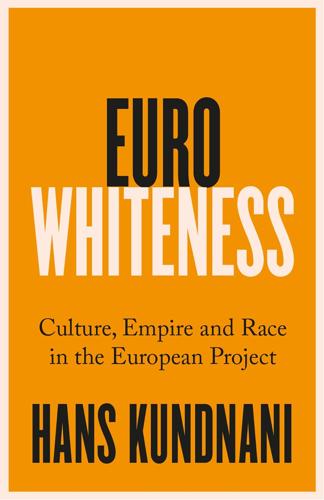
Eurowhiteness: Culture, Empire and Race in the European Project
by
Hans Kundnani
Published 16 Aug 2023
A geopolitical Europe and the pan-European movement In the second half of the nineteenth century, the racial theories of Enlightenment thinkers like Kant were developed into what became known as “scientific” (or “biological”) racism.34 Natural scientists in Europe and the United States went further in classifying and categorising races, establishing hierarchies between them in which Europeans were at the top; importantly, though, there were often also hierarchies among Europeans and the emergence of a new, modern form of anti-Semitism based not so much on alleged religious practices as perceptions of economic power. Influenced by Charles Darwin’s theory of evolution, “social Darwinism” emerged—and with it, eugenics and ideas of “racial hygiene”. In its combination of the scientific method and racism, scientific racism fused the two strands of European thought after the Enlightenment. The emergence of scientific racism coincided with, and was used to justify, the next stage in European colonialism—the period of high imperialism. Since the beginning of the Age of Exploration, there had always been competition among European countries for colonies. In fact, European wars, for example between Britain, France and Spain, had often included conflict over colonies, for example in the Caribbean and North America.
…
In the second half of the nineteenth century, this competition intensified as the number of “empty” spaces on earth decreased and as European powers like Belgium, Italy and Germany sought to acquire colonies of their own. But alongside competition there were also moments of co-operation between Europeans—for example at the Berlin Conference in 1884–5, which established norms and rules for the colonisation of Africa. However, although scientific racism seemed to Europeans to prove their superiority even more conclusively than ever, they were becoming more anxious about their position in the world. For most of the modern period, Europe had been ascendant as it expanded and colonised much of the world. From the end of the nineteenth century onwards, however, there was an increasing fear that this period of European dominance or hegemony was coming to an end.
…
Mills, “Kant’s Untermenschen”, pp. 169–171. 32.See Sankar Muthu, Enlightenment Against Empire (Princeton: Princeton University Press, 2003). 33.Kenan Malik, Not So Black and White. A History of Race from White Supremacy to Identity Politics (London: Hurst, 2023), p. 23. 34.Kant is often seen as one of the central figures in the birth of “scientific” racism. See Mills, “Kant’s Untermenschen”, p. 173. 35.Cited in Peo Hansen/Stefan Jonsson, Eurafrica. The Untold Story of European Integration and Colonialism (London: Bloomsbury, 2014), p. 42. 36.Weller, The Idea of Europe, p. 146. 37.Frantz Fanon, The Wretched of the Earth (Harmondsworth: Penguin, 1990), p. 252. 38.Hansen/Jonsson, Eurafrica, p. 41. 39.José Ortega y Gasset, Revolt of the Masses (New York: Norton, 1957 [1932]), p. 183. 40.See Weller, The Idea of Europe, p. 158. 41.Ute Frevert, “Europeanizing German History”, Bulletin of the German Historical Institute, Issue36, Spring 2005, pp. 9–24, here p. 19, https://www.ghi-dc.org/publication/bulletin-36-spring-2005 (last accessed 31 March 2023). 42.W.E.B.

War Without Mercy: PACIFIC WAR
by
John Dower
Published 11 Apr 1986
The original wartime U.S. national-character studies dealt with Japan, Germany, Burma, Siam, and Rumania, and those on Japan are generally regarded in retrospect as being by far the most interesting.2 A fundamental premise of the national-character approach was “the psychic unity of humankind”—the assumption, as Margaret Mead later expressed it, that “all human beings share in a basic humanity.” This reflected the antiracist influence of Franz Boas, who had been the immensely influential teacher of Mead and Ruth Benedict, among many others. Boas played a leading role in repudiating the theories of biological determinism, or “scientific racism,” which dominated the mainstream of European and American anthropological teaching throughout the nineteenth century. Many of the scholars who became associated with the national-character studies went out of their way to emphasize that the most recent and reliable work on racial differences by anthropologists in no way supported theories of biologically engendered superiority or inferiority in intellect or character.
…
This was not, however, a solitary stream, but one fed by two others: one that we may call slave words and colonial words, drawn from the experience of blacks and Chinese “coolies” in America, and from the colonial enterprise everywhere; and another stream of language which deserves the label “intellectual words,” involving the rationalization of racism beginning with the great debates among Spanish theologians and philosophers at the time of the conquistadores, and carrying through the “scientific racism” of the nineteenth century right up to the Pacific War. The image of the nonwhite in European eyes was initially shaped by the simultaneous encounter with black peoples in Africa and the natives of the Americas. The two were not treated identically. Blacks were enslaved, but until the eighteenth century were not seen as subjects capable of conversion to Christianity.
…
The impression that nonwhites remained, in effect, “natural slaves”—that is, persons destined to serve and subordinate themselves to the superior whites–was thus implicitly revitalized by the mainstream of Western rational inquiry and empirical investigation, a welcome finding indeed in an age of intensified empire building. Even with all the new theoretical language, scientific racism had a familiar ring. Here, for instance, is a well-known example of how nineteenth-century scholars used the concept of childishness to explain the characteristics of Asians and their place in the hierarchy of races: “As the type of the Negro is foetal, that of the Mongol is infantile. And in strict accordance with this we find that their government, literature and art are infantile also.
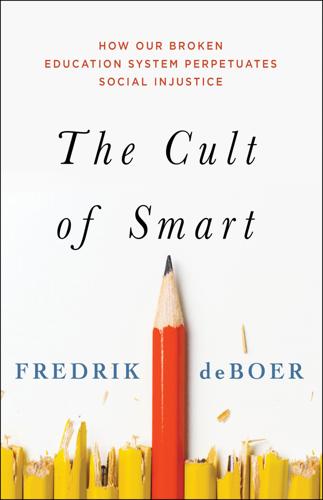
The Cult of Smart: How Our Broken Education System Perpetuates Social Injustice
by
Fredrik Deboer
Published 3 Aug 2020
(Besides, as I will discuss later, the ship has already sailed on selective breeding thanks to how we find partners in the twenty-first century, and liberals are more guilty of this selective breeding than anyone.) Both of these complaints, moreover, ignore an essential fact: none of the potential bad consequences of this way of thinking are inevitable if we make up our minds to prevent them. Ideas don’t bring about ugly regimes like eugenics and “scientific” racism. People do. But suppose you remain a skeptic about the genetic influence on intelligence. I can’t blame you. The topic is fraught. Even still, I would point this out: for whatever reason, different people end up with profoundly different academic ability. That, I hope, is indisputable. Not everyone is equally good at various academic tasks.
…
Moreover, we are the authors of our society’s destiny. Even if we had perfect knowledge at conception about a given child’s academic potential, there is no reason that we would be forced to act on this knowledge in an authoritarian way. And as for the notion that talk of natural talent must inevitably lead to “scientific racism,” I will argue that this way of thinking mistakes discussion of individual variation for discussion of group variation. “An individual’s academic talent is influenced by their genetic endowment” and “a race’s collective academic talent is the product of their genes” are two vastly different and incompatible claims.
…
No Child Left Behind (NCLB) “no excuses” education reform norm referencing North American Free Trade Agreement Nurture Assumption, The (Harris) nurture versus nature debate Obama, Barack on education as anti-poverty program on education as economic leveler on education gaps Education Secretary Arne Duncan and end of No Child Left Behind on equal opportunity and goal of more college-educated youth 2012 State of the Union address universal pre-K initiative Obamacare (Affordable Care Act) Ocasio-Cortez, Alexandria Office, The (television program) Office Space (film) opportunity, equality of and behavioral genetics and blank-slate philosophy of education and Dewey, John impossibility of and income inequality and liberalism and mobility and morality Obama, Barack on and poverty and progressivism and racism outcomes, equality of outcomes, plasticity of Palmer, Brian parenting and behavioral traits competitive parenting helicopter parenting and home environment and public policy under socialism and twin studies and universal childcare People’s Policy Project performance and achievement gaps pharmacy education phrenology Pinker, Steven The Blank Slate plasticity of outcomes Plomin, Robert positive liberty posters, aspirational and motivational postsecondary education degree creep and inequality master’s degrees and master’s programs PhDs professional degrees poverty and achievement gaps “controlling for poverty” “culture of poverty” and early childhood and equality of opportunity and mobility and selection effects and universal basic income and universal childcare premature birth professional degrees Programme for International Student Assessment (PISA) progressivism and discomfort with inherent ability and education as economic leveler and educational funding and equality of opportunity and Medicare for All on negative and positive liberty and social inequality and social mobility and student loan debt forgiveness and universal childcare and veil of ignorance ProPublica pseudoscience and behavioral genetics eugenics phrenology pseudoscientific racism public schools, blame placed on Purdue University “race realism” race science racial achievement gaps racism Act Now to Stop War and End Racism (ANSWER) and aspirations to winning and behavioral genetics durability of and equality of opportunity pseudoscientific racism and “race realism” scientific racism structural racism and veil of ignorance Rand Education Rawls, John Reeves, Richard reform. See education reform movement reforms, realistic elimination of charter schools loosening standards lowering legal dropout age reduced focus on college education universal childcare and afterschool programs Regents Examination (New York) relative learning and blank-slate philosophy of education definition of and education gaps and education journalism and Flynn effect relative learning compared with and value of college degrees Republican Party and education policy and health care policy revolutionary socialism Roosevelt, Theodore Rove, Karl Rumsfeld, Donald San Diego Metropolitan Career and Technical High School Sanders, Bernie SAT and College Learning Assessment (CLA) and gender lack of research control for as norm-referenced and socioeconomics and test prep industry school choice school reform.
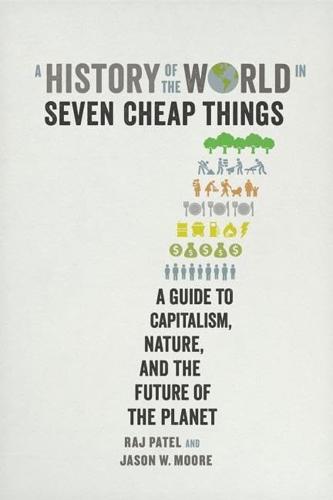
A History of the World in Seven Cheap Things: A Guide to Capitalism, Nature, and the Future of the Planet
by
Raj Patel
and
Jason W. Moore
Published 16 Oct 2017
Among many horrors, consider that on January 9, 1349, all of Basel’s Jewish children were separated from their parents and forcibly baptized and then the city’s six hundred adult Jews burned at the stake “on a sandbank on the Rhine.”12 Thousands were immolated in city-state-sponsored pogroms, and the members of some Jewish communities took their own lives before they could be tortured and killed by their neighbors. These atrocities happened despite repeated mandates from Rome. The Catholic Church’s power over Europe’s commercial centers was starting to wane, while the precedent that some people might be transformed into things had been set. SCIENTIFIC RACISM AND COLONIAL POLICY Blood purity, the state’s increasing power relative to Rome, and a body of literature sanctioning the idea of natural orders of humans were all in place. They were used to inform and propel new kinds of governance, and once again the site where new kinds of social-scientific control were practiced was the colonial frontier.
…
This is the context in which the modern liberal subject was made, at a colonial frontier. It shouldn’t be surprising that the modern legal person was defined and policed as strictly as the boundaries of the property that this person was allowed to own.32 Meld these concerns with eighteenth-century scientific racism, and it becomes easier to see how the liberal subject was born not only a man but white too. The limits of the liberal subject were never more clearly demonstrated than when slaves tried to claim self-ownership. The Declaration of the Rights of Man, promulgated in 1789 during the French Revolution, proclaimed all men free and equal.
…
See also fuel sources Cheap Food: overview, 32–34, 138–141; animal food industry, 155–58; climate change and, 159–160; industrialization and, 141–155; processed foods, 157–58. See also food systems Cheap Lives, 35–38, 189 fig. 6; overview, 35–38, 180–85; alternative nationalisms, 198–201; defined, 37; in Ireland, 190–92; liberal policing, 192–95; massive exclusion and, 24; nationalism and, 195–98; scientific racism, 185–190. See also governments Cheap Money: overview, 64–66; bankers and governments, 85–88; contemporary threads, 88–90; European silver, 71–74; finance of ecology, 67–70; Genoese banking, 74–77; global silver trade and, 81–85; monetary origins, 70–71; war financing, 78–81. See also bankers/banking; financial sector Cheap Nature: overview, 44–48; capitalism and, 24; Capitalocene appreciation, 62–63; early colonialism and, 48–51; Nature/Society split, 51–58; private property, 58–62.
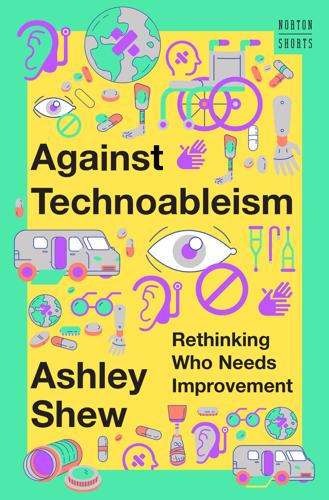
Against Technoableism: Rethinking Who Needs Improvement
by
Ashley Shew
Published 18 Sep 2023
Saneism (bias based on mental traits), audism (bias against deafness), and fatphobia are all manifestations of ableism. Perhaps less intuitively, white supremacy, racism, sexism, and xenophobia are also intertwined with ableism. For example, ableism is bound up in the ugly history of scientific racism that was used to justify prejudice against non-white people. IQ testing and racial measurement norms, both constructs of nineteenth-century scientific racism, still underpin how people see disability today. Ableism has also historically been used as a justification for racism and xenophobia in U.S. immigration policies, which depicted some Western Europeans as superior in intelligence, healthier and more resistant to disease, better citizens less motivated to crime, and all-around better candidates for immigration than those from elsewhere.
…
See neurodiversity neuroqueer, 102 neurotypical, 81–82, 83 Nielsen, Kim, 23 normative behavior patterns, 110 Not Dead Yet, 94 “nothing about us without us,” 109 Nović, Sara, 71, 72 Ollibean (Sequenzia), 98 Onaiwu, Morénike Giwa, 19 overstimulation, 104 Paralympics, 13 Parastronauts, 128 Patient No More, 31 Pavlov, Ivan Petrovich, 100, 140n29 Peace, Bill, 30, 40, 51, 54, 70 person-first language, 25–26 Peters, Gabrielle, 7 Piepzna-Samarasinha, Leah Lakshmi, 114, 120, 124 Pistorius, Oscar, 49 pitiable-freaks trope, 36–37, 88–89 Plains Indian Sign Language, 23 “Poet with a Cattle Prod” (Lovaas), 102–3 Pokémon, 11, 107, 108 pollution, 115–16 post traumatic stress disorder (PTSD), 3, 11, 97, 99 Postural Orthostatic Tachycardia Syndrome (POTS), 85, 118 post-viral syndromes, 52, 118, 141n38 POTS (Postural Orthostatic Tachycardia Syndrome), 85, 118 Presser, Lizzie, 58 Price, Margaret, 85 professional/expert treatments, 2–3, 10–11, 17, 19–20, 50–51, 100, 123, 131 Project Unicorn, 69 prostheses advanced technology and, 46–47, 49, 50, 68 arms and hands, 67–69 costs of, 16, 66–67 deterioration and usage, 60, 63–64, 139n16 disabled experience vs. media narratives, 53–55, 60, 61, 63 legs and, 64–67 maintenance and, 72, 75–76 personalized requirements of, 15–16 sexual abuse and, 16 technology choices and, 16–17, 69–70 as tools, 14–15, 54 “Prosthetics Do Not Change Everything” (Reeves), 68–69 PTSD (post traumatic stress disorder), 3, 11, 97, 99 Pulrang, Andrew, 30 Purdy, Amy, 49, 61 Quiet Hands (Bascom), 96 racism, 17, 18, 25 Radford Army Ammunition Plant (RAAP), 117 radical empiricism, 139n16 Real Experts, The (Sutton), 19, 106 Reeves, Jen Lee, 8, 68, 139n17 Reeves, Jordan, 8, 139n17 refrigerator mother theory, 41 Rehabilitation Act (1973), 27 rollator, 48, 76 Samuels, Ellen, 85 saneism, 17 Satterwhite, Emily, 117, 141–42n43 #SayTheWord campaign, 28, 29 Schalk, Sami, 42, 43, 85 scientific racism, 17 sensory regulation, 97 Sequenzia, Amy, 98 “Seven Traits for the Future” (MacIntyre), 119–20, 141n39 sexism, 17 sexual abuse, 16 shameful sinners trope, 40–41 Sheppard, Alice, 62 Shivers, Carolyn, 106, 109–10 Singer, Judy, 81 Sins Invalid, 124, 125 Sledge, Heath, 139n16 Snyder, Sharon, 92 Sobchack, Vivian, 138n15 social model of disability addressing social structures, 86–87, 88 disability from societal stigmas/barriers, 22–23 environmental design and, 119–20 vs. medical model of disability, 31, 139n22 neurodiversity/neurodivergence and, 82, 84–85, 139n21 technological solutions and, 71–72 social scripting exercises, 110 Society for Disability Studies, 62 space travel disabling effects, 118–19, 142n50 Spanish Flu (1918), 52 Sparrow, Maxfield, 98–99 spectrum disorder.
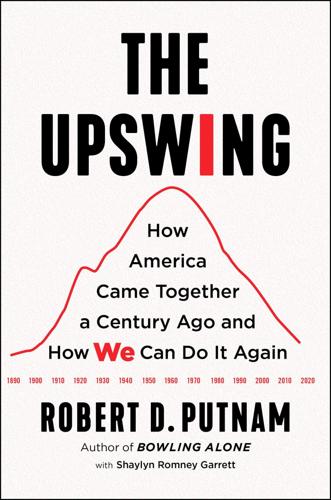
The Upswing: How America Came Together a Century Ago and How We Can Do It Again
by
Robert D. Putnam
Published 12 Oct 2020
.… Attempts to overrule evolution—as by alleviating the plight of the poor—were both immoral and imprudent.”12 That version of social Darwinism, launched around 1870, reached its peak influence between 1890 and 1915 and swept through much of the intellectual and upper middle classes as the Gilded Age waxed and then began to wane. Social Darwinism gave birth to scientific racism,13 to eugenics, and to a pseudo-biological defense of laissez-faire capitalism. Scientific racism offered a convenient rationale for the contemporary efforts of Southerners and their Northern sympathizers of the so-called “Redemption Era” to impose Jim Crow oppression and ridicule on freed slaves. To wealthy residents of Manhattan’s Upper East Side, disturbed by muckraker Jacob Riis’s appalling photographs of destitute slum-dwellers of the Lower East Side in How the Other Half Lives (1890), social Darwinism gave reassurance that they deserved their wealth.
…
This is clearly reflected in the number of black members of Congress, which did not rise significantly until after 1965, as Figure 6.7 illustrates—a clear “hockey stick” pattern of change.62 Black Americans’ exclusion from the mainstream was a concomitant of a widespread culture of white supremacy, as historian Henry Louis Gates, Jr. has documented in vivid detail in his book Stony the Road: Reconstruction, White Supremacy, and the Rise of Jim Crow (2019). The most prominent example of this was the rebirth of the KKK in 1915 in response to the film Birth of a Nation. Scientific racism, the belief in the biological inferiority of nonwhite people, pervaded the academy and popular culture for decades before and after Reconstruction. Racist depictions of African Americans in entertainment and advertising, narratives of black men as sexual predators, and gruesome postcards celebrating lynchings were common in the South, but also the North, for much of the twentieth century.63 Only in the 1970s did representation of people of color in the media begin to break with the viciously racist stereotypes of the 1950s and 1960s.64 And racial intermarriage was feared and decried—as well as outlawed in many states—until the Supreme Court declared such legal restrictions unconstitutional in 1967, unleashing another long-delayed change.
…
In order to stave off the demonstration, FDR issued Executive Order 8802, banning racial discrimination in federal agencies and defense industries employed in the war effort.113 World War II raised the hopes of both blacks and whites for a turning point in the struggle for racial justice. The scientific racism that had pervaded the academy and provided a basis for discrimination had been discredited in the wake of the Holocaust.114 Civil rights leaders and the international press highlighted the hypocrisy of fighting for human rights abroad, while tolerating racism at home.115 Thus foreign policy pressures became a major motivation for postwar and Cold War administrations to act on civil rights.

Dark Matters: On the Surveillance of Blackness
by
Simone Browne
Published 1 Oct 2015
Since then, Banania’s advertising campaigns continue to convey what Anne McClintock calls “commodity racism,” where “mass-produced consumer spectacles” express “the narrative of imperial progress.”25 McClintock explains that commodity racism is distinct from scientific racism in its capacity to expand beyond the literate, propertied elite through the marketing of commodity spectacle. If, after the 1850s, scientific racism saturated anthropological, scientific and medical journals, travel writing and novels, these cultural forms were still relatively class-bound and inaccessible to most Victorians, who had neither the means nor education to read such material.
…
SILVER WIRE AND SMALL IRONS: EPIDERMALIZATION Epidermalization, Stuart Hall writes, is “literally the inscription of race on the skin.”23 It is the disassociation between the black “body and the world” that sees this body denied its specificity, dissected, fixed, imprisoned by the white gaze, “deafened by cannibalism, backwardness, fetishism, racial stigmas, slave traders, and above all, yes, above all, the grinning Y a bon Banania.”24 “Y’a bon” is the slogan for Banania, a banana flour–based chocolate drink first sold commercially in France in the early 1900s and popularized with a caricature of a smiling, red fez–wearing Senegalese soldier with his rifle at his feet gracing the drink’s packaging. Such commodity packaging is invested with the scientific racism, like that expressed by both Long and Barbot, which depicted Africans as servile, primitive, and ranked as an inferior species. An earlier campaign for this product featured an image of a woman, ostensibly a Caribbean woman, flanked by two banana bunches and holding an open can of Banania in each hand, pouring its contents onto the celebrating and joyous French masses pictured below.
…
See also panopticon Private Lives and Public Surveillance (Rule), 14 prototypical whiteness, 26–27, 92, 110, 113–18, 122, 162, 181n86 Public Enemy, 66 Pugliese, Joseph, 113 race: biometric information and, 25–27, 39, 70–74, 89–102, 108–20, 140–45; black mobility and, 11, 21, 24–25, 62–83, 91, 136–59, 161; epidermalization and, 5–7, 16–17; gender’s intersections with, 10–11, 26–29, 57–58, 94, 110–11, 128–29, 131–36, 156–59; racial baggage and, 28–29, 131–36, 148–49; sorting and, 14–18, 26, 55–57, 77–83, 93–102, 109–18; white racial frame and, 95, 180n60 racial epidermal schema, 49 racializing surveillance, 8, 16–18, 21, 32, 42, 50–58, 68, 78, 82, 91–92, 97–102, 114, 128, 161–64 “Racial Sensitivity” (Better Off Ted), 189n5 racism: antiblack racism and, 5, 9–11, 21, 61, 95, 105, 110, 143; black antiracist counterframing and, 108, 180n60; commodity racism and, 97–98; facial recognition technology and, 109–12, 112, 161–64, 180n71, 181n88, 189n5; gender and, 131–36, 156–59; policing strategies and, 13; racial baggage and, 28–29, 131–36, 148–49; scientific racism and, 95–97, 111–14; sexuality and, 10–11, 50, 96–97, 101, 146–51, 171n73; surveillance’s resistance and, 6–7, 9–10, 12–13, 21, 23, 31–32, 36–38, 173n124; TSA and, 131–56. See also airports; blacks; controlling images; epidermalization; gaze, the Ramsey, Cato, 74, 87 Ranger (ship), 85 reality television, 38, 63–69, 174n1, 174n6 RealTechSupport, 116–18, 181n97 Reddit, 18, 167n51 redditveillance, 18 Rediker, Marcus, 42, 48, 50 Regulation Act, 48 Reveley, Willey, 33 “Reverse Cowgirl” (South Park), 147–52, 187n64 Rhizome, 108 Rhode, Robin, 33, 58–59 Rhodes, Lorna, 40–41 Rice, Condoleezza, 28, 168n78 Richie, Lionel, 61 Rights of Passage (Salter), 175n19 Roberts, Charles, 53–54 Robeson, Paul, 44 Rodgers, Tara, 146 Rodriguez, Dylan, 10 Rogers, Aunt Ferebe, 167n63 Roth, Evan, 134, 155, 159 Royal Gazette, 54, 72, 85, 101 Rule, James, 14 “Run, Nigger, Run” (song), 22, 167n63 runaway notices, 11, 21–23, 26, 50–57, 71–73, 82, 91–93, 100, 179n43 Salter, Mark B., 135, 175n19 San Antonio International Airport, 138 Sartre, Jean-Paul, 2 Scarred Chest (Thomas), 126 Scott, A.
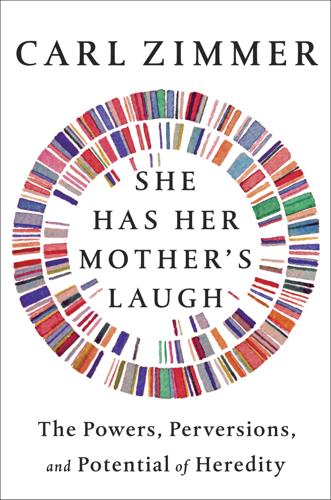
She Has Her Mother's Laugh
by
Carl Zimmer
Published 29 May 2018
The eugenicists submitted The Kallikak Family as evidence that Buck’s children would be doomed. The Supreme Court approved the state’s petition, and Buck was sterilized. The court’s decision led to a boom in sterilizations in the years that followed. In the 1920s, Goddard’s work with the US Army also continued to fuel scientific racism. Eugenicists pointed to the difference between black and white soldiers on the army tests as proof of hereditary differences in intelligence between the races, and that the races should not be allowed to intermarry. The eugenicist Madison Grant declared that miscegenation was “a social and racial crime of the first magnitude.”
…
Dobzhansky defined races as nothing more than “populations which differ in the frequencies of some gene or genes.” After World War II, a number of other geneticists and anthropologists joined Dobzhansky’s campaign. Their efforts culminated in an official statement from the United Nations condemning scientific racism as baseless. But Dobzhansky’s new allies pushed the attack further than he had. They demanded scientists give up the term race altogether. It was so fraught with dangerous assumptions that it had to be discarded. The anthropologist Ashley Montagu, for example, switched to using the term ethnic groups.
…
Science, July 28. http://www.sciencemag.org/news/2014/07/smoking-mothers-may-alter-dna-their-children (accessed August 4, 2017). Baltimore, David, Paul Berg, Michael Botchan, Dana Carroll, R. Alta Charo, George Church, Jacob E. Corn, and others. 2015. “Biotechnology: A Prudent Path Forward for Genomic Engineering and Germline Gene Modification.” Science 348:36–38. Barkan, Elazar. 1992. The Retreat of Scientific Racism: Changing Concepts of Race in Britain and the United States Between the World Wars. Cambridge: Cambridge University Press. Barnes, L. Diane. 2013. Frederick Douglass: Reformer and Statesman. New York: Routledge. Baron, David. 2003. “DNA Tests Shed Light on ‘Hybrid Humans.’” National Public Radio, August 11. http://www.npr.org/templates/story/story.php?
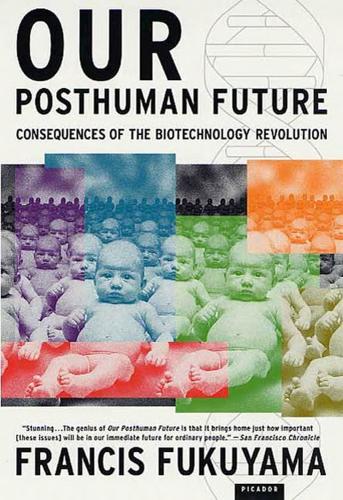
Our Posthuman Future: Consequences of the Biotechnology Revolution
by
Francis Fukuyama
Published 1 Jan 2002
Army began widespread intelligence testing of new recruits, for the first time providing data on the cognitive abilities of different racial and. ethnic groups.7 These data were seized on by opponents of immigration as evidence for the mental inferiority of, among others, Jews and blacks. In one of the great early defeats of “scientific racism,” the anthropologist Franz Boas showed in a carefully constructed study that immigrant children’s head sizes and intelligence converged on those of the native-born when the children were fed an American diet. Others demonstrated the cultural bias embedded in the army intelligence tests (the tests asked children to identify, among other things, tennis courts, which most immigrant children had never seen).
…
Even if we do not posit any breakthroughs in genetic engineering that will allow us to manipulate intelligence, the sheer accumulation of knowledge about genes and behavior will have political consequences. Some of these consequences may be very good: molecular biology may exonerate genes from responsibility for important differences between individuals or groups, just as Boas’s research on head sizes debunked early-twentieth-century “scientific racism.” On the other hand, the life sciences may give us news we would rather not hear. The political firestorm set off by The Bell Curve will not be the last on this subject, and the flames will be fed by further research in genetics, cognitive neuroscience, and molecular biology. Many on the Left would have liked simply to shout down arguments about genes and intelligence as inherently racist and the work of pseudoscientists, but the science itself will not permit this kind of shortcut.
…
The reason for this is that since African-Americans are disproportionately represented in the U.S. criminal population, any suggestion that there is a genetic component to crime is thought to imply that blacks are somehow genetically predisposed to be criminals. No serious academic researcher working on this issue has ever suggested anything of the sort since the bad old days of scientific racism, but that has not prevented people from harboring deep suspicions that anyone even interested in this topic must have racist motives. Such suspicions were fed in the early 1990s by Frederick K. Goodwin, a noted psychiatrist and head of the federal Alcohol, Drug Abuse, and Mental Health Administration.
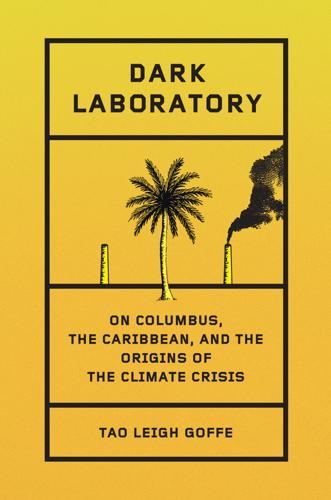
Dark Laboratory: On Columbus, the Caribbean, and the Origins of the Climate Crisis
by
Tao Leigh. Goffe
Published 14 Mar 2025
Structural inequalities, including racism, sexism, homophobia, transphobia, classism, and ableism, have limited the pool of scientists and thus scientific approaches and solutions in the climate crisis. In truth, technological innovation is hindered by the refusal to acknowledge the ills of scientific racism and that eugenics is not science. If we do not grapple with how it could have been accepted as science, we are doomed to repeat the same mistakes. Eugenicist and white supremacist principles are embedded in climate science—not to mention that they form the foundation of natural history as a discipline.
…
As a biologist, Davenport was deeply inspired by Francis Galton’s biometric methods for interpreting evolution—the theory of Galton’s cousin, Charles Darwin. Davenport was also inspired by Karl Pearson, the British mathematician, which leads us to how biostatistics are at the core of the race science theorization. Species thinking applied to humans is predated by a hundred years by scientific racism, the nomenclature of classification that Swedish taxonomist Carl Linnaeus developed. The taxonomic impulse is the taxidermy impulse. Though it may seem intuitive to scientists that human beings seek to categorize based on a desire for pattern recognition, it is a far leap to the pathological logic of eugenics, a genocidal science.
…
Flooding New York City basements and subway systems? Devastating fires in Hawaiʻi? Tragedies accumulate toward the earth’s exhaustion as the grievances mount. How can unwritten climate policies save us without acknowledgment of the violence of the Edenic origin story? To the world’s collective detriment, scientific racism is embedded within Western natural science, including climate science. Omitting race while it remains a material reality is both racist and unscientific. Western science has been not only complicit in racism and colonialism but it has also been a core tool to enforce it. This crisis is ours, and we must own it because it possesses us.

More Everything Forever: AI Overlords, Space Empires, and Silicon Valley's Crusade to Control the Fate of Humanity
by
Adam Becker
Published 14 Jun 2025
There are certainly differences in ability in various areas from person to person, but there’s no monolithic trait that explains all or even most of those differences. And there’s no evidence that there are disparities in innate ability that break down along the socially constructed boundaries of race. This was part of a broader enterprise of scientific racism that reached its height in the late nineteenth and early twentieth centuries, with “scientific” arguments for eugenics programs made by eminent professors of genetics, evolution, and statistics such as R. A. Fisher who advocated for sterilization of “feeble-minded high-grade defectives” and paying wealthy, educated people to have more kids.
…
“Human biodiversity” (HBD) is a pseudoscientific set of claims about purported differences in ability between different races of people that are rooted in genetics—basically, warmed-over white supremacy with a patina of scientific jargon. “This idea of human biodiversity is a right-wing conspiracy theory,” says author and expert on “scientific” racism Angela Saini. “It’s a pseudoscientific idea about race that was debunked decades ago, many decades ago. We are one human species and that HBD argument is essentially pushing back against that, which is incredibly divisive.”154 The scientific case against HBD is extremely strong.155 Yet in an April 2024 survey of Siskind’s readers, nearly a full third of respondents reported having a favorable or very favorable opinion of HBD.156 Siskind himself is far more credulous about HBD than the evidence warrants.
…
“People use the claim ‘there’s no such thing as biological race’ for a lot of purposes, mostly to confuse and deceive people.”159 He claims that IQ is mostly genetic, believes the myth that Ashkenazi Jews score well on IQ tests because of genetics, and contends that a eugenics program aimed at increasing human intelligence would work. He supports the idea of a Nobel-Prize-winners-only sperm bank as a means to this end, though he says, “I wouldn’t call myself a ‘eugenicist.’”160 At its heart, the delusion of HBD is about the same thing scientific racism has always been about: the idea that some kinds of people are inherently better than others. This ties in neatly with the central facts of the rationalist worldview—namely, their entire take on AI. Their arguments about an intelligence explosion hinge on the idea of intelligence as an inherent trait of an AI, one that it has by virtue of its design and that can be increased by “improving” the design of the next one.
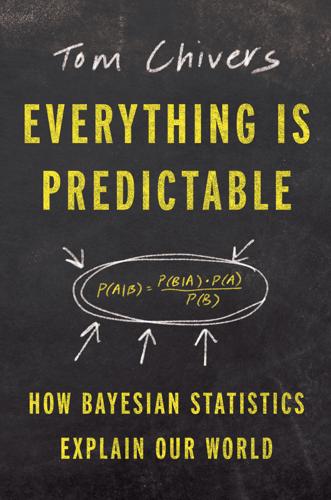
Everything Is Predictable: How Bayesian Statistics Explain Our World
by
Tom Chivers
Published 6 May 2024
(If you were hoping to be acquitted, you would prefer to be a well-educated woman over thirty, by the way, or at least you would in early nineteenth-century France.) This was hugely controversial: it seemed to be in conflict with the idea of free will, that our behaviors and choices were the product of our attributes. It also set the scene for what would later be called “scientific racism”: one follower of Quetelet’s, Alphonse Bertillon, found that among the young male population of a town called Doub, there seemed to be two peaks to the curve, as there would be if you measured the heights of men and women; there were two “average men” in Doub. He suggested that this was because Doub’s inhabitants were of two races, the Celts and the Burgundians.72 This turned out to be a mistake: it was shown some years later that Bertillon had screwed up as he converted from inches to centimeters and had made the data look as though it were saying something it wasn’t.
…
He coined the phrase “nature and nurture” to refer to the twin inputs of heredity (what we’d now call genetics) and environment. But what he really wanted to do was to create a science of human breeding—eugenics, another phrase which he came up with. I want to be careful here, because there’s a tendency among some commentators to link all research into human intelligence and its heritable nature with eugenics or “scientific racism.” We really can measure human intelligence pretty well, with the imperfect but generally useful metric of IQ, and it really is heritable—clever studies designed to separate the input of genes and environment show that about half of the variance in IQ is caused by the genes we inherit from our parents.77 It’s a well-established, much-repeated finding, and intelligence research is good, important science.
…
Scruff, 121 Munafo, Marcus, 170 N naive Bayes spam filtering, 322 National Hospital for Neurology and Neurosurgery, 295 National Institute for Health and Care Excellence (NICE), 14, 16, 198 National Research Council, 250 NATO, 250 Nature (journal), 124 “nature and nurture,” 88 Nature Human Behaviour, 143, 158 Necker cub, 275 Nelson, Leif, 121, 123 nerve signals, 272, 291–292, 296–297 Neuroreport, 303 Newington Green, North East London, 71 Newton, Isaac, 31, 33–34, 53 Neyman, Jerzy, 91 NHS, 14, 16 NICE, see National Institute for Health and Care Excellence Nonconformists, 24–31, 71 non-invasive prenatal testing (NIPT), 16–17 normal distribution, 53–61 and Aldolphe Quetelet, 79–80 in varied settings, 85–87 Northamptonshire, 25–26 Nosek, Brian, 128 noumena, 272 novel results, 124–126 nuclear war, threat of, 249 nudging, 119 null hypothesis, 99–103 O objective Bayesianism, 83* Observations on the Nature of Civil Liberty, the Principles of Government, and the Justice and Policy of the War with America (Price), 71–72 Occam’s razor, 203–209 Octopus (program), 170–171 odds describing probabilities as, 191–192 in Let’s Make a Deal example, 245–246 Office nor National Statistics, 257* “Of Miracles” (Hume), 74, 75 O’Hagan, A., 111 OpenAI, 221 Open University, 157 optical illusions, 273–283, 305 optional stopping, 147 Othello (board game), 223–225 Othello-GPT, 224–225 outcomes, number of possible, 40–46 outside views, 257, 258 overconfidence, 262–263 overfitting, 219–220 P Pacioli, Luca, 39, 40 Palestinian Liberation Organization, 260 Parade magazine, 243 paradox of the heap, 267–268 Pascal, Blaise, 37–46, 54 Pascal’s triangle, 43–46, 55 Patau’s syndrome, 17 Pavlov, Ivan, 290 Pearson, Egon, 90, 91 Pearson, Karl, 89–94, 289 Peirce, James, 30 perception, 269–276, 295 perestroika, 251 Perry, Katy, 277 p-hacking, 123–124, 127–128 pharmaceutical research, 165–166 phenomena, 272 Philosophical Transactions, 24 Philosophical Transactions of the Royal Society, 72 Pilgrim’s Progress, The (Bunyan), 23 Pinker, Steven, 236 Pitt, William, the Elder, 72 Plato, 52, 271 polonium-210, 260 Popper, Karl, 133, 135, 139–144, 330 positive predictive value, 17 possible outcomes, 40–46 posterior probability, 194, 257–258 posterior probability distributions, 68–69, 153, 165 postmodernism, 330 precision in forecasting, 252 in predictions, 292–294 of senses, 288–289 Predictably Irrational (Ariely), 230 prediction error, 286, 291–294, 306–308, 327 predictions ability to make, 1–2 by AI, 221–225 as beliefs, 333 everyday nature of, 333–334 and experiences, 291, 314 genomes as, 323–324 made by our brains, 270, 286–287 and saccades, 301 as stronger than reality, 290 of world around us, 327–328 predictive processing, 295 preferences, strength of, 198–201 Presbyterians, 25, 29–30 Price, Richard, 24, 30, 31, 70–77 Price’s equation, 323 Priestly, Joseph, 32–33 priming, 118–120, 230 prior probability, 9–10, 66 in AI training, 219 in Bayesian and frequenist statistics, 82–84 in categorization, 265–267 and changing beliefs, 212–215 and COVID-19 testing, 13 in decision making, 180–181, 183 in DNA evidence, 18 finding, 159–167 in genomes, 324 hyperpriors, 210–212 as intuitive, 142 necessity of, in Bayesianism, 263 outside view as, 257 strength of, 281, 328–329 as subjective, 83, 106–107, 329–330 uniform priors, 82, 95–97, 162–134 used in research, 129–137 probability distributions, 68–69, 149–155 probability(-ies) as basis of Bayes’ theorem, 3–4 conditional probability, 4 described as odds, 191–192 existence of, 5–6 inferential probabilities, 48, 53, 62–63, 73 inverse probability, 20, 61, 64, 91 posterior probability, 194, 257–258 prior probability (see prior probability) sampling probabilities, 48, 53, 64, 73, 98–99 study of, 35–46 as subjective, 65–71 of zero, 190–192 probability theory, 46, 77, 258 Probability Theory: The Logic of Science (Jaynes), 185–186 Proceedings of the Royal Society of London, 106 propositional logic, 233–234 prostate cancer screening, 14–16 prostate-specific antigen (PSA), 14 psilocybin, 309 psychedelic drugs, 308–313 psychic powers, 120–121, 212–215 publication, of studies, 124–126, 169–171 “publish or perish,” 124, 169 Puritans, 25 p-value, 99–103 purpose of, 129–130 setting appropriate, 158 Q Quakers, 25 quality-adjusted life years (QALYs), 198 quality-control assessment, 108 Quetelet, Aldolphe, 78–81, 83 “Quetelismus,” 80 Quidditch, 39* quincunx, 86 R racism and frequentism, 84–94 “scientific racism,” 80 Ramsey, Frank, 106–107, 197 rationality, 227* Rationality: from AI to Zombies (Yudkowsky), 182 reaching statistical significance, 101 reaction time, 272–273 reading, illusions in, 280–281 Reagan, Ronald, 249, 250, 251 reality as controlled hallucination, 283–287 predictions stronger than, 290 reasoning and confirmation bias, 324–325 in real world situations, 236 recency bias, 240 Redwood, John, 12 reference class, 257 Registered Reports, 169–170 regression to mediocrity, 87 regression to the mean, 87 relative belief ratio, 143 replication crisis, 117–129, 172, 230 Reproducibility Project, 128 research beliefs in, 134–135 bias in, 93 into intelligence, 88–94 pharmaceutical, 165–166 posterior probability distributions in, 165 prior probability in, 129–137 publication of, 124–126, 169–171 researcher effect, 310 Robinson Crusoe (Defoe), 23 Royal Air Force, 239 Royal Geographical Society, 85 Royal Society, 27 Royal Statistical Society, 65, 112, 115 Rubio, Marco, 237 rule of succession, 97–98 Russell, Bertrand, 92 Rutherford, Adam, 93 S saccades, 300–301 sample size and degree of certainty, 49–52 and standard deviation, 60 sampling probabilities, 48, 53, 64, 73, 98–99 Sanders, Bernie, 237 San people, 236 schizophrenia, 303–308 Schultz, Wolfram, 290 science, 117–173 as Bayesian, 329–331 determining statistical significance in, 144–155 finding your priors, 159–167 hypothesis testing, 137–144 Lindley paradox, 155–159 replication crisis in, 117–129 use of priors in research, 129–137 Science (journal), 124 “scientific racism,” 80 SD (standard deviation), 57–59, 90 second derivative, 34 self-organizing systems, 315–316 Selvin, Steve, 242 senses attention to data from, 304–305 precision of, 288–289 September 11 terrorist attacks, 240 Seth, Anil, 269–270, 287, 288, 300, 308 Shanahan, Murray, 221, 222–223 Shaw, George Bernard, 92 Shelley, Mary, 71 Shopenhauer, Arthur, 264 Simmons, Joseph, 121, 123 Simonsohn, Uri, 121, 123 simplicity, 203–204 Simpson, Nicole Brown, 19 Simpson, O.

The State and the Stork: The Population Debate and Policy Making in US History
by
Derek S. Hoff
Published 30 May 2012
One of Franklin’s goals, therefore, was to convert fear of colonial expansion into rejoicing that such expansion would further augment England’s imperial power.25 Edmund Morgan, one of Franklin’s leading biographers, writes that Franklin “took it as a given that the wealth of any country lay in the numbers of its people, and proceeded to show (before Malthus was born) that the growth of population was governed by economic opportunity, that economic opportunity in America would for a long time be almost unlimited because of the unique abundance of land, that population in America increased accordingly, by natural propagation, far more rapidly than population in England and more rapidly than English manufac- 20 chapter 1 turers would be able to supply. It was therefore unnecessary and unwise to restrain American manufacturing, unwise to do anything to discourage economic opportunity and growth within the empire.”26 Franklin is also well known for anticipating scientific racism and eugenics. He desired the preservation not only of the British Empire but also of an empire of Englishmen, a reactionary goal given the ethnic diversity of the colonies.27 Franklin disliked the immigration to the colonies of African slaves and also Germans (the latter with their “swarthy Complexion”).28 “This will in a few Years become a German Colony,” he lamented in 1749 after observing several thousand German immigrants arrive at Philadelphia’s docks.29 Like many in this era, Franklin assumed that human population growth followed the same biological laws as plants and animals.
…
This older republican line of thought merged with the newer doctrine of “Manifest Destiny,” a racialized ideology claiming that the American people possessed not only the wherewithal and the right but indeed the duty to expand the boundaries of the United States and spread the trappings of their nearly perfect democracy across the entire continent. Notions of American exceptionalism and the superiority of America were as old as the first colonies, but Manifest Destiny expanded these ideas, emerging in the second quarter of the nineteenth century as the product of several factors: scientific racism and the social construc- 40 chapter 1 tion of a unique and superior “Anglo-Saxon race”; the development of an American Romantic movement; confidence resulting from astonishing technological and economic progress; and an impulse to rationalize slavery and the brutal treatment of Native Americans.
…
“Our population has become comparatively dense; our new lands are exhausted,” read the Democratic Quarterly Review in 1844.157 Expansion was thus needed to stave off the creation of permanent and hostile classes. More mundanely, westward expansion would reduce tensions between native-born and immigrant workers within the Democratic Party.158 According to historian Thomas Hietala, Democrats’ recourse to Manifest Destiny reflected a “crisis of confidence” more than it did the rise of scientific racism—and central to the anxieties prompting western adventures were fears of population growth and modernization.159 Many Democrats, especially in the South, supported several Jef- 42 chapter 1 fersonian policies designed to slow down modernization, such as keeping the public lands cheap and trade as free as possible—which would ensure that factories remained in Europe—but territorial expansion was absolutely essential.

Enlightenment Now: The Case for Reason, Science, Humanism, and Progress
by
Steven Pinker
Published 13 Feb 2018
The standard case for the prosecution by the left may be found in a 2011 review in The Nation by the historian Jackson Lears: Positivism depends on the reductionist belief that the entire universe, including all human conduct, can be explained with reference to precisely measurable, deterministic physical processes. . . . Positivist assumptions provided the epistemological foundations for Social Darwinism and pop-evolutionary notions of progress, as well as for scientific racism and imperialism. These tendencies coalesced in eugenics, the doctrine that human well-being could be improved and eventually perfected through the selective breeding of the “fit” and the sterilization or elimination of the “unfit.” Every schoolkid knows about what happened next: the catastrophic twentieth century.
…
Yet the qualities that we prize in humanities scholars—context, nuance, historical depth—often leave them when the opportunity arises to prosecute a campaign against their academic rivals. Science is commonly blamed for intellectual movements that had a pseudoscientific patina, though the historical roots of those movements ran deep and wide. “Scientific racism,” the theory that races fall into an evolutionary hierarchy of mental sophistication with Northern Europeans at the top, is a prime example. It was popular in the decades flanking the turn of the 20th century, apparently supported by craniometry and mental testing, before being discredited in the middle of the 20th century by better science and by the horrors of Nazism.
…
Darwin argued that humans are closely related members of a single species with a common ancestry, that all peoples have “savage” origins, that the mental capacities of all races are virtually the same, and that the races blend into one another with no harm from interbreeding.33 The historian Robert Richards, who carefully traced Hitler’s influences, ended a chapter entitled “Was Hitler a Darwinian?” (a common claim among creationists) with “The only reasonable answer to the question . . . is a very loud and unequivocal No!”34 Like “scientific racism,” the movement called Social Darwinism is often tendentiously attributed to science. When the concept of evolution became famous in the late 19th and early 20th centuries, it turned into an inkblot test that a diverse assortment of political and intellectual movements saw as vindicating their agendas.
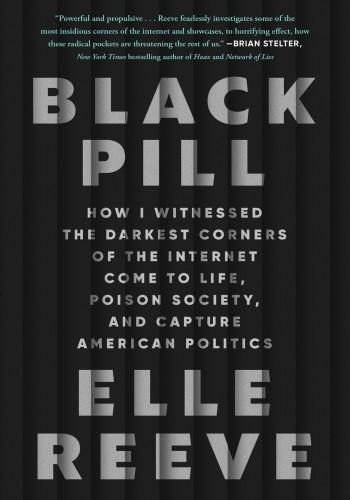
Black Pill: How I Witnessed the Darkest Corners of the Internet Come to Life, Poison Society, and Capture American Politics
by
Elle Reeve
Published 9 Jul 2024
As Australi Witness, Goldberg encouraged: “2 Dead in Shooting at Muhammad Art Exhibit in Garland,” CBS Texas, May 3, 2015. https://www.cbsnews.com/texas/news/breaking-shooting-in-garland/ A CBS headline declared: “Alleged Terror Plot Aimed at 9/11 Anniversary Foiled,” CBS News, September 11, 2015. https://www.cbsnews.com/news/alleged-911-terror-plot-florida-man-joshua-goldberg-posed-as-muslim-in-australia/ In December 2017, Goldberg pled guilty: “Florida Man Sentenced to 10 Years in Federal Prison on Bomb Charge,” United States Department of Justice, June 25, 2018. https://www.justice.gov/opa/pr/florida-man-sentenced-10-years-federal-prison-bomb-charge CHAPTER 8: THE GREAT MEME WAR It showed a handsome Donald: Ben Garrison, “Dancing with the Star: The Trump Tango,” GrrrGraphics, 2015. https://grrrgraphics.com/dancing-with-the-star-the-trump-tango/ John Kerry ordered a sandwich: Dana Milbank, “Steak Raises Stakes for Kerry in Philly,” Washington Post, August 13, 2003. https://www.washingtonpost.com/archive/politics/2003/08/13/steak-raises-stakes-for-kerry-in-philly/f59dd0f7-20fc-4309-85fc-ac63cec7a123/ “George Bush made a mistake”: Reena Flores, “Republican Debate: Donald Trump, Jeb Bush Spar over Bush Family Legacy,” CBS News, February 13, 2016. https://www.cbsnews.com/news/republican-debate-donald-trump-jeb-bush-spar-over-bush-family-legacy/ In a presentation of his research: Psnofsky, Aaron. “Citizen Scientific Racism: White Nationalist Appropriations of Genetic Research.” UCLA Center for Behavior, Evolution, and Culture. January 4, 2021. https://bec.ucla.edu/event/aaron-panofsky-citizen-scientific-racism/. At the Republican National Convention: Sarah Posner, “How Steve Bannon Created an Online Haven for White Nationalists,” Mother Jones, August 22, 2016. https://www.motherjones.com/politics/2016/08/stephen-bannon-donald-trump-alt-right-breitbart-news/ Hillary Clinton addressed: Tyler Prager, “Breitbart Mocks Clinton Speech,” Politico, August 25, 2016. https://www.politico.com/story/2016/08/breitbart-mocks-clinton-speech-227420 He told reporters the alt-right: David Weigel, “Four Lessons from the Alt-Right’s D.C.
…
I’ve met many former “gifted kids” who became millennial internet nazis. “My background is certainly not atypical for the dissident right by any stretch,” Parrott said. “It’s kind of like the standard thing.” Many extremists have told me their IQ. White nationalists have built nonprofits and magazines and publishing houses dedicated to churning out scientific racism, all arguing that white people evolved to be smarter and nicer than people with darker skin. “I’ve come around to despise that worldview,” Parrott said. “It is ultimately a way to arbitrarily, retroactively justify inequalities. Rather than trying to make the world a more fair and better place, it’s saying, ‘Look at all the science that says I should live like this, and you should live like that.
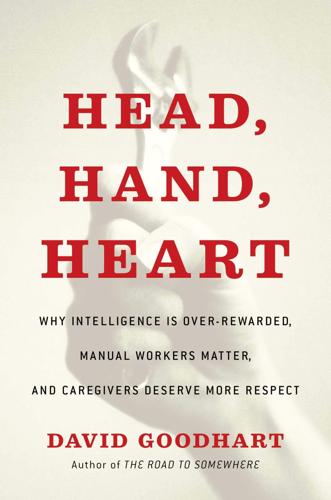
Head, Hand, Heart: Why Intelligence Is Over-Rewarded, Manual Workers Matter, and Caregivers Deserve More Respect
by
David Goodhart
Published 7 Sep 2020
Flynn also points to the importance of human subcultures, both ethnic and class, some of which encourage cognitive pursuits more than others, in helping to explain average differences between groups. The assessment of average group IQ differences is probably the most controversial subject in the whole of social science and uncomfortably connects intelligence research to an earlier era when it was closely linked to eugenics and so-called scientific racism. The study of intelligence in the nineteenth and part of the twentieth century did, indeed, attract people with a certain cluster of beliefs. “They thought of intelligence as being by far the single most important human trait, and therefore the one around which society should be organized; they believed it was genetically inherited; they believed that the world’s darker-skinned races were inferior in intelligence to its lighter-skinned ones; and they were concerned that unintelligent people were reproducing at a more rapid rate than intelligent ones, which would eventually bring down the IQ of the entire human species,” as American writer Nicholas Lemann sums it up in his book The Big Test.5 However, several generations later, intelligence research is now a respectable branch of psychology, and psychometric tests based on IQ are widely used in business and large organizations to select candidates for jobs.
…
D., 300 Hochschild, Arlie Russell, Strangers in Their Own Land, 205–6 Hogarth, William, The Analysis of Beauty, 183 Holmes, Craig, 266 housing costs, 10, 221, 273–74, 288 Hout, Mike, 193 Hugh-Jones, David, 126 human capital theory, 86–87, 136–37, 148, 269 human genome sequencing, 74 Humboldt, Wilhelm von, 48 Hutton, Will, Saving Britain (with Adonis), 168 Hyman, Peter, 300 Ilardi, Stephen, 222 immigration: employment trends and, 25–26, 109 Hand (manual) work and, 194–95, 198–206 political cognitive domination and, 160–61, 162–63, 168, 169 US, 52, 162 income inequality: social mobility trends and, 76–77 status vs., 28, 37–38 India, 223, 259 industrial revolutions, 41–42, 45, 51–52, 134, 143, 255–58, 270, 272–73 industrial societies: cognitive class and industrialization process, 32, 33–35, 41–42, 45, 51–52, 253 distribution of status of self-respect, 10–11 Inglehart, Ronald, 211 INSEE (National Institute of Statistics and Economic Studies, France), 198 Instagram, 22 Institute for Public Policy Research, 79 instrumentalists, 212 intelligence: emotional intelligence (EQ), 13, 67, 71, 137–38, 168, 233, 237–38, 257–58, 299 eugenics and, 63–64, 73 forms of, 66–67 general intelligence (g), 56–71 impact of Internet on, 22 measuring, 56, 61–71, see also IQ/IQ-type tests nature of, 7–8, 57–59 scientific racism and, 63–64 social, 7, 21, 56, 66–67, 258 social selection based on, 34–35, 39–41, 46–53 “test-taking smarts” vs, 57, 70–71 International Social Survey Programme (ISSP), 213–14 Internet: Covid-19 crisis and, 294, 298–99 free or near free services on, 273–74 geographic mobility and, 290 impact of broadband connectivity, 293 impact on intelligence, 22 job “matching” and, 208 massive open online courses (MOOCs), 298–99 Web-based start-ups, 297 IQ/IQ-type tests: A levels (UK), 35, 46, 57–60, 95–96, 98, 105, 108–10, 124, 141, 192 criticism of, 66–67, 253–55 eleven-plus (UK), 20, 65–66, 82, 100, 196 Flynn effect, 6, 63, 67–68 general intelligence (g), 56–71 human virtue and, 55 innate vs. learned abilities and, 71–75 introduction of concept, 64 job selection and, 69–71 mass elite and, 14–15 measuring intelligence, 13, 14, 21, 39, 56, 61–71 nature of intelligence, 7–8, 57–59 SAT (US), 20, 52, 64, 65–68, 80, 114–15, 117, 287 socioeconomic status and, 78–82, 83–84 Ireland, 68, 177 Israel, national service requirement, 297 It’s a Wonderful Life (film), 276 Japan, 27, 68, 144, 194, 218, 223, 239, 293–94 Jensen, Arthur, 73 Jeste, Dilip, 302 Jiankui, He, 280n Johnson, Alan, 174 Johnson, Boris, xii, 155, 171, 179, 287 Johnson, Paul, 109–10, 170–71 Johnson, Tom, 109–10, 170–71 Jospin, Lionel, 88 Kahneman, Daniel, Thinking, Fast and Slow, 70 Katz, Lawrence, 117 Kaufman, Alan S., 65 Kellaway, Deborah, 226 Kershaw, Sam, 200–201 Keynes, John Maynard, 45n, 53, 301 Kimball, David, 160 knowledge economy, 133–52 Anywhere-Somewhere divide and, 12–20, 125–31 cognitive-analytical ability as gold standard of human esteem, 3–5, 11–12, 28, 162 decline in top occupational classes, 268–71 decline of graduate pay premium, 262–64 future of, 143–44, 253–74, see also future gender and, 151–52 globalization and, 258–61 graduate pay premium, 105, 116–17, 136, 139, 145, 152, 262–64 graduates moving to non-graduate jobs, 24, 265–68 “graduatization”/income divergence of the labor market, 133–52, 234–39 high-skill occupations in, 97, 135–36, 138, 148, 259, 268–71 low-skill occupations in, 25–26, 120–21, 135–36, 152, 198, 202–3 middle-skill occupations in, 107–11, 129–31, 135–36, 150–52, 198, 209 nonrepayment of student loans, 268 privileging of key cognitive employees, 141–44 robots and artificial intelligence and, 23–25, 255–58, 270, 272–73, 298 supply of knowledge workers and, 23, 24, 265–68 see also college/university education; professions Kohn, Melvin, 68 Koolhaas, Rem, 185 Krugman, Paul, 23, 257–58 Labaree, David F., 49 Lamont, Michèle, The Dignity of Working Men, 204–5 Lampl, Peter, 18 language: Head (cognitive) work and, 184–85 Heart (care) work and, 182–86 political cognitive domination and, 178–79 religion and, 181, 184 Lasch, Christopher, 278 Lauder, Hugh, The Global Auction (with Brown and Ashton), 23, 144, 258–60 Layard, Richard, 281, 288 Leary, Alison, 236–38 Lemann, Nicholas, The Big Test, 50, 52, 64, 66, 117, 287 Leslie, Charlotte, 172–73 Lewis, Paul, 108, 150 lifelong learning, 95, 107–9, 296–301 Lind, Michael, The New Class War, 18 LinkedIn, 265–66 Locke, John, 42 loneliness, 222–23 low-skill occupations, 25–26, 120–21, 135–36, 152, 198, 202–3 Lucas, David, 13, 58, 180–86 Lupu, Noam, 172 Macaulay, Thomas Babington, 41 Mackenzie, Polly, 56 Macron, Emmanuel, 118 Mair, Peter, Ruling the Void, 167 Manthorpe, Jill, 242 manual sector, see Hand (manual) work Markovits, Daniel, The Meritocracy Trap, 112 Marmot, Michael, 207 Marshall, Alfred, 45 Marx, Karl, 34, 211 mass elite, nature of, 14–15 massive open online courses (MOOCs), 298–99 Maxwell, Elaine, 237–38 Mayhew, Ken, 264, 266, 267 Mazzucato, Mariana, 286 McGilchrist, Iain, The Master and His Emissary, 277, 283, 300 McKinsey & Company, 142, 270 Mental Health America, 222 mental well-being: deaths of despair (Deaton) vs., 10–11, 136, 206–7, 220, 222 family breakdown and, 220, 221–25, 292–93 happiness research and, 11, 16–17, 220, 288, 302–3 impact of media on, 37, 278–81 loneliness and, 222–23 rebalancing of Hand, Head, and Heart work, ix–xiii, 4–5, 20–29, 257–58, 275, 277–78, 284–301 religious decline and, 35–36, 221 status and, 206–7 work satisfaction and, 208–11 meritocracy, 75–89 based on education, 6–12 critique of, 7–8 family background vs., 6–9, 41, 115, 118, 125–26, 156 hereditary, 6–9, 48, 77, 115, 118, 156 inequality of esteem vs. equality of esteem, 9–11, 285–87 moral worth vs., 11 need for cognitive diversity and, 88–89, 281–84 nepotism vs., 41 Northcote-Trevelyan Report and, 31, 41 patronage vs., 41 in postindustrial society, 35 professional training and certification, 39–43, 44, 53 reciprocity and, 87 requirements of, 7–8 selection into cognitive classes and, 75–84, 87–88 in selection systems vs. society, 8–9 skepticism concerning, 7–8, 77, 81, 84–85, 87, 88, 100, 112 see also cognitive aptitude Merkel, Angela, 120, 156, 162 MG Rover, 194–95 middle-skill occupations, 107–11, 129–31, 135–36, 150–52, 198, 209 Milanovic, Branko, 194 Miliband, David, 174, 276 mindset (Dweck), 60, 67 Mirabeau, 153, 154 moral leadership, Head (cognitive) work and, 4, 11, 19, 55 Morant, Robert, 46 Morris, Estelle, 121n motivated reasoning, 20 Mozart, Wolfgang Amadeus, 58 multiple intelligences, 67 Murray, Charles, 55, 71, 221 The Bell Curve (with Herrnstein), 78, 83 Coming Apart, 7, 52, 80, 81, 180, 279–80 Musk, Elon, 14 Myers-Briggs personality tests, 63 Napoleon Bonaparte, 44, 48 National Health Service (NHS, UK), 148, 170, 217–18, 221, 225, 231, 232, 234, 236, 238–39, 241, 242, 245, 249, 289 National Institute of Economic and Social Research (UK), 265 National Opinion Research Center (NORC), 191, 222 Neave, Guy, 98 nepotism, 41 Netherlands, 24, 81, 98–99, 155, 222, 239 Newman, John Henry, The Idea of a University, 49 Newton, Isaac, 42 Nightingale, Florence, 234 Norman, Ian, 236 Northcote-Trevelyan Report, 31, 41 Northern Ireland, 161, 239, 241 Norway, 213 nursing, 147–48, 217–18, 225, 227, 229, 232–42 cognitive dimensions of, 233 emotional intelligence and, 233 graduatizing of, 234–39 medicine vs., 237–38 men in, 244–45, 293–94 pay protections, 232, 233, 237 status of, 236–37 upgrading, 291–92 Nursing and Midwifery Council (UK), 147 O levels (UK), 95–96 Obama, Barack, 14, 113, 156, 158 Office for Standards in Education, Children’s Services and Skills (Ofsted), 103 Office of National Statistics (ONS, UK), 210n, 221, 246, 266, 268 Organisation for Economic Co-operation and Development (OECD), 120, 121, 124, 135, 141, 208, 209, 262, 265, 294 Ormerod, Paul, 246 Orwell, George: Animal Farm, 153 Politics and the English Language, 182 Oxford/Cambridge (UK), 41–42, 44–52, 84, 97–98, 101–2, 156, 172–73, 263, 264 Parker, Dorothy, 53 Pathfinder Programme, 289 patronage, 41 Paul, St., 184 Payne, Christopher, 246 “peak” Head, 20–29, 38, 93 Pemberton, Nancy, 205 personality traits, 63, 67, 69 Peterson, Jordan, 178 Pew Research Center, 140, 212, 248 Piketty, Thomas, 129–30 Pinker, Steven, 299 Plato, The Republic, 154 Plomin, Robert, Blueprint, 72–73, 74 policing, graduatization of, 148–49 political cognitive domination, 95, 103, 153–86 alienation and, 154–55, 159–61, 175–78, 276 Anywhere-Somewhere divide and, 13–14, 160 Brexit Britain and, 10, 32, 154–55, 160–61, 164–66, 185–86, 213–14 education levels and, 155–58 family policy and, 163 in France, 156 in Germany, 156 globalization and, 161–62, 175 higher education and, 172–74 immigration and, 160–61, 162–63, 168, 169 language and, 178–79 “lay politics” vs., 153–54, 177 need for cognitive diversity and, 282–83 political participation “pyramid,” 157–58, 175–77 problems with, 158–64, 284 technocratic depolitization and, 166–78 Trump election in 2016 and, 32, 154–55, 159, 161, 169, 214–15, 220 in the UK, 154–57, 160–68, 179–80, 185–86, 213–14 in the US, 156, 158, 160–61, 162, 180 values and, 180–86 polytechnics/“new universities” (UK), 98, 100–102, 105–8, 115, 119, 263 populist movement, xiii, 12, 112, 177, 204–6, see also Brexit Britain; Trump, Donald postindustrial societies: cognitive class disenchantment in, 32, 35–39 cognitive-analytical ability as gold standard of human esteem, 3–5, 11–12, 28, 253, 287 distribution of status of self-respect, 10–11, 37–38 power, meaning vs., 21 practical intelligence, 67 precariat, 211 professions: automation of work in, 23–25 decline of, 259, 261–62 graduate pay premium, 105, 116–17, 136, 139, 145, 152, 262–64 graduatization of, 147–51, 234–39 growth in, 138–39 Head (cognitive) work and, 38, 39–40, 97 as high-skill occupations, 97, 135–36, 138, 148, 259, 268–71 income divergence with Hand (manual) and Heart (care) work, 133–41 training and certification, 39–43, 44, 53 women in, 26 Putnam, Robert D., Bowling Alone, 168, 221 Pythagoras, 197 Rauch, Jonathan, The Happiness Curve, 302 Rawls, John, 84, 87 Rayner, Angela, 125 Rees, Martin, 299 Reeves, Richard, 80, 111–12 Reich, Robert, The Work of Nations, 111, 161–62 religion: erosion of belief systems in postindustrial societies, 35–36, 221 language and, 181, 184 mind vs. body and, 11 rebalancing and, 301–2 urbanization process and, 34 Research Institute of Industrial Economics, 78 Resolution Foundation (UK), 150 Rise of the Meritocracy (M.
…
How Democracy Ends, 165 Russell Group (UK), 80, 102, 107, 125, 130, 263 Ryle, Gilbert, 38 Sacks, Jonathan, 21, 179 Salvini, Matteo, 155 Sanandaji, Tino, 78 Sanders, Bernie, 14 Sarmiento-Mirwaldt, Katja, 171 SAT (US), 20, 52, 64, 65–68, 80, 114–15, 117, 287 Saunders, Peter, 77 Savage, Michael, 191, 191n Scargill, Arthur, 139 Schleicher, Andreas, 294 School21 (UK), 300 scientific management: digital Taylorism, 23–25, 144, 258–61 Taylorism, 97, 260 scientific racism, 63–64, 73 Scotland, 48, 49, 97–98, 122–23, 128, 239, 241 Scruton, Roger, 183 Seagram Building (New York City), 184–85 secondary education: A levels (UK), 35, 46, 57–60, 95–96, 98, 105, 108–10, 124, 141, 192 credits increase and, 116 decline of shop and home economics classes, 112, 195–97 effectiveness of, 113 eleven-plus (UK), 20, 65–66, 82, 100, 196 free public education, 43–44 General Certificates of Secondary Education (GCSEs, UK), 95–96, 141, 192, 198, 262 high school graduation (US) and, 14–15, 35, 40, 51, 95–96, 98–99, 116, 118, 124 O levels (UK), 95–96 Sennett, Richard, The Hidden Injuries of Class (with Cobb), 190 service job categories, 144, 260–61 Shakespeare, William, 58, 181 signaling effect, of education, 94–96, 121–26, 267, 271 Singapore, 85 Skills and Employment Survey (UK), 266 Smith, Adam, 42 Snedden, David, 49 social gradient (Marmot), 207 social intelligence, 7, 21, 56, 66–67, 258 social justice, importance of, 28 social media: Covid-19 crisis and, xiii, 16 digital giants and, xiii, 16, 33, 273 mental well-being and, 37, 278–81 social mobility, 75–84 Anywhere-Somewhere divide and, 13–20, 287–91 assortative mating and, 79–83 in class stratified societies, 34–35 college/university education and, 6, 103, 105, 125–31, 253–55, 268–71 downward vs. upward, 76, 265–68 in fair society, 8–9 “genetics of success” and, 75 geographic mobility and, 17–19, 125–31, 273–74, 277, 287–91 graduates moving to non-graduate jobs, 24, 265–68 “leaving” mentality and, 126–31, 164 selection into cognitive classes and, 75–84, 268–71 in the UK, 75–78, 80–81, 126–31 in the US, 78–84 socioeconomic status, cognitive ability and, 78–82, 83–84 Sommers, Tim, 83–84 Soskice, David, 104–5, 126–27, 129 Soskice, Frank, 104 Spearman, Charles, 64 Speckesser, Stefan, 265 St George’s Hospital (Tooting, South London), 233, 234–37, 245 Standard Occupational Classification schema (UK), 146–47 Stanford-Binet Intelligence Scale, 64 Star Trek (TV series), 303 State of Mental Health in America (Mental Health America), 222 status, 203–15 career vs. job and, 211–12 cognitive aptitude correlation with socioeconomic, 78–82, 83–84 decline for Hand (manual) work, 4–5, 13, 15, 189–95, 203–15 distribution of status of self-respect, 10–11 gender divide in, 190–92, 213–14 “graduatization”/income divergence of the labor market, 133–52, 234–39 income inequality vs., 28, 37–38 measuring, 203–15 mental well-being and, 206–7 objective/subjective, 203–4 shift to Head (cognitive) work and, 214–15 sources of, 190 work satisfaction and, 208–11 STEM education, 101–2, 108, 111, 236, 265, 268 Stern, William, 64 Sternberg, Robert, 67 Stewart, James, 276 Strachey, John, 61 Suh, Jooyeoun, 246 Sullivan, Louis, 184 Sumption, Jonathan, 155 Sunstein, Cass, 285 Susskind, Daniel: The Future of the Professions (with R.

Stories Are Weapons: Psychological Warfare and the American Mind
by
Annalee Newitz
Published 3 Jun 2024
Belew, Kathleen, “What Is White Replacement Theory? Explaining the White Supremacist Rhetoric,” interview by Lulu Garcia-Navarro, NPR, September 26, 2021. 27. All quotes from Saini here come from the author’s podcast interview with her “The Legacy of Scientific Racism,” in Our Opinions Are Correct, December 19, 2019. https://www.ouropinionsarecorrect.com/shownotes/2019/12/19/episode-47-the-legacy-of-scientific-racism. 28. DeParle, “Daring Research.” 29. Herrnstein and Murray, Bell Curve, 263. 30. Herrnstein and Murray, 339. 31. Herrnstein and Murray, 327. 32. From DeParle, “Daring Research.” 33. Herrnstein and Murray, Bell Curve, 509. 34.
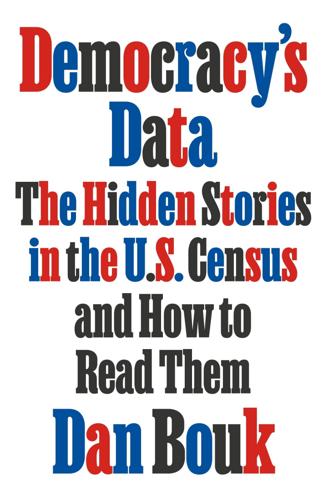
Democracy's Data: The Hidden Stories in the U.S. Census and How to Read Them
by
Dan Bouk
Published 22 Aug 2022
Miller jumped into the fray in response to a work that he himself called “the most thorough and comprehensive treatment of the Negro problem, from a statistical standpoint, which has yet appeared.”10 In 1896, a statistician at New Jersey’s Prudential Insurance Company—a German émigré named Frederick Hoffman—published one of the most influential works of American scientific racism. Hoffman’s book Race Traits and Tendencies of the American Negro presented hundreds of pages of data that purported to prove the innate degeneracy and criminality of African Americans and that predicted the eventual extinction of the Black race in the United States.11 Hoffman built his case on census data and then, thanks to the support of a Census Bureau statistician, published his book with the stamp of approval of the American Economic Association.12 Hoffman worked hard at making racism look like a reasonable, objective stance, and his work heralded a new conversation for a post-slavery nation that sought to cast African Americans throughout the country as a problem.
…
Frederick L. Hoffman, “Race Traits and Tendencies of the American Negro,” Publications of the American Economic Association 11, no. 1/3 (1896): 1–329. 12. Walter Willcox, a Census Bureau chief statistician, championed Hoffman’s piece for the AEA. Mark Aldrich, “Progressive Economists and Scientific Racism: Walter Willcox and Black Americans, 1895–1910,” Phylon 40, no. 1 (1979): 1–14 at 8. 13. Khalil Gibran Muhammad, The Condemnation of Blackness: Race, Crime, and the Making of Modern Urban America (Cambridge, MA: Harvard University Press, 2010), 55. 14. Miller, A Review of Hoffman’s Race Traits, 6, 19. 15.
…
Bibliography Ackermann, Kevin, and Taylor Savell. “Count and Increase.” USApportionment.org. https://usapportionment.org/countandincrease.html. Agar, Jon. The Government Machine: A Revolutionary History of the Computer. Cambridge, MA: MIT Press, 2003. Aldrich, Mark. “Progressive Economists and Scientific Racism: Walter Willcox and Black Americans, 1895–1910.” Phylon 40, no. 1 (1979): 1–14. Altmeyer, Arthur J. “Three Years’ Progress Toward Social Security.” Social Security Bulletin 1, no. 8 (August 1938): 1–7. Aluko, S. A. “How Many Nigerians? An Analysis of Nigeria’s Census Problems, 1901–63.” Journal of Modern African Studies 3, no. 3 (1965): 371–92.
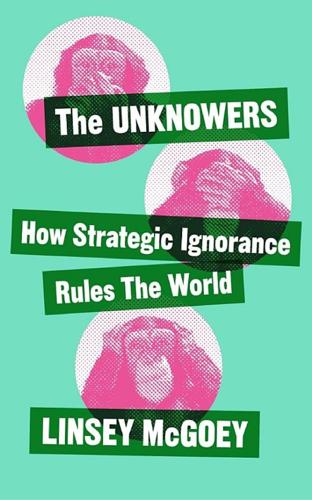
The Unknowers: How Strategic Ignorance Rules the World
by
Linsey McGoey
Published 14 Sep 2019
His work helped to break the yoke of providential theories which entrenched and legitimated gross gender and economic inequality. But his own prejudice and racism also led to early social scientific classifications of human worth that were later ‘refined’ and enlisted in the service of full-blown systems of scientific racism: to the rise of equally abhorrent and, in ways, even more inhumane treatments of enslaved peoples than in earlier eras. They were more inhumane because the new, flourishing social sciences of the 19th century conferred ‘scientific’ respectability on slavery that earlier eras lacked. Kant and his friends fought religious oppression only to bequeath the world new forms of racial categorization and subjugation.
…
.: belief in self-made success, 205, 214; beneficiary of laissez-faire practices, 205–6; deceitful opposition to anti-monopoly legislation, 4; master of ignorance, 20; new cooperation principle, 215; philanthropy, 204; secretive railroad deals, 211–13; South Improvement Company cartel, 213; Standard Oil, 4, 211–14; strategic ignorance of business takeovers, 213–14 Roosevelt, Franklin D., 196 Rosenfeld, Sophia, 58 Ross, David, 269–70, 272–3 Rumsfeld, Donald, 52 Samuelson, Paul, 134, 152 sanctioned ignorance, 40–2 Sand, George, 166–7, 324–6 Sanofi-Aventis, 269–77 Sarch, Alexander, 231–2, 233–5, 304 Sartre, Jean-Paul, 293–4 Schiebinger, Londa, 11 Schwartz, Anna, 54–5, 59–61 science, 8, 64–7 scientific racism, 48, 319 Scotland Yard, 112–14 Scott, Tom, 207, 212 Securities and Exchange Commission (SEC), 53–4 self-interest, 125–6, 126, 136, 139–40 Seroxat, 250–2, 282 servitude, 41–2, 44, 155–6 Shapiro, Aaron, 79 shared prosperity theory, 123, 136, 147 Sherman, Rachel, 117–18 Shine lawsuit, 115–16, 117 Simons, Henry, 246 Simpson, Jeffrey, 28 Sinclair, Niigaanwewidam James, 27 Sinclair, Upton, The Jungle, 255 slavery, 43–4, 205; see also servitude Smarsh, Sarah, 84 smarts see strong/smart groups Smith, Adam, 9; Britain a nation of shopkeepers, 192; criticism of monopoly protections, 127–9; criticisms of merchants, 247, 320; economic classes of society, 138–40, 143; and economic inequality, 136; on government regulation, 20–1, 121, 126–7, 136–7, 140–1; his mother’s influence, 125; inevitability of conflict, 186; misrepresentation of his ideas, 142–6, 310–12; on relative poverty, 142–3; on self-interest, 126, 136; strategic and wilful ignorance of, 122–3; tiered justice system, 121; timing and motives for helping the poor, 245; trade protectionism, 186, 190–1; on wealth distribution, 142–4, 191; Wealth of Nations, 6–7, 121, 125–6, 136, 169, 189, 245; Wealth of Nations abridged versions, 144–6 Smith, David, 109–10 snowmobile fallacy, 241–3 social silence, 53 Société Générale, 120 Socrates, 45, 63 Somin, Ilya, 94–5, 96 Sorel, Georges, 17 Soviet Union, uncomfortable facts, 5, 13 Spivak, Gayatri, 40–1 SSRI drugs see antidepressants Standard Oil, 4, 211–14 Steinzor, Rena, 244–5 Stewart, Maria W., 130–1 Stigler, George, 133, 246–7, 248 strategic ignorance: autocratic exploitation, 69–71; business practices, 20, 205; Carnegie, 208–10; corporate anonymity, 45–6; definition, 3; of drone strikes, 91–2; economic theory, 122–3; emancipatory nature, 315–17; exposure efforts treated as inexcusable, 269–70; Ford, 79–81, 98; MHRA’s non-prosecution record, 291–2, 293–4; and political networks, 22; Rockefeller, 213–14 strong/smart groups, 16–17, 69–71, 77, 173–4, 312–13 student loans, 185 Suez crisis, 31 suicide rates, 307 Sun, 114–15 Sutherland, Kathryn, 145–6, 159 Syll, Lars, 187 Symons, Baroness, 32 taxation, Paine’s proposals, 184, 308 Taylor, Gordon, 105–6 Taylor, Harriet, 7, 60–1, 153, 157–60, 166, 299 Taylor, Helen, 157–60 Taylor, Keeanga-Yamahtta, 68 Teicher, Martin, 280 Temple, Robert, 287–8 Tett, Gillian, 53 Thalidomide, 254, 256–8 think tanks, 65 Thomas, Richard, 110, 111 Tillerson, Rex, 214 tobacco industry, 51 Tocqueville, Alexis de: Democracy in America, 197–200, 309, 322–3; and divine providence, 322–4; French workers, 325–6; government regulation of industry, 20–1, 197–200, 301; prejudice against women, 166–7, 324–6 torture, 72–5 trade: free trade, 17–13, 57, 200–1; mercantilism, 169–70, 171; protectionism, 186, 188, 190–1; Ricardo’s comparative advantage theory, 186–8; US policy, 171, 188, 190, 217 Trefgarne, George, 179–80 Trump, Donald: class myths of voter support, 81–4, 162, 163; elite ignorance, 90–1, 93–4; on history, 314; on Obama, 82, 148–9; presidential election, 19; selective use of facts, 92–4; on torture, 73–4; and truth, 17; wealthy backers, 83–4 truth, liberating potential, 9–10 United Kingdom: male enfranchisement, 42; market interventionism, 43–4; military interventions, 14–15; Suez crisis, 31; trade policies, 44, 57, 186, 190–1; weak regulation of pharmaceutical companies, 252–3, 278, 291–2 United States: conscription, 14–15; drone strikes, 91–2; in-country inequality, 14–15, 36–7; labour oppression, 129–30; laissez-faire policies, 194–5; military interventions, 14–15, 68–9, 185; New Deal, 196; origins myths, 169; suicide rates, 307; trade policies, 171, 188, 190, 217; War Crimes Act (1996), 73; workplace deaths, 219–20 United States Department of Justice, 102, 238, 252, 261 Unser, Bobby, 242–3 unwitting ignorance, 42, 122–3 useful unknowns, 51–6, 257, 277 utilitarianism, 8, 155 ‘veil of ignorance’, 8–9, 46 Viner, Jacob, 300, 302–3 Vinson and Elkins, 235 Vioxx, 258–62 von Eschenbach, Andrew, 273 voter ignorance: Brexit, 82–3, 89–90, 162; collective, shared problem, 243–4; definition, 94; justification for disenfranchisement, 70, 156, 174; political knowledge test, 66–7, 95–6; solutions, 94–5; Trump election, 19, 162; see also democracy, and disenfranchisement War Crimes Act (1996) (US), 73 Washington Consensus, 34 Washington Post, 89, 171, 217, 257 Watkins, Sherron, 235 Watson, Mathew, 187, 188 wealth: evidence of intelligence, 77, 81; financial oligarchy, 65; ignorance and inherited wealth, 139; inherited wealth, 117–18; and morality, 162–3; and racism, 84–7; US voter support for Trump, 83–4, 162, 163 wealth inequality: effect on social wellbeing, 135, 147; God’s will, 75–7; growth, 137; in-country inequality, 36–7; India-England, 129; legitimisation, 75–6; as natural law, 71; relative poverty, 143 Wealth of Nations (Smith), 6–7, 121, 125–6, 136, 169, 189; abridged versions, 144–6 Weber, Max The Protestant Ethic and the Spirit of Capitalism, 67 welfare systems, 185–6 wellbeing, and inequality, 135, 147 whistle-blowers, 40, 262–3 White, William Allen, 81, 97, 111–12 white-collar crime, Mens Rea Reform Act, 236–44 Whittam Smith, Andreas, 102 Whittamore, Steve, 107–8, 109, 110 wilful ignorance: definition, 21–2, 228–9; difficult to prove, 22; Enron, 21–2; equal culpability thesis, 233–5; financial law, 239–40; first court appearances, 227–8; Grenfell Tower fire, 24–6; ‘ignorance doesn’t excuse’ principle, 231–3, 239–40; News International, 274–5; and reckless ignorance, 235; Rupert Murdoch, 101–2; suspected fraud Ketek trials fraud, 271–2, 274–7 Williams, Zoe, 90 Williamson, Kevin, 83 Wollstonecraft, Mary, 20–1, 163, 317; economic fairness, 122; family background and social norms, 268, 269; legacy, 151–2; on mixed education, 312; ‘Rights of Men’ rebuttal of Burke, 149, 150–1 women: domestic violence, 59; ignorance of co-authorship, 7, 60–1; minority women, 59 Woods, Kent, 285–6, 290–1, 292 workplace health and safety, 217, 218–19, 238 World Bank: disputed assumption of neutrality, 221–2; Employing Workers Indicator, 225; institutional ignorance, 33–4; presidents, 219–20; weakened labour protection, 137, 218–20 Zinn, Howard, 196

Political Order and Political Decay: From the Industrial Revolution to the Globalization of Democracy
by
Francis Fukuyama
Published 29 Sep 2014
When the Spanish colonized the New World, they debated whether the indigenous people they found had souls; the Catholic church, at least, concluded that they did and tried—ineffectively—to prevent the worst depredations of the local settlers. In the nineteenth century, the situation was different. The scramble for Africa occurred after the publication of Charles Darwin’s Origin of Species and the rise of a doctrine of “scientific racism” asserting that the existing hierarchy among the world’s races was the result of the inherent biological superiority of white Europeans over everyone else. These views emerged despite the steady spread of democracy and representative government in Europe and North America, and they legitimated the use of force against nonwhite people.
…
The argument that uneducated people could not exercise the franchise responsibly was vulnerable to the spread of mass public education, which most European societies began to implement toward the end of the nineteenth century. The same was not true for novel antidemocratic arguments based on biology. After publication of Charles Darwin’s On the Origin of Species in 1859, a school of “scientific” racism sprang up to explain and justify not just the ongoing colonial conquest of non-European peoples but also the failure to grant equal rights to blacks, immigrants, and ethnic minorities. Women as well were held to be insufficiently rational to be granted the vote, and in any event destined by their biology to be unqualified for male workplace occupations.14 It is important to note that all of these nineteenth-century antidemocratic arguments accepted many of the modern conceptual foundations underpinning democracy.
…
Walter Bagehot, The English Constitution (New York: Oxford University Press, 2001), p. 186. 12. Ibid., pp. 4–5, 32. 13. Gaetano Mosca, The Ruling Class (New York: McGraw-Hill, 1939); Vilfredo Pareto, Sociological Writings (New York: Praeger, 1966). See the discussion of Mosca and Pareto in Hirschman, Rhetoric of Reaction, pp. 50–57. 14. On scientific racism, see Stephen Jay Gould, The Mismeasure of Man (New York: Norton, 1981). 15. Bruce E. Cain, Regulating Politics? The Democratic Imperative and American Political Reform (New York: Cambridge University Press, 2014). 16. The contemporary rational choice version of this Marxist tale can be found in Carles Boix, Democracy and Redistribution (New York: Cambridge University Press, 2003), and Daron Acemoglu and James A.
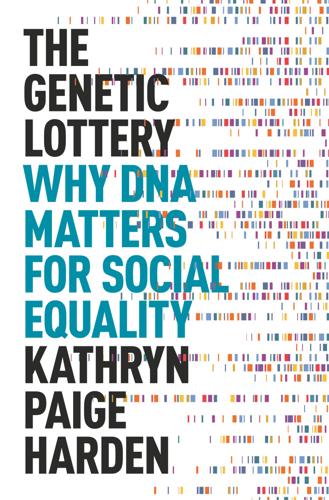
The Genetic Lottery: Why DNA Matters for Social Equality
by
Kathryn Paige Harden
Published 20 Sep 2021
From a very early point in its scientific development, the study of heredity became braided into racist ideas in order to justify racist actions, and the enthusiastic appropriation of genetics by racists continues well into the twenty-first century.1 To avoid any mention of race leaves a vacuum that would be filled with errors and that would be interpreted as a tacit approval of scientific racism. At the same time, because discussions of genetics in relationship to class structure and to redistribution of resources have been poisoned by decades of race “science,” well-intentioned people often feel that they need to reject information about genetic influences on social and economic outcomes outright, in order to preserve their commitment to antiracism.
…
At the same time, because discussions of genetics in relationship to class structure and to redistribution of resources have been poisoned by decades of race “science,” well-intentioned people often feel that they need to reject information about genetic influences on social and economic outcomes outright, in order to preserve their commitment to antiracism. It is critical, then, to separate the empirical reality of genetic influences on individual differences in socioeconomic attainments from the racist rhetoric about differences between human groups. In this chapter, I aim to clarify why today’s genetically inflected incarnation of scientific racism is both empirically wrong and morally blinkered. I will first describe what geneticists mean by ancestry and why it is false to collapse the idea of ancestry with race. I will then describe how genetics research has been done by predominantly White scientists using predominantly White research participants—a situation that creates conditions for false comparisons between racial groups and risks exacerbating inequities between racial groups.
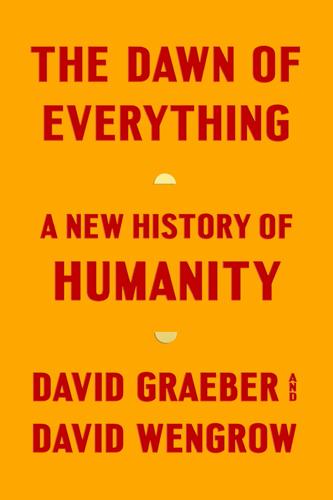
The Dawn of Everything: A New History of Humanity
by
David Graeber
and
David Wengrow
Published 18 Oct 2021
If there is really a toxic element in his legacy, it is this: not his promulgation of the image of the ‘noble savage’, which he didn’t really do, but his promulgation of what we might call the ‘myth of the stupid savage’ – even if one he considered blissful in its state of stupidity. Nineteenth-century imperialists adopted the stereotype enthusiastically, merely adding on a variety of ostensibly scientific justifications – from Darwinian evolutionism to ‘scientific’ racism – to elaborate on that notion of innocent simplicity, and thus provide a pretext for pushing the remaining free peoples of the world (or increasingly, as European imperial expansion continued, the formerly free peoples) into a conceptual space where their judgements no longer seemed threatening.
…
But it’s hard to avoid the impression something else is going on here. The degree of erasure has been extraordinary, and far more than is warranted by mere suspicion of an overstated or outdated theory. Among academics today, belief in primitive matriarchy is treated as a kind of intellectual offence, almost on a par with ‘scientific racism’, and its exponents have been written out of history: Gage from the history of feminism, Gross from that of psychology (despite inventing such concepts as introversion and extroversion, and having worked closely with everyone from Franz Kafka and the Berlin Dadaists to Max Weber). This is odd.
…
Holding up any particular subset of recent foragers as representatives of ‘early human society’ is essentially a matter of picking cherries. 8. Hrdy 2009. 9. Will, Conard and Tryon 2019, with further references. 10. For important reviews and critiques of the ‘Human Revolution’ idea see McBrearty and Brooks 2000; Mellars et al. 2007. 11. The term ‘Venus figurine’ is still widely used, but has links to scientific racism in the nineteenth and early twentieth centuries, when direct comparisons were drawn between prehistoric images and the anatomy of modern individuals considered living specimens of humanity in its ‘primitive’ forms. A tragic example is the life story of Sara Baartman, a Khoikhoi woman who was exhibited around Europe as a ‘freak’ owing to her large buttocks under the stage name ‘Hottentot Venus’.
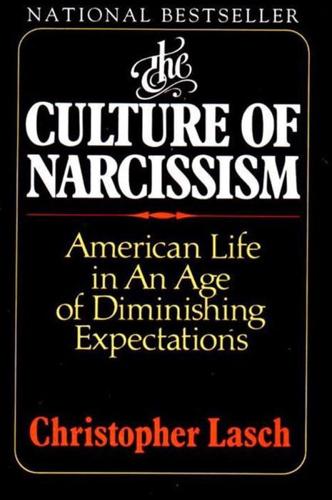
The Culture of Narcissism: American Life in an Age of Diminishing Expectations
by
Christopher Lasch
Published 1 Jan 1978
Such changes have made both racism and the ideology of martial conquest, appropri- 117 martial ethic, the cult of victory or the obsession with achievement (which some critics still see as the "dominant sports creed") , , ate to an earlier age of empire building, increasingly anach- but from the collapse of conventions that formerly restrained ronistic. rivalry even as they glorified it In the United States, the transition from Theodore Roose' s jingoism to Woodrow Wilson s ' velt liberal neocolonialism al- ready spelled the obsolescence of the older ideology of AngloSaxon supremacy. The collapse of "scientific" racism in the twenties and thirties, the integration of the armed forces in the Korean War, and the attack on racial segregation in the fifties and sixties marked a deep-seated ideological shift, rooted in changing modes of exploitation. Of course the relation between material life and ideology is never simple, least of all in the case of an ideology as irrational as racism.
…
Asked to keep one eye open, cool and detached, in appraising half the students, we were to keep the other eye winking as the rest of the students were passed from grade to grade and eventually into a world that would be all too happy to teach them, as they drifted churlishly from disappointment to disaster, what , - " , tration have turned the first-year curriculum into "a playpen of self-exploration." Schooling and the New Illiteracy : 143 142 : The Culture of Narcissism " " able, on the grounds of cultural deprivation. Cultural anthropology, which overthrew scientific racism in the thirties, provided educators with a new excuse for their failure to educate lower-class children: thev came from culturalh' deprived back- grounds and were therciore unreachable. As Kenneth B. Clark " pointed out, Social scientists and educators, in the use and practice of the concept of cultural deprivation, have unintentionally provided an educational establishment that was already resistant to change . . with a justification for continued inefficiency, much more respectable and much more acceptable in the middle of the twentieth century than racism.
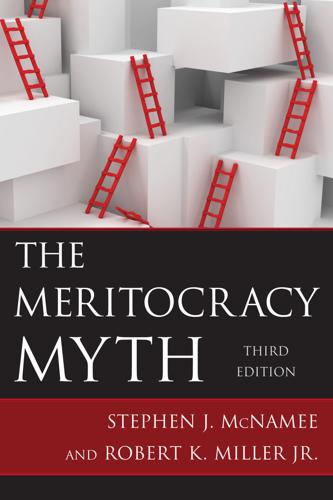
The Meritocracy Myth
by
Stephen J. McNamee
Published 17 Jul 2013
is not really a question at all but a rhetorical comment implying that there is much more to monetary success than intelligence, whatever that means and however it might be measured. The use of the results of IQ tests to “prove” the innate superiority or inferiority of culturally distinct peoples has a long and controversial history. In the early part of the twentieth century, “scientific racism” developed in the social sciences, particularly in anthropology. During World War I, the U.S. Army used the newly developed IQ tests to sort candidates for induction. Interestingly, the results showed that potential inductees sorted themselves fairly neatly into four relatively discrete groups: northern whites, northern blacks, southern whites, and southern blacks.
…
W., 1 , 2 Bush, George W., 1.1-1.2 , 2 , 3 C Calvinism, 1 , 2 capitalism as a continuum, 1 entrepreneurial capitalists, 1 , 2 , 3 free-market expression, 1 , 2 hard work and self-denial as aspects of, 1 human capital, 1 risk, 1 , 2 , 3 turn-of-the-century capitalists, 1 , 2 venture capitalists, 1 wealth inequality in capitalist societies, 1 Carnegie, Andrew, 1 , 2 Catholics and Catholicism, 1 , 2 , 3 , 4.1-4.2 , 5 Chambliss, William, 1 charitable giving, 1 , 2 , 3 , 4 , 5.1-5.2 children American Dreams for, 1 , 2.1-2.2 cost of raising, 1 cultural capital and, 1 , 2.1-2.2 , 3.1-3.2 , 4 , 5 , 6 , 7 , 8 in culture-of-poverty theory, 1.1-1.2 discrimination and, 1 , 2.1-2.2 , 3 , 4 , 5 downward mobility, insulation from, 1.1-1.2 education and parental influence, 1.1-1.2 , 2 , 3 , 4 , 5.1-5.2 , 6 , 7 , 8 health issues, 1 , 2 as heirs, 1 , 2.1-2.2 , 3.1-3.2 , 4.1-4.2 , 5 , 6 , 7.1-7.2 , 8 , 9 , 10 , 11 of immigrants, 1 numbers, declining, 1.1-1.2 , 2 , 3.1-3.2 , 4 parental occupation, effects on, 1 of the privileged, 1 , 2 , 3 , 4 , 5 , 6 , 7 proposed reforms benefiting, 1 , 2.1-2.2 in a pure meritocratic system, 1 social class, education affected by, 1 social mobility and, 1 , 2 Clinton, Hillary, 1 , 2 cognitive elite, 1 , 2 Coleman, James S., 1 , 2 college American dream, as part of, 1 , 2 aptitude tests, 1 , 2 cognitive elect sorted out by, 1 credentialism, 1.1-1.2 , 2.1-2.2 employment during attendance, 1 enrollment, 1.1-1.2 , 2 funding accounts, 1 hiring practices, 1.1-1.2 income, effects on completion, 1.1-1.2 job prospects, 1.1-1.2 legacy admissions, 1.1-1.2 , 2 student debt, 1 , 2.1-2.2 tracking, effects of, 1.1-1.2 types of colleges and social standing, 1.1-1.2 , 2 the wealthy and, 1 , 2 , 3 Collins, Randall, 1 , 2 , 3 Coming Apart: The State of White America, 1960–2010 (Murray), 1.1-1.2 competition capitalism and, 1 , 2 destructive vs. constructive forms, 1.1-1.2 discrimination reducing, 1 , 2 , 3 at elite colleges, 1 , 2 foot race metaphor, 1 foreign business competition, 1.1-1.2 large corporations discouraging, 1 , 2 , 3 , 4 , 5 reforms enhancing, 1 , 2 women and, 1 , 2 , 3 , 4 T The Competition Paradigm (Rosenau), 1.1-1.2 C conflict theory of inequality, 1.1-1.2 , 2 corporations, large American economy, dominating, 1 , 2 ascent of, 1.1-1.2 competition, discouraging, 1 , 2 , 3 , 4 , 5 highly concentrated industries, 1 , 2 , 3 labor unions and, 1 , 2 megamergers, 1.1-1.2 , 2 reform suggestions, 1 restructuring, 1.1-1.2 , 2 self-employment affected by, 1 , 2 , 3 small businesses, vs., 1.1-1.2 , 2.1-2.2 , 3 Countrywide financial corporation, 1 , 2 Creating a Class: College Admissions and the Education of Elites (Stevens), 1 credentials credential underemployment, 1 cultural credentials, 1 , 2 , 3 , 4 , 5 , 6 importance of, 1.1-1.2 , 2 , 3 inflation of, 1 , 2.1-2.2 , 3 nonvalidated, 1 opportunities to earn, 1 cultural capital acquisition of, 1.1-1.2 defined, 1 , 2 , 3 discrimination and, 1 , 2 educational inequalities, 1 , 2 , 3.1-3.2 , 4 , 5 , 6 , 7 elite circles, acceptance into, 1 employers impressed with, 1.1-1.2 government programs leveling field, 1 information access, 1 inheritance and, 1 , 2 media portrayals, 1 nouveau riche, 1 right attitude, 1 social climbing, 1.1-1.2 , 2 transmission settings, 1.1-1.2 U.S. presidents, exemplifying, 1.1-1.2 culture-of-poverty theory, 1.1-1.2 , 2 D debt as a coping strategy, 1.1-1.2 Great Recession, during, 1 , 2 , 3 housing/mortgage debt, 1 , 2 as a liability, 1 student loans, 1 , 2.1-2.2 democracy, 1 , 2.1-2.2 , 3.1-3.2 , 4 , 5 , 6 , 7 , 8.1-8.2 Democracy in America (de Tocqueville), 1.1-1.2 disabled Americans, 1.1-1.2 , 2 , 3 discrimination affirmative action as a remedy, 1.1-1.2 ageism, 1.1-1.2 , 2 American Dream, affecting, 1.1-1.2 , 2 , 3.1-3.2 , 4 , 5 , 6 , 7 , 8.1-8.2 , 9.1-9.2 , 10.1-10.2 , 11 continuing effects of, 1.1-1.2 , 2 the disabled, experiences of, 1.1-1.2 , 2 , 3 in education, 1 , 2.1-2.2 , 3.1-3.2 , 4.1-4.2 , 5 , 6 expansion of opportunity and, 1 heterosexist prejudices, 1.1-1.2 , 2 , 3 in-group solidarity, 1.1-1.2 institutional favoritism, 1.1-1.2 , 2 , 3.1-3.2 legal and political injustice, 1.1-1.2 , 2 , 3.1-3.2 occupational unfairness, 1 , 2 , 3.1-3.2 , 4 , 5 , 6 , 7 , 8 the physically attractive as favored, 1.1-1.2 racial bigotry, 1 , 2.1-2.2 , 3.1-3.2 , 4 , 5.1-5.2 , 6 , 7 , 8 reform movements combating, 1.1-1.2 , 2 religious intolerance, 1.1-1.2 , 2 , 3 , 4 residential inequity, 1.1-1.2 , 2 women, experiences of, 1 , 2 , 3 , 4 , 5.1-5.2 , 6.1-6.2 , 7.1-7.2 , 8.1-8.2 , 9.1-9.2 Domhoff, William, 1 , 2 Duncan, Otis Dudley, 1 E education affirmative action and, 1 , 2 African Americans, educational issues of, 1.1-1.2 , 2.1-2.2 , 3 American Dream, as part of, 1 , 2.1-2.2 , 3 , 4 , 5 , 6 cognitive elite and educational attainment, 1 credentials, importance of, 1.1-1.2 , 2 , 3 , 4.1-4.2 discrimination affecting, 1 , 2.1-2.2 , 3.1-3.2 , 4.1-4.2 , 5 , 6 educational endogamy, 1 government spending on, 1.1-1.2 , 2 human capital theory, 1 , 2 income affected by, 1 individualism, aiding in, 1 inequalities and, 1 , 2.1-2.2 , 3.1-3.2 , 4 , 5 , 6 , 7 , 8 , 9 occupational opportunities, linked to, 1 , 2.1-2.2 , 3.1-3.2 , 4.1-4.2 , 5 , 6.1-6.2 , 7.1-7.2 , 8.1-8.2 , 9.1-9.2 , 10 , 11.1-11.2 , 12 , 13.1-13.2 parental circumstances affecting, 1 , 2 , 3 , 4 , 5 , 6 school completion, 1 school quality and school funding, 1.1-1.2 social/cultural capital and, 1 , 2 , 3 , 4 , 5 , 6 , 7.1-7.2 , 8 , 9 , 10 , 11 success, as a factor in, 1 , 2 , 3 , 4 teacher salary discrepancies, 1 , 2 women and, 1.1-1.2 , 2 See also college T The Education-Jobs Gap (Livingstone), 1 E employment See occupations endogamy, 1.1-1.2 entrepreneurs and entrepreneurialism American respect for, 1 , 2 , 3 , 4 education vs., 1 , 2.1-2.2 entrepreneurial capitalists, 1 , 2 , 3 entrepreneurial traits, 1 , 2 franchisees not considered as entrepreneurs, 1 irregular economy, participation in, 1.1-1.2 luck as part of success, 1 , 2 random-walk hypothesis, 1 social capital, use of, 1 , 2 , 3 upward mobility, aiming for, 1 , 2 See also self-employment Etcoff, Nancy, 1.1-1.2 ethics See moral character F Forbes magazine income listings, 1.1-1.2 , 2.1-2.2 , 3 franchises, 1.1-1.2 , 2 free-market economy, 1.1-1.2 , 2 T The Frontier in American History (Turner), 1.1-1.2 F frontier influence in America, 1 , 2 , 3 , 4 functional theory of inequality, 1 G gambling, 1 , 2 , 3 , 4.1-4.2 , 5 Gates, Bill, 1 , 2 , 3 , 4.1-4.2 , 5 Gendall, Murray, 1 Gilded Age, 1 , 2 , 3 Gini coefficient, 1.1-1.2 Gladwell, Malcolm, 1 , 2 glass ceiling, 1 , 2 , 3.1-3.2 , 4 government programs education funding, 1 , 2 , 3 health care, 1 , 2 highway subsidies and suburb development, 1 , 2 home ownership, encouraging, 1 , 2 land giveaways, 1 the poor as targets of, 1 , 2 , 3 proposed asset-building policies, 1.1-1.2 “thousand points of light” as alternative, 1 transfer payment, 1 Granovetter, Mark, 1.1-1.2 Great Depression, 1 , 2 , 3 Great Recession African Americans affected by, 1 , 2 age discrimination during, 1 class issues resulting from, 1 debt and bankruptcies, rise of, 1.1-1.2 factors leading to, 1.1-1.2 home ownership during, 1.1-1.2 , 2 mortgage debt as contributor, 1 retirement delays caused by, 1 self-employment increase, 1 white-collar crime leading to, 1 H Hamermesh, Daniel S., 1.1-1.2 , 2 hard work beauty achieved through, 1 capitalism, associated with, 1 , 2 consumption as reward, 1 as determinant of inequality, 1 increased work hours as a coping strategy, 1.1-1.2 modest effects of, 1 self-made men and, 1 as a success factor, 1 , 2 , 3.1-3.2 , 4 , 5 , 6 health health care plans, 1.1-1.2 , 2 , 3 , 4.1-4.2 , 5 , 6 older workers, 1 wealth affecting, 1 , 2 , 3.1-3.2 , 4 , 5 Herrnstein, Richard, 1.1-1.2 , 2 hierarchy-of-needs theory, 1 , 2 higher education See college hiring practices, 1.1-1.2 , 2 , 3 Hispanics, 1 , 2 , 3 , 4 , 5 , 6 , 7 Hochschild, Jennifer, 1 hockey player success, 1.1-1.2 Home Advantage (Lareau), 1.1-1.2 home ownership, 1.1-1.2 , 2.1-2.2 , 3 , 4.1-4.2 homosexuality and discriminatory practices, 1.1-1.2 , 2 human capital, 1 , 2.1-2.2 , 3 , 4 , 5 , 6 I IBM, 1.1-1.2 immigrants, 1.1-1.2 , 2 , 3 , 4 , 5 , 6 , 7 individualism as culturally dominant, 1 democracy, expressed through, 1 , 2.1-2.2 as greatly valued, 1 , 2 immigrants and, 1.1-1.2 as part of the entrepreneurial personality, 1 pioneer spirit reinforcing, 1 through self-employment, 1 self-help books promoting, 1 inequalities charitable giving as a means of reducing, 1.1-1.2 conflict and functional theories of, 1.1-1.2 economic inequalities, 1 , 2 , 3 , 4.1-4.2 , 5 , 6 , 7 , 8 educational system and, 1 , 2.1-2.2 , 3.1-3.2 , 4 , 5 , 6 , 7 , 8 , 9 gender inequality, 1.1-1.2 government spending as a factor, 1 , 2 ideologies of, 1.1-1.2 labor unions working to reduce, 1 matrix of domination, 1 residential inequalities, 1 , 2 taxes and, 1.1-1.2 , 2 in wages and income, 1.1-1.2 , 2.1-2.2 , 3.1-3.2 , 4 , 5 , 6.1-6.2 in wealth, 1 , 2 , 3.1-3.2 , 4 , 5 , 6 , 7 , 8 , 9 inheritance advantages of wealth inheritance, 1 , 2.1-2.2 , 3 attitudes towards, 1 , 2 baby boomers and, 1.1-1.2 , 2 conflict theories, within, 1 cultural capital and, 1 , 2.1-2.2 , 3 , 4 domestic partnerships and, 1 estate and inheritance taxes, 1.1-1.2 , 2 of estates, 1 , 2 Forbes magazine, heirs listed in, 1.1-1.2 inequalities, perpetuating, 1 , 2 , 3 luck and, 1 as a natural right, 1 nepotism and, 1.1-1.2 as a nonmerit factor, 1.1-1.2 , 2 , 3 , 4 , 5 , 6 , 7 , 8 old money and, 1.1-1.2 parental motivation, 1.1-1.2 , 2 primogeniture, 1 relay race, compared to, 1 , 2.1-2.2 , 3 , 4 , 5 wealth distribution through, 1 women and inheritance of wealth, 1 In Praise of Nepotism: A Natural History (Bellow), 1.1-1.2 A An Inquiry into the Nature and Causes of the Wealth of Nations (Smith), 1 I integrity, 1 , 2.1-2.2 inter vivo transfers, 1.1-1.2 , 2 , 3 , 4 investments, economic, 1 , 2 , 3 , 4 , 5 , 6 , 7 , 8 , 9 , 10 , 11.1-11.2 , 12 , 13 IQ and IQ tests, 1.1-1.2 , 2.1-2.2 , 3 , 4 , 5 , 6 irregular economy, 1 , 2.1-2.2 , 3 , 4 J Jencks, Christopher, 1 , 2 jobs See occupations Jones, Janelle, 1.1-1.2 K Kildall, Gary, 1.1-1.2 Kozol, Jonathan, 1 L labor unions, 1 , 2 , 3.1-3.2 Lareau, Annette, 1.1-1.2 Lears, Jackson, 1 Lewis, Oscar, 1.1-1.2 Livingstone, David W., 1 , 2 lookism, 1 , 2 , 3 , 4 , 5 , 6 lottery, 1 , 2 , 3.1-3.2 , 4 lower class See working class luck denial of, 1.1-1.2 , 2 with gambling, 1 getting ahead, as a factor in, 1 , 2 , 3.1-3.2 lottery and, 1 , 2 as a nonmerit factor, 1 as part of capitalism, 1 in striking it rich, 1 , 2 wealth attainment and, 1 , 2.1-2.2 , 3 M marriage career interruptions due to, 1 marrying into money, 1 , 2 the poor and, 1 , 2.1-2.2 sexual discrimination and, 1.1-1.2 , 2 trailing partners and hiring practices, 1 upper class and, 1 , 2 , 3 , 4.1-4.2 , 5 Marx, Karl, 1 Maslow, Abraham, 1 , 2 Massey, Douglas S., 1 , 2 Matthew effect, 1 , 2 matrix of domination, 1.1-1.2 Medicare, 1 , 2.1-2.2 mentors, 1 , 2.1-2.2 , 3 , 4 , 5.1-5.2 meritocracy affirmative action and, 1 American promotion of merit, 1.1-1.2 , 2 , 3.1-3.2 , 4 , 5 , 6 coping strategies, 1 , 2 credentials, lack of as a barrier, 1.1-1.2 as a desired outcome, 1 discrimination as the antithesis of merit, 1.1-1.2 , 2.1-2.2 , 3 , 4 , 5 , 6 , 7.1-7.2 , 8 , 9.1-9.2 , 10 , 11 education as a merit filter, 1 , 2 , 3 , 4 , 5 , 6 , 7 , 8 , 9 , 10 , 11 , 12 employment opportunities, 1.1-1.2 , 2.1-2.2 , 3 entrepreneurial success, 1 fairness of the system, 1 , 2.1-2.2 , 3 , 4 , 5 folklore of, 1 government spending and, 1.1-1.2 , 2 in the hiring process, 1.1-1.2 , 2 human capital factors, 1 , 2 , 3 income based on merit, 1 inheritance as a nonmerit factor, 1 , 2.1-2.2 , 3 , 4 , 5.1-5.2 , 6 , 7.1-7.2 , 8 , 9 , 10 , 11 , 12 , 13.1-13.2 intergenerational wealth transfers, 1.1-1.2 legacy preferences as nonmerit based, 1.1-1.2 , 2 luck as a nonmerit factor, 1 , 2 , 3 , 4 , 5.1-5.2 market trends, 1.1-1.2 meritocratic aristocracy, 1.1-1.2 nepotism as nonmeritorious, 1.1-1.2 the new elite as extra-meritorious, 1 noblesse oblige increasing potential for, 1 nonmerit factors suppressing merit, 1 , 2 , 3 , 4 , 5 Barack Obama as example of, 1.1-1.2 , 2 the past, reverence for, 1 physical attractiveness as a nonmerit factor, 1 , 2 pure merit system, 1.1-1.2 reform movements and, 1 , 2 self-employment as an expression of, 1 social and cultural capital as nonmerit factors, 1.1-1.2 , 2 , 3 , 4.1-4.2 , 5.1-5.2 , 6 , 7 , 8.1-8.2 , 9 , 10 , 11 structural mobility and, 1.1-1.2 talents and abilities of the merit formula, 1 , 2 , 3 , 4 , 5 , 6 taxes and nonmerit advantages, 1.1-1.2 Mexican Americans and Mexican immigrants, 1 , 2 , 3 , 4 Microsoft, 1.1-1.2 middle class America as not middle class, 1 asset building, 1 cultural capital, 1.1-1.2 deferment of gratification, 1 education and, 1 , 2 , 3 Great Recession affecting, 1 home ownership, 1 inner cities, flight from, 1 , 2 Barack Obama, background of, 1.1-1.2 old class vs. new, 1.1-1.2 precarious status of, 1.1-1.2 sports choices of, 1 upper-middle class, 1 , 2 T The Millionaire Mind (Stanley), 1 M millionaires, 1 , 2 , 3 minority groups affirmative action, 1.1-1.2 , 2.1-2.2 asset accumulation, 1.1-1.2 core employment, underrepresentation in, 1 disadvantages of, 1 discrimination experiences, 1 , 2.1-2.2 , 3 , 4.1-4.2 , 5 , 6.1-6.2 , 7 , 8 , 9 , 10 education issues, 1.1-1.2 as inner city dwellers, 1 opportunities expanding, 1 , 2 , 3 self-employment and, 1 social capital, lack of, 1 , 2 , 3 moral character, 1.1-1.2 , 2 Mormons, 1 Murray, Charles, 1.1-1.2 , 2 , 3.1-3.2 Muslims, 1.1-1.2 N National College Athletic Association (NCAA), 1 nepotism, 1.1-1.2 , 2 net worth affirmative action and, 1 defined, 1 by income group, 1 of minority groups, 1 of Barack Obama family, 1 of one percenters, 1 , 2 , 3 of Walton heirs, 1.1-1.2 wealth scale, 1.1-1.2 new elite, 1 , 2.1-2.2 noblesse oblige, 1.1-1.2 O Obama, Barack, 1.1-1.2 , 2 , 3 , 4 Obama, Michelle, 1.1-1.2 occupations attitude as a factor, 1 , 2 blue-collar jobs, 1 , 2 , 3 , 4 , 5 CEO salaries, 1.1-1.2 , 2 changes in opportunities, 1.1-1.2 , 2 cultural capital and, 1.1-1.2 , 2 the disabled and employment difficulties, 1 discrimination, 1 , 2 , 3.1-3.2 , 4 , 5 , 6 , 7 downsizing, 1.1-1.2 , 2 , 3 , 4 , 5 , 6 education linked to, 1 , 2.1-2.2 , 3.1-3.2 , 4.1-4.2 , 5 , 6.1-6.2 , 7.1-7.2 , 8 , 9.1-9.2 , 10.1-10.2 , 11 , 12.1-12.2 , 13 , 14.1-14.2 fastest growing jobs, 1.1-1.2 , 2.1-2.2 health hazards, 1 nepotism and, 1 , 2 occupational mobility, 1.1-1.2 , 2 occupational segregation, 1 , 2.1-2.2 outsourcing, 1.1-1.2 , 2 , 3 , 4 , 5 , 6 physical attraction and occupational success, 1 self-employment and, 1 self-made men, 1.1-1.2 social capital and occupational opportunities, 1 , 2 , 3 , 4 wages, 1.1-1.2 , 2 , 3 , 4 , 5.1-5.2 , 6.1-6.2 , 7.1-7.2 , 8 white-collar jobs, 1 , 2 , 3 , 4 , 5 , 6 Occupy Wall Street (OWS), 1 old boy networks, 1 , 2 , 3.1-3.2 old money, 1.1-1.2 , 2.1-2.2 Outliers: The Story of Success (Gladwell), 1 , 2 outsourcing, 1.1-1.2 , 2 , 3 , 4 , 5 , 6 ownership class, 1 , 2 , 3 , 4 P Paterson, Tim, 1 Peale, Norman Vincent, 1.1-1.2 pensions, 1.1-1.2 , 2 , 3 , 4 , 5 , 6 pink-collar ghetto, 1.1-1.2 poverty children affected by, 1 , 2 culture-of-poverty theory, 1.1-1.2 , 2 full-time work below poverty level, 1 as a matter of attitude, 1 meritocracy and, 1 , 2 minority rates of, 1 , 2 poverty threshold, 1 regional variations in poverty rates, 1.1-1.2 , 2 senior citizens and poverty rates, 1 U.S. poverty rates, 1 T The Power of Positive Thinking (Peale), 1.1-1.2 P Protestants and the Protestant ethic, 1.1-1.2 , 2 , 3 , 4 , 5 Puritan values, 1.1-1.2 R racism and racial issues affirmative action, 1.1-1.2 athletes and, 1 crime and the legal system, 1.1-1.2 disabilities, disproportionate experience of, 1 discrimination and, 1 , 2.1-2.2 , 3.1-3.2 , 4 , 5.1-5.2 , 6 , 7 , 8 in education, 1.1-1.2 employment, affecting, 1 Great Recession worsening racial equality, 1 home ownership, 1 ideologies of inequality, as part of, 1 income gaps, 1 language skills and, 1 Obama, election of, 1 , 2 scientific racism, 1.1-1.2 segregation, 1 , 2.1-2.2 , 3 social capital and, 1 , 2 , 3 , 4 white flight, 1 , 2 random-walk hypothesis, 1 recession See Great Recession references, 1 , 2 , 3 retirement as part of the American Dream, 1 , 2 delayment as a coping strategy, 1 , 2.1-2.2 , 3 home ownership and funding of, 1 as jeopardized, 1 , 2.1-2.2 proposed supplementation, 1 self-employment and, 1 , 2 , 3 right attitude, 1 , 2.1-2.2 , 3 , 4 , 5 , 6 , 7 T The Rise of Meritocracy, 1870–2033:An Essay on Education and Equality (Young), 1 , 2 R Rivera, Lauren, 1 Rosenau, Pauline Vaillancourt, 1.1-1.2 S Schmitt, John, 1.1-1.2 schools See education segregation educational, 1 , 2 , 3 occupational, 1 , 2 , 3 , 4.1-4.2 racial, 1 , 2.1-2.2 , 3 , 4 , 5 residential, 1 , 2 , 3.1-3.2 of the wealthy, 1.1-1.2 white flight, 1 See also discrimination self-employment American Dream, as exemplifying, 1 franchises, 1 freelancing, 1 , 2 income, 1.1-1.2 irregular economy and, 1.1-1.2 , 2 , 3 , 4 petty bourgeoisie and, 1 psychological characteristics, 1 rates of, diminished, 1 , 2 , 3 , 4.1-4.2 , 5 , 6 , 7.1-7.2 , 8 risk, 1 , 2 , 3.1-3.2 , 4 subcontractors, 1 taxes, 1.1-1.2 , 2 women and minorities, 1.1-1.2 self-help books, 1 , 2 self-made individuals, 1 , 2 , 3 , 4.1-4.2 , 5 , 6 sexual harassment, 1.1-1.2 Shapiro, Thomas, 1 , 2.1-2.2 slaves and slavery, 1 , 2 , 3 , 4 , 5 , 6 , 7 small businesses, 1 , 2 , 3 , 4 , 5.1-5.2 , 6 , 7.1-7.2 , 8 , 9 Smith, Adam, 1 social capital benefits of, 1.1-1.2 , 2 defined, 1 , 2 , 3 discrimination and, 1 , 2 economic opportunities, having access to, 1 , 2 , 3 education and, 1 , 2 , 3 , 4 , 5 , 6 , 7 , 8 , 9 , 10 mentorship as a form of, 1 nepotism and, 1.1-1.2 , 2 racism and lack of, 1 , 2 , 3 , 4 restricted access, effects of, 1.1-1.2 , 2.1-2.2 social climbing, 1 , 2 , 3.1-3.2 , 4 of U.S. presidents, 1.1-1.2 weak ties, 1.1-1.2 social climbing, 1 , 2 , 3.1-3.2 , 4 social clubs, 1 , 2 , 3.1-3.2 social mobility athletic and artistic abilities, associated with, 1 , 2.1-2.2 , 3 cultural capital as a factor in, 1 education link, 1 , 2 , 3 hard work as a factor, 1 individual merit, 1 integrity hindering, 1.1-1.2 marrying for money, 1 reduction of opportunities, 1 , 2 during Republican administrations, 1 role of government, 1 , 2 social climbing, 1.1-1.2 , 2 status attainment, 1 through self-employment, 1 social reform movements, 1.1-1.2 Social Register, 1 social reproduction theory, 1.1-1.2 , 2 Social Security, 1.1-1.2 , 2 , 3 , 4 , 5.1-5.2 Something for Nothing: Luck in America (Lears), 1.1-1.2 T the South, 1 , 2.1-2.2 , 3 , 4 , 5 S Stanley, Thomas, 1 status-attainment theory, 1.1-1.2 Stevens, Mitchell, 1 stock market, 1 , 2 , 3 , 4 student loans, 1 , 2.1-2.2 success athletic success, 1 , 2.1-2.2 attitudes associated with, 1 , 2 , 3.1-3.2 birth timing and, 1.1-1.2 , 2 cultural capital, 1 , 2 , 3 , 4 discrimination, achieving success through, 1 education, as a factor in, 1 , 2 , 3 , 4 , 5 entrepreneurial success, 1 , 2 , 3 God’s grace, success as sign of, 1 , 2 hard work and, 1 , 2 , 3.1-3.2 , 4 , 5 human capital factors, 1 individualism as key to, 1 intelligence as a determinant, 1 luck as important, 1 meritocracy myth and, 1 mind-power ethic as success formula, 1.1-1.2 moral character and, 1 , 2 , 3.1-3.2 , 4 parental involvement, 1.1-1.2 , 2 , 3.1-3.2 the right stuff, being made of as key, 1.1-1.2 , 2.1-2.2 , 3 , 4 small businesses and, 1 social capital increasing likelihood of, 1 , 2 , 3 suburban living as marker of, 1 10,000 hour rule, 1 women and, 1 , 2 supply side, 1 , 2 , 3 , 4 , 5 , 6.1-6.2 Survival of the Prettiest (Etcoff), 1.1-1.2 Swift, Adam, 1.1-1.2 T talent and abilities American aristocracy, 1 American Dream, leading to, 1 of athletes and celebrities, 1 education enhancing, 1 , 2 , 3.1-3.2 functional theory of inequality, 1 jobs matched to talent, 1 success achieved through, 1 , 2 , 3 , 4 , 5 , 6 talent-use gap, 1 upward mobility and, 1 , 2.1-2.2 , 3.1-3.2 taxes capital gains, 1.1-1.2 estate taxes, 1 , 2 , 3.1-3.2 government policies linked with, 1 , 2 incentives and credits, 1.1-1.2 income taxes, lowered by Republicans, 1 irregular economy, avoiding, 1.1-1.2 progressive taxation, 1.1-1.2 , 2 , 3 , 4 property taxes and school funding, 1.1-1.2 self-employment and, 1.1-1.2 , 2 Social Security affected by, 1 , 2 the South and lower taxes, 1 tax breaks for the wealthy, 1 , 2 , 3 , 4.1-4.2 of urban areas, 1 , 2 Thurow, Lester, 1 , 2.1-2.2 Tocqueville, Alexis de, 1.1-1.2 , 2 tracking, 1 , 2.1-2.2 , 3 , 4 Turner, Frederick Jackson, 1.1-1.2 U Unequal Childhoods (Lareau), 1 upper class charitable giving and, 1 cultural capital, holders of, 1 , 2 , 3.1-3.2 , 4.1-4.2 , 5 deferred gratification, capability of, 1 distinctive lifestyle, 1.1-1.2 , 2 education, 1 , 2 endogamy, tendency towards, 1.1-1.2 as exclusive, 1.1-1.2 , 2 as isolated, 1.1-1.2 one percenters as members, 1 Plymouth Puritans as wellspring, 1 political power, 1.1-1.2 social clubs, frequenting, 1.1-1.2 virtues found in, 1 WASP background of, 1 women of, 1 , 2 , 3 upward mobility attitudes as affecting, 1 barriers to, 1 through college education, 1 credentialism and, 1 downward mobility, vs., 1 through entrepreneurialism, 1 glass ceiling as limiting, 1 integrity as suppressing, 1.1-1.2 irregular economy, as avenue, 1 marriage as a means of, 1.1-1.2 Michelle Obama as example, 1 slowing rates of, 1 See also social climbing See also social mobility V Vedder, Richard, 1 , 2 virtue, 1.1-1.2 , 2 , 3 , 4 , 5 , 6 , 7 W Walmart, 1 Walton, Sam, 1 , 2 , 3 wealth accumulation gaps, 1 , 2 , 3 advantages of wealth inheritance, 1 , 2.1-2.2 capital investments, 1 charitable giving and the wealthy, 1 , 2.1-2.2 culture of, 1 , 2 discrimination and, 1 , 2 distribution as skewed, 1.1-1.2 Forbes magazine listings, 1.1-1.2 gambling, attainment through, 1 government intervention, 1.1-1.2 , 2 Great Recession affecting, 1 guilt feelings, 1.1-1.2 hard work as negligible, 1 inequalities of, 1 , 2 , 3.1-3.2 , 4 , 5 , 6 , 7 , 8 , 9 lottery, wealth attainment through, 1 luck as a factor, 1 , 2.1-2.2 , 3 marriage rates, affecting, 1 nepotism aiding in transference of, 1 old money, 1.1-1.2 , 2.1-2.2 one percenters, 1 , 2 , 3 , 4 , 5 ostentatious displays of, 1 political power, 1.1-1.2 property ownership producing, 1 , 2 pursuit of as a moral issue, 1.1-1.2 , 2 race affecting, 1 social and cultural capital, converted to, 1 , 2 the superwealthy, 1 , 2 , 3 , 4.1-4.2 tax breaks for the wealthy, 1 taxes on, 1.1-1.2 transfers of, 1.1-1.2 , 2 , 3.1-3.2 women and, 1 See also inheritance See also self-employment Weber, Max, 1.1-1.2 welfare, 1 , 2 , 3 , 4 , 5 , 6 , 7 white Anglo-Saxon Protestants (WASPs), 1.1-1.2 , 2 white-collar crime, 1.1-1.2 , 2 Wilson, William Julius, 1 , 2 Winfrey, Oprah, 1.1-1.2 Wisconsin school, 1.1-1.2 women attractiveness as a success factor, 1 , 2 , 3.1-3.2 discrimination against, 1 , 2 , 3 , 4 , 5.1-5.2 , 6.1-6.2 , 7.1-7.2 , 8.1-8.2 , 9.1-9.2 , 10 economic disparities, 1 , 2 , 3.1-3.2 educational attainment, 1.1-1.2 , 2 family concerns, 1.1-1.2 , 2.1-2.2 , 3.1-3.2 glass ceiling, experiencing, 1 , 2 , 3.1-3.2 , 4 inferiority, feelings of, 1.1-1.2 labor force participation, increasing, 1.1-1.2 , 2 mentorships, access to, 1 , 2.1-2.2 occupational disparities, 1 , 2 , 3.1-3.2 , 4.1-4.2 , 5.1-5.2 political underrepresentation, 1.1-1.2 self-employment and, 1.1-1.2 as trailing partners, 1 of the upper class, 1 , 2 , 3 working class American Dream and, 1 cultural capital, lack of, 1.1-1.2 , 2 economic instability, 1.1-1.2 education issues, 1 , 2 , 3 hard work and, 1 health risks, 1 home ownership, 1 lower class value stretch, 1 nepotism, effect of, 1 the new lower class, 1 women and incomes, 1 work See hard work See occupations Y Young, Michael, 1 , 2 About the Authors Stephen J.

The Heat Will Kill You First: Life and Death on a Scorched Planet
by
Jeff Goodell
Published 10 Jul 2023
Some slaves, the abolitionist noted, “could not stand straight to save their lives from constant stooping,” their bodies bent in forced tribute to the cotton plant. Samuel Cartwright, a Louisiana slave doctor and racial theorist, argued that African Americans didn’t suffer in these conditions because they were different than white people. In the 1850s, Cartwright became the foremost Southern proponent of a brand of scientific racism that made heat tolerance one of the defining differences between the plantation owners and their human chattel. “The practice of negroes in exposing their bare heads and backs, through choice, to the rays of a sun hot enough to blister the skin of a white man proves that they are under different physiological laws from him,” Cartwright wrote to US Secretary of State Daniel Webster in 1851.
…
Instead of seeking to shelter himself from the burning sun of the tropics, he courts it, enjoys it, delights in its fiercest heats.” To Van Evrie, a divine design explained the slave’s constitution: “God has adapted him, both in his physical and mental structure, to the tropics.” Even after slavery was abolished and scientific racism was exposed as a manifestation of white privilege and stupidity, the idea that some races were better suited to heat than others persisted. In 1908, a federal study noted an influx of Mexicans into less-skilled jobs across the Southwest, especially in construction and agriculture. One investigator observed that “they work well and are contented in the desert, where Europeans and Orientals either become dissatisfied or prove unable to withstand the climate.”
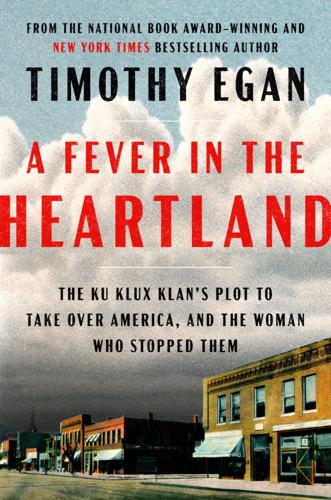
A Fever in the Heartland: The Ku Klux Klan's Plot to Take Over America, and the Woman Who Stopped Them
by
Timothy Egan
Published 4 Apr 2023
As Barr framed the big picture, she said, “This is a struggle for the rebirth of the White Race and the preservation of civilization.” Within a generation or two, she warned, white Protestants would be replaced by an inferior breed. The Jews were behind this plot. Her ideas were backed by influential academics and proponents of scientific racism. Madison Grant, a Yale-educated New York zoologist, had been trying to prove for years that southern Europeans were lesser humans than those from the north; they had low foreheads, he claimed, in addition to being both slothful and oversexed—a seeming contradiction. His book The Passing of the Great Race was a favorite of many Klansmen, and was later embraced by Hitler, who called it “my bible.”
…
See also Tulsa O’Neill, John, 99 “Onward, Christian Soldiers,” 119, 134 Oregon, xvi, 66, 117, 130–32, 176, 328, 347 P Palmer, Charles, 181 Passing of the Great Race, The (Grant), 55 Patriot Phalanx (newspaper), 53 patriotism, 27, 58, 76, 91, 250 Pennsylvania, 249 Catholics attacked in, 86 immigrants in, 127, 135, 339 Klan parades/marches in, 127, 133–35 Klan scare tactics in, 126–27, 134, 339 Klan trial in, 338–39 as Stephenson’s domain, 42, 66, 127 Pierce, Walter M., xvi, 130–31 Pittsburgh, 133, 135, 249, 338–39 “poison squads,” Klan’s, 113, 186 spread of falsehoods, 63, 85, 156, 179 Stephenson and, 63, 66, 84–85 women and, 66 police, 39 answer to Klan, xv, 135, 200 assisted by vigilantes, xvii and cross burnings, xiv encouraging violence, 43, 76–77 Klan appointed to, 288, 299, 301 Klansmen as, 50, 83, 100, 113, 120, 132, 180, 222, 339, 352 protecting Stephenson, xv, 145, 181, 223 recruited by Klan, 34, 43 refusal to arrest Klansmen, 100, 130, 135, 169, 222 refusal to investigate, 17, 45–46 standing up to Klan, 78–79, 158–60 Stephenson’s ties to, xv, 150, 189, 223, 320 supporting white mobs, 7 vice cleanup squads of, 189 Polish immigrants and Polish Americans, 4, 81–82, 127, 167–68, 171–72 political agenda of Evans, 25, 34, 43, 132–33, 245–46 of Klan, 128, 186–88, 227 of Stephenson, 26, 125–28, 130, 132–33, 146, 170, 173 Portland, Oregon, 131, 176, 328 Post-Democrat (Muncie, Indiana), 44, 99–100, 243–44, 352 Potash and Perlmutter (film), 165 presidency and Black voters, 9, 18, 173, 354 first Southerner elected to, 21 first to offer rights to Black people, 8 Klan’s plans for, xviii, 65, 125–26, 130, 133, 172–75, 181 sought by Stephenson, 61, 98, 172, 258, 345, 350 Prohibition, 125, 174 and alcohol prescriptions, 188, 295 Anti-Saloon League and, 25, 53 backed by Klan, xvii, 53–54, 104–5, 345 becomes law, xvii, 52 ends with 21st Amendment, 347 enforcement of, 178 and Stephenson, 25, 145, 252–53, 337 promotional schemes, 23–24, 48, 110 property ownership, xvii, 131, 141 Pulaski, Tennessee, 4–5 Q Queens of the Golden Mask, 55 R rabbis, xxi, 58, 60–61, 165–66, 243 Ralston, Samuel, xix, 43–44, 162, 174–75, 190–91 rape eugenics and, 107 by Klansmen, 3, 327–28 men wrongly accused of, 341–42 of Oberholtzer, 198–202, 207, 222, 245, 259, 270, 302, 314, 330–31, 348, 351 by Stephenson, 119–20, 129–30, 150–52, 182, 191, 231, 266, 294, 325 and vigilante violence, 59 Reconstruction, 4, 6, 18, 20, 22 recruitment, 78, 132 pitches for, 23–24, 30, 35–36 places for, 69, 71 in Protestant churches, 12–13, 26–27, 36, 53 by Stephenson, 30, 34–36, 39, 42, 49, 53, 284 tools for, 125, 339 vetting people for, 35–36 Reed, James, 233 religion, 229 and Civil Rights Act of 1964, 346 freedom of, 174, 238, 346 Klan’s beliefs on, 25, 30–31, 91, 113 persecution for, xxi, 86, 126, 132, 159 and recruiting Klan members, 24, 35 restrictions on, 47, 78, 86, 174 Stephenson on, 44, 64 religious bias, xviii, xxi, 14, 24, 44, 161, 169, 174, 327, 340, 345–46 Remy, William H., 243, 311 appointed prosecutor, 167–68 assembling case against Stephenson, 220–22, 230–32 background/description of, 220, 257, 304–5 and bribery evidence, 336–37 closing arguments in Stephenson trial, 304–9 convening grand jury, 331–33 and crushing Klan, 258–59, 331–33 death of, 354 and death threats, 230–31, 262 defending Oberholtzer’s character, 293–94 and final verdict in Stephenson trial, 318–22, 324 and medical experts, 286–87 need for protection, 230–31, 258, 321 Niblack working for, 335 and Oberholtzer’s dying declaration, 276–79, 284, 308 as prosecutor in Stephenson case, 257–60, 266–75, 280–81, 289, 296–98, 301–2 refusal to obey Stephenson, 168, 220–21, 257, 305 Stephenson plotting murder of, 307, 322 visiting Stephenson in jail, 350 Reomar II (yacht), 123–26, 128, 130, 133, 172, 230 Republican Party anti-Klan forces in, 170, 173, 229 Black voters and, 163–64, 173, 177–80, 353 blaming Jews for bad press, 332 Klan members of, xv, 26, 61, 83–84, 87, 168, 170, 172–73, 179, 221, 299, 329 Klan’s influence on, xviii, 44, 133, 210, 229 national conventions of, xviii, 133, 172 and presidential elections, 18 Stephenson on, 187 and Stephenson trial, 260–61, 299 Revolutionary War, 58, 259 Reynolds, John, 8 Reynolds, Margaret, 150 Richmond, Indiana, 67–73, 109 Ridley, Caleb, 245 Rigdon, Ralph, 299–300, 306–7 Rising Tide of Color: The Threat Against White World-Supremacy, The (Stoddard), 110 Ritchie Boys, 346 Rockne, Knute, 82, 158, 160, 319 Roosevelt, Franklin D., 354 Roosevelt, Theodore, 43, 108, 163 Rowbottom, Harry, 181 Rushville, Indiana, 97, 256 Russia, 59, 107, 127, 167, 171 Ruth, Babe, 68 S Saint Patrick’s Day (Indianapolis, 1923), 78, 80–82, 84 Salvation Army, 69 Sawyer, Reuben, 131 schools, 7, 93 Black, 6, 114, 229 eliminating Catholic schools, xvi, 131, 186, 328 Jews driven out of, 250 mandatory Bible reading in, 186 nutrition education in, 187–89, 194 segregation in, xvii, 19, 114, 229, 287, 346 teaching evolution in, 246–47 Schultze, Ed, 296–97, 299 scientific racism, 55 Scopes, John T., 246 Scopes Monkey Trial, 246–47 segregation, xvii, 345 ends with integration, 346 of federal workforce, 20, 133 in Indiana, 13–14, 46, 68–69, 114 in Indianapolis, 333, 346 and Klanswomen, 56 of neighborhoods, 74–75, 108–9, 170, 229, 287, 309, 333, 352–53 in South, 18–20 in US military, 346 See also schools: segregation in Severin Hotel (Indianapolis), 220–21, 223, 258 Seymour, Indiana, 349–50 Shank, Lew, 170 Shapiro, Louis and Rose, 58 Sheridan, Philip H., 7 sheriffs answering to Stephenson, 318, 322–23 bribed by Stephenson, 282 deputies of, 62–63, 181, 307, 329 Klan-backed, 307 and Klan vigilantes, 8, 85, 134 Klansmen as, 17, 47, 223, 241, 341 protecting Stephenson, 261 refusing to arrest Klansmen, 8, 100–103 Shipp, J.
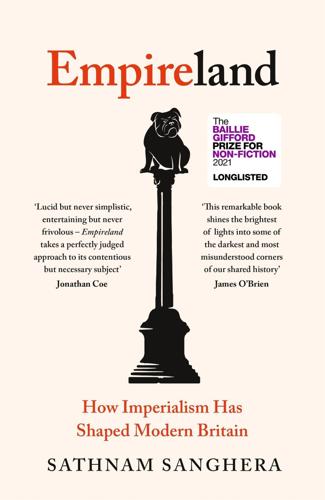
Empireland: How Imperialism Has Shaped Modern Britain
by
Sathnam Sanghera
Published 28 Jan 2021
R., ‘Rhodes, Rhodesia and the Rand’, Journal of Southern African Studies 2007, 1:1, 74–90, https://www.tandfonline.com/doi/abs/10.1080/03057077408707924 Pitzer, Andrea, ‘Concentration Camps Existed Long Before Auschwitz’, Smithsonian Magazine, 2/11/2017, https://www.smithsonianmag.com/history/concentration-camps-existed-long-before-Auschwitz-180967049/ Popović, Ana, et al., ‘Late Victorian Scientific Racism and British Civilizing Mission in Pears’ Soap Ads’, Pulse: The Journal of Science and Culture 2015, 3, 99–112, https://www.ceeol.com/search/article-detail?id=674205 Popperfoto, ‘British Royalty, pic: November 1921, HRH Edward, Prince of Wales pictured in Aden, as his car passes local people, with their banner “Tell Daddy we are happy under British rule”’, Getty Images, 2020, https://www.gettyimages.co.uk/detail/news-photo/november-1921-hrh-edward-prince-of-wales-pictured-in-aden-news-photo/79621695 ‘Population, Houses, and Families’, Vision of Britain, 2017, https://www.visionofbritain.org.uk/census/EW1861GEN/3 Porter, Andrew, ‘Empires in the Mind’, in P.
…
II: The Eighteenth Century, Oxford University Press, 1998, pp. 440 and 465. 16 Angela Saini, Superior: The Return of Race Science, Fourth Estate, 2019, pp. 47–50; Hugh Schofield, ‘Human zoos: When real people were exhibits’, BBC News, 27/12/2011, https://www.bbc.co.uk/news/magazine-16295827. 17 Ana Popović et al., ‘Late Victorian Scientific Racism and British Civilizing Mission in Pears’ Soap Ads’, Pulse: The Journal of Science and Culture 2015, 3, 99–112, https://www.ceeol.com/search/article-detail?id=674205. 18 Judith M. Brown, Nehru, Routledge, 2014, p. 13; Mary A. Procida, Married to the Empire: Gender, Politics and Imperialism in India, 1883–1947, Manchester University Press, 2014; David Gilmour, The British in India: A Social History of the Raj, Farrar, Straus & Giroux, 2018. 19 Mahmud, ‘Colonialism and Modern Constructions of Race’; Pradeep Barua, ‘Inventing Race: The British and India’s Martial Races’, Historian 1995, 58:1, 107–16, https://www.jstor.org/stable/24449614. 20 Sanjoy Chakravorty, The Truth about Us: The Politics of Information from Manu to Modi, Hachette India, 2019.
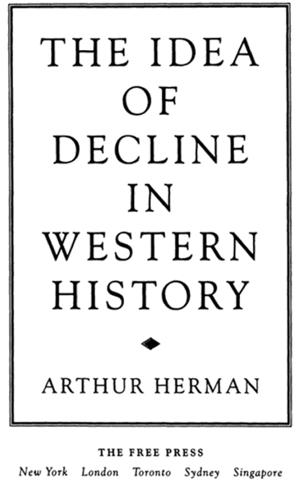
The Idea of Decline in Western History
by
Arthur Herman
Published 8 Jan 1997
Jones , Social Darwinism , p. 106; Gould , Mismeasure of Man , pp. 75-76; Pick , Faces of Degeneration , p. 165. 58 Cf. Kevles , In the Name of Eugenics . 59 W.R. Greg , “ On the Failure of Natural Selection in Man ,” Fraser’s Magazine (1868), quoted in G. Jones , Social Darwinism , p. 102. 60 L.P. Curtis , Apes and Angels . 61 Barkan , Retreat of Scientific Racism . 62 L. Clark , Social Darwinism in France , pp. 154-58. 63 Mosse , Toward the Final Solution , pp. 58-61. 64 S. Gilman , Freud, Race, and Gender , pp. 20, 101. 65 Lombroso , Antisemitism and the Jews (1893), discussed in S. Gilman , ibid, p. 101. 66 Haeckel , Riddle of the Universe , pp. 1-2, 8. 67 Darwin , Evolution of Man (New York, 1896). 68 Haeckel , Riddle of the Universe , pp. 350-52. 69 Gasman , Scientific Origins of National Socialism .
…
Timothy Dwight , “The Conquest of Canaan,” quoted in Tuveson , Redeemer Nation , p. 107. 6 Quoted in Mathiopoulos , History and Progress , p. 128. 7 Marcell , Progress and Pragmatism , p. 18. 8 Hostadter , Social Darwinism in American Thought , and Bannister , Social Darwinism: Science and Myth . 9 Lombroso-Ferrera , Criminal Man , p. 183; Barkan , Retreat of Scientific Racism , pp. 105-06; Boller , American Thought in Transition; Mathiopoulos, History and Progress , p. 117. 10 Wood , Creation of the American Republic , p. 35. 11 Ibid., p. 571. 12 J. Adams , “Defense of the American Constitutions,” in Political Writings, pp. 160-63; Wood , Creation of the American Republic , pp. 571-74; J.
…
Dell, New York, 1962. Bannister, Robert . Social Darwinism: Science and Myth in Anglo-American Social Thought . Temple University Press, Philadelphia, 1979. Barash, Jeffrey A. Martin Heidegger and the Problem of Historical Meaning . M. Nijhoff, Dordrecht, 1988. Barkan, Elazar . The Retreat of Scientific Racism . Cambridge University Press, Cambridge, 1992. Barker, Ernest . Traditions of Civility . Cambridge University Press, Cambridge, 1922. Barnouw, Dagmar . Weimar Intellectuals and the Threat of Modernity . University of Indiana Press, Bloomington, 1988. Barzun, Jacques . The Culture We Deserve .
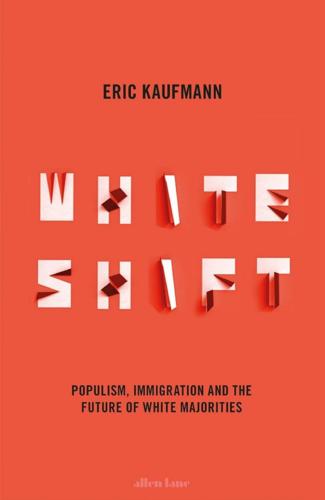
Whiteshift: Populism, Immigration and the Future of White Majorities
by
Eric Kaufmann
Published 24 Oct 2018
RACISM, ANTI-RACISM AND IMMIGRATION A new feature of the discussions around immigration in the 1910s and 1920s was racism. American intellectuals considered anti-Catholic bigotry a backward sentiment, but hailed eugenics, the science of improving the inherited characteristics of individuals, to be modern and scientific. Eugenics was connected with scientific racism, which ranked different ethnic groups as more or less advanced. This meant Catholic Irish and Germans were now ‘Nordics’, considered by some race scientists to be on par with Anglo-Protestants, an interpretation which many of the Old Immigrant representatives endorsed. Some race scientists demurred, ranking the Irish lower down the pecking order.
…
For instance, when it was discovered that African-Americans were under-represented in the prison population, eugenicists improvised an ad hoc argument that this was only because blacks worked on plantations so couldn’t get into trouble. When Franz Boas measured skull sizes in a scientific manner and disproved eugenic arguments that immigrant groups had smaller brains, his work was ignored. Scientific racism fed into the 1911 Dillingham Commission report which warned that the present American immigration policy would introduce a lower-quality population stock to the country, leading to criminality and endangering democracy.32 It thereby concluded that the country must reduce immigration from Southern and Eastern Europe.
…
There was sporadic agitation against immigration in France, but the French state’s military struggles with its British and German rivals acted as a force for integration.13 This didn’t mean things couldn’t turn sour: between the 1880s and early 1900s anti-Semitism reached its height in France, as exemplified in the Dreyfus Affair. This was primarily driven not by immigration but by an elite discourse grounded in both the time-hallowed ‘killer of Christ’ brand of religious anti-Semitism and the new scientific racism. Countries which are small and prosperous, notably Switzerland, are disproportionately affected by immigration. Between 1850 and 1910, Switzerland’s foreign-born share rose from 3 to 15 per cent, making it an outlier in Europe. Switzerland is German-, Italian- and French-speaking and these immigrants came largely from these surrounding countries, but poor southern Italians were over-represented.
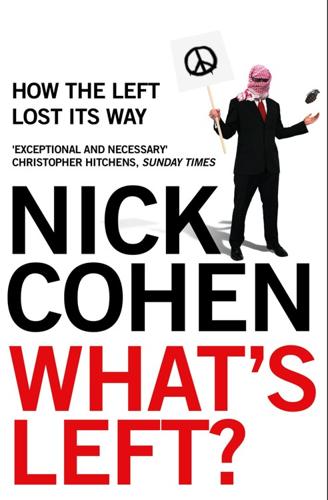
What's Left?: How Liberals Lost Their Way
by
Nick Cohen
Published 15 Jul 2015
By ‘the Right’, I don’t mean the American Republicans or the British Conservatives or the French Gaullists, but the deep right of the counter-revolution that raged against the American and French Revolutions and the slow evolution of Britain into a democratic society. In the eighteenth and nineteenth centuries, it took the form of aristocratic reaction and ethnic nationalism. In the twentieth, ‘scientific’ racism and fascism. The themes and arguments of the vile tradition appeared with remarkable consistency in Saddam Hussein’s Iraq, Iran, the Sudan, as well as the ideologies of the Islamist terror groups. As early as 1770, one Cornelius de Pauw, a Dutch naturalist, sounded like half the novelists and playwrights in Britain today (and all the novelists and playwrights in France) when he poured scorn on everything American.
…
St John 236 Philip the Fair of France 340, 341 Philippines 81 Philosophers’ Magazine 101 Philosophy and Literature 99 pink poets 219, 220 Pinter, Harold 74, 168, 178 Mountain Language 52 poets 222–3 Pol Pot 30, 50, 93, 166, 167 political correctness 114, 213 political cults 60–2 Pollitt, Harry 238–9, 243–4 Ponchaud, François 167 Cambodia: Year Zero 167–8 Poos, Jacques 136–7 post-modernism 377, 381 Pottins, Charlie 65–6 poverty 116 Powell, Anthony 113 Power, Samantha 128–9 Preston 308–9 Pritt, D.N. 242–3 Prospect 179 Protestant work ethic 201 Protocols of the Learned Elders of Zion, The 36, 344, 345, 346, 349 public service ethos 194–5 al-Qaradawi, Yusuf 305–6, 309 Question Time 367 Qutb, Sayyid 264–5, 267, 294, 348, 369, 370 Our Battle with the Jews 348 race relations 201 racism 309–10, 352 radicalism 103, 105, 106, 124 ‘rage of party’ 152–3 Rashid, Shanaz 299–300 Reagan, Ronald 196, 201 Redgrave, Corin 57, 59, 61, 64, 67, 247 Redgrave, Deirdre 61 Redgrave, Michael 242, 243, 244, 247 Redgrave, Vanessa 57, 59, 62, 67 religion 361 militant 27 religious fundamentalism 110 Republic of Fear (Makiya) 31, 45–6, 52, 70, 84, 330 Republicans 85, 211 Respect 309, 310 Revolutionary Communist Party (RCP) 173–4, 295 revolutions (1848) 355 (1968) 21, 22 Reza Pahlavi, Mohammad 26 Richardson, Natasha 62 Rifkind, Malcolm 140–1, 142, 143, 144, 147–8, 150, 154 Rippon, Geoffrey 56 Rix, Mick 302 Robin Hood 368 Robison, John 340 Roe v Wade 212 Roosevelt, Franklin D. 83 Rose, General Sir Michael 154 Rose, Jonathan Intellectual Life of the British Working Classes 207, 208 Rosenberg, Harold 183 Roth, Kenneth 325 Roy, Arundhati 178 Royden, Dr Maude 236 Rumsfeld, Donald 47, 48 Rushdie, Salman 371 Russell, Bertrand 21, 78, 228, 233, 235, 236 Russia, tsarist and Jews 344 Ruzicka, Marla 320 Sackur, Stephen 318 Saddam Hussein 7, 25, 30, 32, 33, 73, 76–7, 281–2, 314, 352, 365 capture of 318–19 decline in condemnation of by left 74–5 and Galloway 291–2, 293 genocide of Kurds 5, 7, 24, 48–9, 50–2, 127 and indoctrination of Iraqis 34 initial condemnation of by left 5–6 invasion of Kuwait 6, 70, 72–3 and Iraqi Communist Party 38 legacy 38 purges of Baath Party 35, 42–4 trial of 50 and unions 297 and war with Iran 28, 32, 44, 47–8 Said, Edward 73, 75–7, 92–3, 95, 274 Orientalism 75 Salazar, António 1 Saleh, Hadi 302–4 Salih, Barham 328–9 Sarajevo 153–4 Sartre, Jean-Paul 103, 348 Satanic Verses 184 sati 101–2 satire 113–14 Saudi Arabia 249, 350 Schanberg, Sydney 167 Schmidt, Paul 234 Schroeder, Gerhard 313 Scientific American 97 ‘scientific’ racism 262 Scottish Highland Clearances 118 Scowcroft, Brent 72, 135, 142 Second World War 195, 226, 239, 245 Serbia/Serbs 169, 172 see also Bosnian war Shaun of the Dead 124–5 Shaw, George Bernard 190 Shia Muslims 35 Shultz, George 52 Simms, Brendan 143, 148 single mothers 200 Six Day War (1967) 21, 36 Smollett, Peter 246 social democracy 11, 94 Social Text 99 socialism 27, 355, 360, 373, 375 death of 11, 12, 93–4, 103, 108, 213, 374, 381 Socialist Alliance 309 Socialist Worker 300 Socialist Workers Party (SWP) 54, 295–6, 296, 307 Sokal, Alan 99 Sokal hoax 98–9 Solzhenitsyn, Alexander 3 Somalia 359 Soros, George 139 Soviet Union 4 collapse of 87–8, 94 invasion of by Hitler (1941) 246, 248 and Iraq 37–8, 40 pact with Nazi Germany (1939) 237–9 Spain 327 anti-war demonstrations 280 Spanish Civil War 122, 123, 218, 223–5, 237, 248 Spanish socialists 327–8 Srebrenica massacre (1995) 130–1, 149–50, 171, 177–8 Stalin, Joseph 4, 30, 49, 50, 218, 226, 247, 248 Stockholm International Peace Research Institute 46–7 Stop the War Coalition 290, 295, 305 student protests (1968) 22 suburbanization 221 Sudan 50 suicide bombers 10, 350 Sullivan, Andrew 271 Sunni Arabs 35 Swain, Jon 167 SWP see Socialist Workers Party Syria 349, 350 seizure of power by Baath Party 31 Tadic, Dusko 174 Taliban 260, 271, 277–8 Tantawi, Mohammad Sayed 306 Tanweer, Shezad 257, 258 Tavistock, Marquess of 236 Taylor, A.J.P. 56 Telegraph 292 Templars see Knights Templars Thatcher, Margaret 54, 114, 143, 144, 184, 185, 189, 195, 196, 199, 337 Thatcherism 184–5 theory/theorists 96–101, 103–4, 104–5, 106, 112, 114, 115, 117, 213–14, 293, 321 Thirties 217–21, 356 Tippett, Sir Michael 185 Tocqueville, Alexis de 42 totalitarianism 29, 37, 38–9, 119–20, 359–60, 361 Tourish, Dennis and Wohlforth, Tim On the Edge 63 trade unions 14, 93, 193, 199, 297–9, 355, 360 Trnopolje camp (Bosnia) 131–4, 171, 174, 175–6 Trotsky, Leon 54, 57 Trotskyists 52, 53, 67, 87, 248, 295 Tudeh Party 27 Tudjman, Franjo 127 Turkey 162–3, 170 Uday Hussein 292 Ulbricht, Walter 239 United Nations 72, 129, 149, 357 United States 367 and Bosnian War 135, 145 and Gulf War 72–3 helps Iraq in Iran – Iraq war 46–8 and Iran 26 oil and policy towards Middle East 84 revolt of masses against rich liberals 210 see also Bush, George W.; Iraq War universities 204 University of California Press 45 van Gogh, Theo 335 Versailles, Treaty of 228, 250 victimhood 78–9 Vidal-Naquet, Pierre 165–6 Vietnam War 21, 22, 93 Voltaire 164 Vulliamy, Ed 129, 130, 173, 176 Wall Street Crash (1929) 194–5, 218, 219 Walzer, Michael 355 Watson, Fiona 326 Waugh, Evelyn 113, 159 weapons of mass destruction 47 welfare state 195, 197, 199, 200–1, 355 Wells, H.G. 190 West Germany weapons sales to Iraq 47 Weston, Jon 134 Wheatcroft, Geoffrey 184–5, 278–9 Wheen, Francis How Mumbo-Jumbo Conquered the World 278 Williams, Ian 129 Williams, Ralph Vaughan 244 Williams, Raymond 241–2 Willmott, Peter 199 Wilson, Harold 56 Windsor, Duke of 234 Withey, Lynne 45–6 Wittgenstein 105 Wolf, Naomi 183 Wolfowitz, Paul 80–2, 83, 84 Wolin, Richard 264 women priests 236 Woolf, Leonard 232 Woolf, Virginia 190–2, 228, 232, 236, 299 Woolworths 221 Workers’ Revolutionary Party see WRP working class 189–94, 196, 202–8, 210–11, 221–2, 379–80 World Social Forum 115 World Trade Organization 115, 117 WRP (Workers’ Revolutionary Party) 53–5, 57, 58–60, 63–4 downfall of 66–7, 68 and fascist conspiracy theory 65 and Iraq 65–6, 67, 68 and Irene Gorst 59–60 soliciting funds from Arab tyrants 64–5 see also Healy, Gerry Yeats, W.B. 219 Yom Kippur War 55 Younes, Nadia 326 Young, David 65 Young, Michael Family and Kinship in East London 199 Young, Stuart 65 Yugoslavia, former 85, 127 see also Bosnian war; Kosovo war Zarqawi, Abu Musab 286–7 Zimbabwe 117, 118, 351 ACKNOWLEDGEMENTS I could not have written this book without the help of many people who gave me their time without complaint.

Sorting Things Out: Classification and Its Consequences
by
Geoffrey C. Bowker
and
Susan Leigh Star
Published 25 Aug 2000
The rational classifying activity masked a wrenching and denied history. As racial anxieties ran riot through the sober prose of categorical bioscience, the taxonomies could neither pinpoint nor contain their terrible discursive product. (1997, 234) Although a vague conception of eugenics and other forms of scientific racism are woven throughout the debates about apartheid, this lack of a scientific definition of race appears repeatedly. Dr. M. Shapiro, at a meeting of the Medico-legal Society in Johannesburg in 1952, wryly noted that: Where for purposes of legal classification, the question arises whether a person is White, Coloured, Negroid or Asiatic, the policeman and the tram conductor, unencumbered by biological lore, can make an assessment with greater conviction, and certainly with fewer reservations, than can the geneticist or anthropologist.
…
Purity and Danger: An Analysis of the Concepts of Pollution and Taboo . London: Routledge and Kegan Paul. Douglas, Mary. 1986. How Institutions Think . Syracuse, NY: Syracuse University Press. Douglas, Mary, and David L. Hull. 1992. How Classification Works: Nelson Goodman among the Social Sciences. Edinburgh: Edinburgh University Press. Dubow, Saul. 1995. Scientific Racism in Modern South Africa. Cambridge: Cambridge University Press. Dumas, Alexandre. 1858. La Dame aux Camelias ; Preface de Jules Janin. Ed. illustre par Gavarni. Paris: G. Havard. Duncan, Thomas, and Tod F. Stuessy. 1984. Cladistics: Perspectives on the Reconstruction of Evolutionary History .
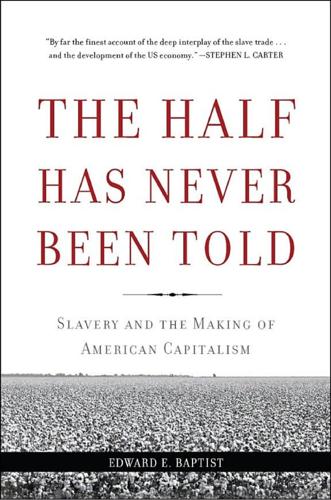
The Half Has Never Been Told: Slavery and the Making of American Capitalism
by
Edward E. Baptist
Published 24 Oct 2016
In another case, the federal judiciary took the Calhounian argument for the independence of slave property from majority control and made it, in the form of the so-called Lochner Doctrine, a defense of rampant industrial power in the face of attempts to regulate workers’ safety, consumer health, and environmental impact. In yet another case, scientific racism had a long history after the fall of the Confederacy. It was used to justify anti-Semitism, the extermination of native peoples around the world, brutal forms of colonialism, and the exclusion of immigrants. And it continued to be used to justify discrimination against the descendants of the enslaved.
…
Thomas Hart Benton, Thirty Years’ View, Or, A History of the Working of the American Government for Thirty Years, from 1820 to 1850 (New York, 1854–1856), 2:695–696. 34. CG, February 19, 1847, 453–455. 35. New Bedford Mercury, October 1, 1847; Gloucester Telegraph, October 28, 1846; CG, January 4, 1848; Reginald Horsman, “Scientific Racism and the American Indian in the Mid-Nineteenth Century,” American Quarterly 27 (1975): 152–168. 36. Joseph G. Rayback, Free Soil: The Election of 1848 (Lexington, KY, 1971); Wilentz, Rise of American Democracy, 608–610. 37. Joel Silbey, Party over Section: The Rough and Ready Election of 1848 (Lawrence, KS, 2009). 38.
…
See also Native Americans Reeder, Andrew, 374 Relf, Richard, 86–87, 89 Religion Christianity, 210–213 evangelical Protestantism, 198–207 Religious freedom, 201 Resistance, 101, 112–113, 116, 117, 147, 264, 281–282 Reynolds, Samuel, 179 Rhett, Robert Barnwell, 388 Rice, David, 12 Richards, John, 89 Right-handed power, and capitalism, 90 Rives, Francis, 92–93, 107, 182, 206–207 Rives, William, 277 Roberts, John, 285–286, 295 Robertson, William, 100 Rogers, Charlotte, 150 Royall, Anne, 93, 258–259 Runaway slaves/fugitives, 14–15, 123, 144, 168–169, 172, 180, 191–192, 347 in Boston, 309–310 during Civil War, 400 as galley slaves, for punishment, 76 in northern states, 172, 312–313, 313–314 Runnels, Hiram, 286 Rust, George, 293 Rutherford, C. M., 358, 361–362, 363 Rutledge, John, 10–11, 12 Sable Venus, 236, 237 (photo) Sanford, Eliza Irene, 368 Santa Anna, Antonio López de, 267 Schumpeter, Joseph, 86 Scientific racism, 415 Scott, Dred and Harriet, 368–369, 376–379 Scott, Winfield, 328–329, 357 Secession/secessionists, 387–395, 414 Second Bank of the United States (B.U.S.) establishment of, 91–92 Jackson’s veto of, 269, 270 Panic of 1819 and, 156, 228, 229 Panic of 1837 and, 277–278 slave trade, cotton, politics and, 230, 231–233, 238–239, 244–245, 248, 249–254, 255, 255 (photo), 257 Secret resistance/left-handed power, 112–113 Seneca Falls Convention, 1848, 334 Seward, William, 339, 371, 388–389 Sexual desire, slave trade, and financial risk, 233–235, 236–237, 243–244.
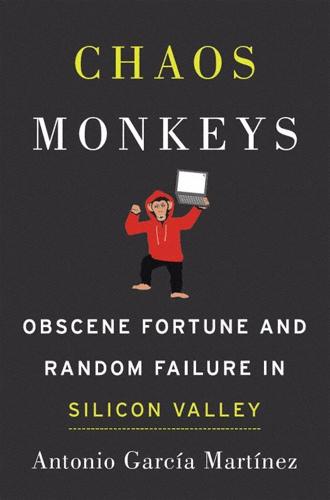
Chaos Monkeys: Obscene Fortune and Random Failure in Silicon Valley
by
Antonio Garcia Martinez
Published 27 Jun 2016
Somerset, 200 Mayer, Marissa, 78 Mayfield Capital, 154, 156, 159, 162–63 McAfee, 382 McCorvie, Ryan, 16–17 McDonald’s, 82, 450 McEachen, Matthew (“MRM”), 41, 46, 62–63 call to, 123 CEO position, 249 chaos monkey suggestion, 103 codebase and, 66, 73, 184, 234 coding, 146 comrade-in-arms, 91 as daredevil, 136–37 deal details and, 251–52 earnestness, 68 Facebook and, 223, 225 family, 135, 205 getting to know, 88 irritation, 102–3 lost with, 109 paying off mortgage, 494 as resourceful savior, 100–101 as steadfast, 67 McGarraugh, Charlie, 14–15 McLean, Malcom, 447 media publishers, 387 MediaMath, 390 Menlo Park, 84 bedroom community, 338 conferences, 119 headquarters, 469 moving to, 337 schools, 306 meritocracy, 74 Merkle, 384 mesothelioma, 81 Miami drug trade, 304 Michelangelo, 334 Microsoft Adchemy and, 153–54, 161–62 Atlas, 383, 453–55 calendar, 340 dogfooding, 43 monopolist, 286 program managers, 272 middle managers, 359 Miller, Arthur, 104 Miller, Frank, 434 Milton, John, 475 minimum viable product (MVP), 434 miracles, 51 misleading, offensive, or sexually inappropriate (MOSI), 310 Mixpanel, 62 mobile commerce, 484–89 mobile data, 382, 477, 484, 486 Mobile Marketing Association (MMA), 448 monetary value, 317–19 monetization bet, 4 data-per-pixel, 274 digital, 184 Facebook, 5, 209, 275, 278, 298, 318, 425, 444 folly, 361–72 Google, 186 growth, 141 influences, 9 savvy, 486–89 tug-of-war, 379 Twitter, 190 zero-sum game, 319 money fuck-you money, 102, 415–16 investors, 74 outside, 155 pre-money valuation, 212 seed, 96 of VCs, 174 Moore’s law, 25 MoPub, 476–77, 479–81 morality, 226, 256, 284 Morgenstern, Jared, 218 Morishige, Sara, 183 Morris, Robert Tappan, 60–61 Mortal Kombat 3, 178 Moscone, George, 181 Moskovitz, Dustin, 284 Motwani, Rajeev, 138 Museum of Natural History, 366 My Life as a Quant (Derman), 16 MySpace, 283–84 N00b, 269 Nanigans, 480–81 Narasin, Ben, 128–31, 143–44 NASDAQ, 405, 410 National Socialism, 356 native ad formats, 448–49 Neko, 482 Netflix, 83, 103, 328 Netscape Navigator, 286 Neustar, 384, 386 New Rich, 357 New York Times, 448, 486 New Zealand, 318 News Feed addictive, 482 ads, 482–84, 488, 492 click-through rates, 487 content, 309 creation, 2 distribution, 364 as magic real estate, 362 spamming users, 372 versions, 444 newspaper advertising, 36–37 Nielsen, 385 1984 (Orwell), 433 noncash valuation, 212 no-shop contract, 201 Nukala, Murthy crossing paths, 167–68 ego, 42–43 greed, 44 hazing by, 71 immigrant worker, 72 lecture from, 65–66 manipulative rage, 136 pep rally, 36 saying good-bye to, 73 self-preservation and, 162–63 tantrums, 45 as tyrant, 158 vindictiveness, 134 wooing by, 154 Obama, Barack, 299–300 obscenity, 268 OkCupid, 54 Olivan, Javier, 410 Omnicom, 437, 443 on-boarding, 260–67, 271 one shot, one kill motto, 298 one-on-one, 434, 457, 469 online dating, 54–55 Opel, John, 148 Open Graph, 280, 364 optimization, 276, 302 Oracle investors, 111 job at, 193 logo, 124 product shindigs, 181 recruiting, 70 Orkut, 379 Orrick, Herrington & Sutcliffe, 193, 203, 253 Orwell, George, 433 outside money, 155 Ovid, 316 Oxford English Dictionary, 80 Page, Larry, 112, 428, 431 Pahl, Sebastien, 119 Palantir, 272 Palihapitiya, Chamath, 265–66 Palo Alto bosom of, 116 climate, 123 downtown, 333, 338 East, 404 hub, 109 old, 112, 158 posh, 84 shuttles, 289, 339 Stanford grads, 63 Pamplona running of bulls, 106–7 Pan-Arabism, 356 Pansari, Ambar, 210 Paper, 283 Parse, 155 Patel, Satya, 249–50 Patton, 369 Payne, Jim, 476 PayPal, 78, 124 personal wealth, 415 personally identifiable information (PII), 395 photo sharing, 286, 490–91, 493 photo-comparison software, 310 Pickens, Slim, 102 Piepgrass, Brian, 374 pings, 188, 327, 422 PMMess, 347–51, 407, 409 poker playing, 396–97 polyandry, 483 Polybius, 172, 316, 336 Pong, 150 Ponzi scheme, 16 pornography, 167, 262, 268, 312, 314, 315 post-valuation, 212 pregnancy, 58–59 pre-money valuation, 212 La Presse, 37 privacy Facebook and, 316–29 Irish Data Privacy Audit, 278, 320–23 PRIZM Segments, 385 product development, 47, 94, 191, 220, 334, 370, 389 product managers (PMs) as Afghan warlords, 273 earning money, 302 everyday work, 294 Facebook, 4, 6–7, 10, 91, 97, 202, 210, 271–79 Google, 192 habitat, 341 high-value, 246 ideal, 219 information and, 295 internal and external forces and, 316–17 last on buck-passing chain, 327 managing, 276 stupidity, 313 tech companies, 272 tiebreaker role, 292 product marketing manager (PMM), 277, 366 product navigators, 272 production, 94 product-market fit, 175 programmatic media-buying technology, 38 Project Chorizo, 296 pseudorandomness, 75 publishers, 37, 39 Putnam, Chris, 284 Qualcomm, 70 quants, 16–18, 24, 29, 141, 207 Quick and Dirty Operating System (QDOS), 149 Rabkin, Mark, 3, 312, 389, 398, 435 Rajaram, Gokul, 8, 10 accepting offer from, 248 banter with, 472–73 as boss, 3 bribery, 471 FBX and, 435 go big or go home ethos, 300 in great debate, 459 influence, 202 insubordination toward, 465 interview with, 221–22 leadership, 309 loss of trust, 468 lot with, 373 management of, 434 middle manager, 463–64 one-on-one and, 469 as product leader, 276–77 riding by, 346 stripping of duties, 452 word of, 252 Ralston, Geoff, 93 Rapportive, 96–97, 106 real-time bidding (RTB), 40–41 real-time data synchronization, 38 Red Rock Coffee, 84 RedLaser, 51 Reesman, Ben, 308, 389, 399–400, 475, 477 relativity, 25 replicating portfolio, 247–48 retargeting, 9, 381, 395, 438, 461 return of advertising spend (ROAS), 81 revenue dashboards, 274–75, 295–96 Right Media, 37–38 The Road Warrior, 134 Roetter, Alex, 185, 190, 493–94 romantic liaisons, 55–56 Romper Stomper, 202 Rosenblum, Rich, 21–22 Rosenn, Itamar, 368 Rosenthal, Brian, 389, 390 Ross, Blake, 444 Rossetti, Dante Gabriel, 303 rounds, 156 routing system, 324 Rubinstein, Dan, 312–13 Ruby on Rails, 155 Russia, 375–76 Sacca, Chris, 128, 141, 143 acquisition advice, 187–88, 212–13, 245–47 on deals, 205–7 ignoring inquiries, 201 pseudoangel, 113, 117–19 wisdom, 202 Safari, 484 safe sex, 58 safeguarding role, 315 sailboat living, 307, 332, 337–38 salaries, 358 San Francisco Museum of Modern Art (SFMOMA), 181 Sandberg, Sheryl, 2, 10 data joining and, 465 gatekeeper, 4–5 intimates, 3–4 leadership, 410 managerial prowess, 311–13 meetings, 371, 382, 459 PowerPoint and, 7 recommendations to, 462 schmoozing, 367 wiles of, 408 Sarna, Chander, 67–68, 71, 72 sausage grinder, 296 scale, 300 Scalps@Facebook, 314 scavenging foray, 116 schadenfreude, 16–17 Schopenhauer, Arthur, 282 Schrage, Elliot, 3–4, 410 Schreier, Bryan, 123–25 Schrock, Nick, 400 Schroepfer, Mike, 2 Schultz, Alex, 374 scientific racism, 122 Scoble, Robert, 100 Scott, George C., 24, 369 security, 314–15 seed money, 96 Sequoia, 122–25, 130, 159 severance package, 470–71 severity-level-one bug (SEV1), 323 sexual molestation, 17 Shaffer, Justin, 219–21, 444 Shakespeare, William, 120, 427, 456 Shapiro, Scott, 378, 459 Shelly, Percy Bysshe, 337 Shockley, William, 122 shuttles, 289, 339 Siegelman, Russell, 146, 201, 213, 397 angel investor, 110–13 commitment, 141–43 negotiations, 116–17 Silicon Valley.
…
* Fairchild Semiconductor occupies a legendary place is US tech history. Founded by William Shockley, a Nobel laureate and the inventor of that central artifact of our electronic age, the transistor, Fairchild is known for having recruited and then antagonized the team that eventually became Intel. Shockley ended his career embroiled in polemics about scientific racism and eugenics. He rather famously contributed his seed to a sperm bank of recognized geniuses and Olympians. By the time of his death, he was a bitter, broken man of ruined reputation, estranged from all family and colleagues; his children learned of his death via newspaper obituaries. Don’t come to Silicon Valley looking for sanity, dear reader

Sorting Things Out: Classification and Its Consequences (Inside Technology)
by
Geoffrey C. Bowker
Published 24 Aug 2000
The rational classifying activity masked a wrenchi ng and denied history. As racial anxieties ran riot through the sober prose of categorical bioscience, the taxonomies could neither pinpoint nor contain their terrible discursive prod uct. (1997, 234) Alth ough a vag ue conception of eugenics and other forms of scientific racism are woven throughout a the debates about apartheid, this lack of appears repeatedly. Dr. M. Shapiro, at a Medico-legal Society in Johannesburg in 1952, wryly scientific definition of race meeting of noted that: the Where for purposes oflegal classification, the question arises whether a person is White, Coloured, Negroid or Asiatic, the policeman and the tram conductor, unencumbered by biological lore, can make an assessment with greater con viction, and certainly with fewer reservations, than can the geneticist or an thropologist.
…
Purity and Danger: A n Analysis of the Concepts of Pollution and Taboo . London : Routledge and Kegan Paul. Douglas, Mary. 1 986. How Institutions Think . Syracuse, NY: Syracuse University Press. Douglas, Mary, and David L. Hull. 1 992. How Classification Works: Nelson Goodman among the Social Sciences. Edinburgh: Edinburgh University Press. Dubow, Saul. 1 995. Scientific Racism in Modern South Africa. Cambridge : Cam bridge University Press. Dumas, Alexandre. 1 85 8 . La Dame aux Camilias ; Preface de Jules Janin. Ed. illustre par Gavarni. Paris: G. Havard. Duncan, Thomas, and Tod F. Stuessy. 1 984. Cladistics: Perspectives on the Recon struction of Evolutionary History .
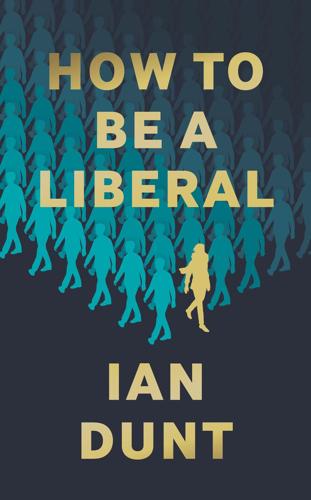
How to Be a Liberal: The Story of Liberalism and the Fight for Its Life
by
Ian Dunt
Published 15 Oct 2020
But Drumont’s writing started to outline a modern variant of this age-old hatred. He moulded together several types of anti-semitism. The first was an ancient Catholic suspicion of the ‘Christ-killers,’ bolstered by a still-present reactionary hatred of the French Revolution. The second was a pseudo-scientific racism based on the physical characteristics of individuals. The third was a left-wing hostility towards capitalism, and especially banking, which Jewish people were seen to embody. The fourth was the notion of a plot by Jewish outsiders to undermine the integrity of the nation. Dreyfus was found guilty.
…
In Germany, it was the ‘volk,’ which translated as the people with a racial connotation. The will of this racial grouping was encapsulated by the leader. The race was singular, pure and good, but it had been undermined by an international Jewish conspiracy. With only minor changes, this conspiracy followed the anti-semitic formulation of the Dreyfus Affair – pseudo-scientific racism, left-wing hostility towards capitalism and right-wing anxiety around the integrity and security of the nation. As in 1890s France, the conspiracy theory could be moulded to fit any historical circumstance. Jews were responsible for undermining the war effort in 1918 and therefore for Germany’s military defeat.

Animal Spirits: The American Pursuit of Vitality From Camp Meeting to Wall Street
by
Jackson Lears
What were considered enlightened views of human nature shifted away from a Christian emphasis on a common soul of man, made in the image and likeness of God—to rigid taxonomies based on supposedly inherent physical traits, above all, race. This was the pattern identified by Max Horkheimer and Theodor Adorno as the dialectic of Enlightenment: rational methods could be put in the service of irrational ideologies and prejudices; separation from inherited tradition could create new forms of coercion. Scientific racism reinforced hierarchical distinctions between animality and humanity, wildness and civilization, by assuming they were rooted in irrefutable observation and measurement. Positivist certainty reasserted a mechanistic vision of the nonhuman world and an explicit rejection of vitalism. The rise of positivism was evident in the transformation of biological thought.
…
This point of view was one that many Americans found reasonable by the early twentieth century. The revaluation of animal consciousness betokened the spread of dawning doubts into a reconfiguration of value. The Anglophone imperial gaze had depended on conventional assumptions of hierarchy, often ratified by scientific racism, to maintain the gazer’s sense of mastery over various subaltern groups. But by the 1880s and ’90s, even as white domination was being consolidated in the extermination of Native Americans, the establishment of Jim Crow, and the acquisition of overseas empire, the imperial gaze had begun to turn back in on itself, revealing troubling truths about the gazer.
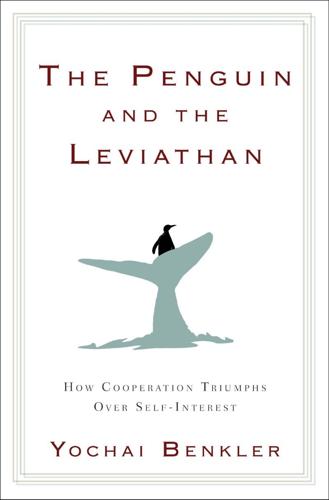
The Penguin and the Leviathan: How Cooperation Triumphs Over Self-Interest
by
Yochai Benkler
Published 8 Aug 2011
His work looked to culture, instead of biology, to explain human differences across societies and races, spawning the birth of modern anthropology as a new scientific basis from which to attack the assumptions that certain races, religions, and cultures were superior to others. The first generation of this modern scientific nature/nurture debate continued for several decades, and it was only the horror of Nazism that put it to rest, at least for a time. Repulsed by the Nazi uses of eugenics and scientific racism, the scientific and academic community had by the 1950s finally settled the battle more or less completely on the culture side. • • • But it was not forever that the biologists would be banished from the debate over the mysteries of human nature and sociality. The vehicle that brought them back into the picture in the 1970s was the resurgence of interest in animal behavior.

War of Shadows: Codebreakers, Spies, and the Secret Struggle to Drive the Nazis From the Middle East
by
Gershom Gorenberg
Published 19 Jan 2021
In March 1940 Fellers wrote a paper against America entering the war. “The bitter criticism in America of Herr Hitler is strongly tinged with British and Jewish propaganda,” he wrote. He decried immigration of Jewish refugees, a view that was unremarkable in the officer class. He attacked the ban on Japanese immigration, an exceptional position when “scientific racism” and the yellow peril were accepted truths in that class.29 He went to the Republican convention in 1940 and favored isolationist candidate Robert Taft. He despised Roosevelt. But the mission to Madrid meant that he now was assigned full-time to military intelligence. Ultimately, it meant that Bonner Fellers would be one of Roosevelt’s valued sources on a war that Fellers had opposed as fervently as Lindbergh did.
…
The biography of Bonner Fellers is based on numerous documents in the Bonner Frank Fellers Papers at the Hoover Institution Archives including, HBF B17 F1, Military Record and Report of Separation, November 30, 1946; B17 F5, Oral History Interview, 1967; B17 F6, Oral History Interview, 1973; B17 F13, Travel Documents, 1923–1938; B19 F19, Fellers to Clarke, May 7, 1940; B21 F6–8, Frazier Hunt Correspondence; 29/36, “We Are Headed for War” (notes for a lecture); B20 F31, Herbert Hoover Correspondence; B21 F4, Frederick Howe Correspondence; B30 F3, Travel Notes, 1922–1939; B38 F12, Military Career Correspondence, 1940–1941. Additional sources include the Bonner Fellers website, www.bonnerfellers.com (accessed March 25, 2015); Megan Rosenfeld, “Brig. Gen. Bonner Fellers, Ret., Dies,” Washington Post, October 10, 1973, B8. 28. Budiansky, Battle of Wits, 38. 29. On “scientific” racism, anti-Semitism, and fear of the “yellow peril” in the US Army in the first half of the twentieth century, especially in military intelligence and at the War College and West Point, see Joseph W. Bendersky, The “Jewish Threat”: Anti-Semitic Politics of the U.S. Army (New York: Basic Books, 2006). 30.
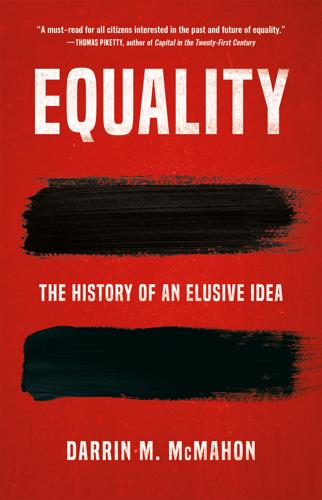
Equality
by
Darrin M. McMahon
Published 14 Nov 2023
The very use of the Vattelian analogy invoked by Barbosa and others, likening the personhood of nations to the personhood of individuals, invited such consideration. It was encouraged by other forces as well. One leading scholar has written of the “globalization of equality” in the decades between 1880 and 1940, as new doctrines of common humanity emerged in response to the strident assertion of scientific racism and white supremacy in the same period. Another invokes a phrase of the Indian activist and statesman B. R. Ambedkar to describe the emergence of a modern “faith in equality” that crystallized in this period and spread around the world.18 It was this same period, too, that witnessed the birth and consolidation of an international women’s movement, channeled through such bodies as the International Council of Women, the International Alliance of Women, and the Women’s International League for Peace and Freedom.
…
Like many Christian abolitionists, he justified the fundamental likeness of human beings on the grounds of monogenism. But it was only in the aftermath of World War II, when scientists were able to discredit the racial taxonomies elaborated since the eighteenth century and undermine the foundations of eugenics and scientific racism, that those universal claims acquired scientific heft. Researchers, in time, would deprive the very category of “race” of scientific grounding and legitimacy, even though simple prejudice proved more stubborn.60 Those demonstrations, like parallel efforts to undermine the scientific authority of sexism, were nonetheless important.
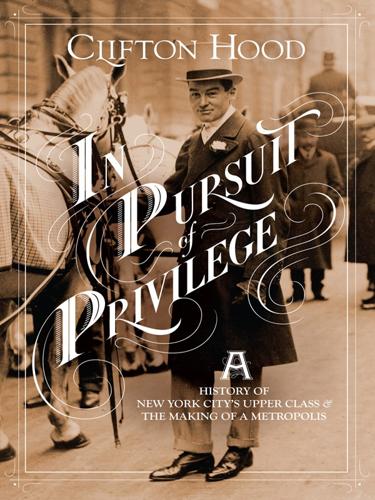
In Pursuit of Privilege: A History of New York City's Upper Class and the Making of a Metropolis
by
Clifton Hood
Published 1 Nov 2016
The emphasis here was on tracking the colonial American and European antecedents of present-day families, identifying forebears who had achieved distinction, and learning the origins of surnames. As anxieties grew over increased immigration, this exploration of the colonial heritages and English and Dutch antecedents of middle- and upper-class New Yorkers suffused genealogy with nativism and scientific racism and strengthened its capacity to legitimate social relations.41 Genealogy had close links to other social practices that expanded its cultural appeal. A new kind of social organization that venerated family heritage and colonial history, the patriotic hereditary society, came into vogue in the 1880s.
…
Existing institutions such as the American Museum of Natural History and the Metropolitan Museum of Art expanded significantly in the late nineteenth century, due in large measure to the money, leadership, and networks of the upper class. Needless to say, this support had significant costs. As scholars who have examined the links between leaders of the Bronx Zoo and the Museum of Natural History and the ideologies of scientific racism and nativism have shown, major cultural organizations amply reflected the apprehensions and ambitions of upper-class and upper-middle-class New Yorkers.73 A study of two key institutions—the Metropolitan Opera and the Metropolitan Museum of Art—will help us understand how elites imagined New York as a great city, worked out their inner conflicts, and related to the public.

Bourgeois Dignity: Why Economics Can't Explain the Modern World
by
Deirdre N. McCloskey
Published 15 Nov 2011
In the enthusiasm for the materialist but deeply erroneous pseudo-discoveries of the nineteenth century—nationalism, socialism, Benthamite utilitarianism, hopeless Malthusianism, Comtean positivism, neopositivism, legal positivism, elitist Romanticism, inverted Hegelianism, Freudianism, phrenology, homophobia, historical materialism, hopeful communism, left anarchism, communitarianism, social Darwinism, scientific racism, racial history, theorized imperialism, apartheid, eugenics, tests of statistical significance, geographic determinism, institutionalism, intelligence quotients, social engineering, slum clearance, Progressive regulation, cameralist civil service, the rule of experts, and a cynicism about the force of ethical ideas—much of the clerisy mislaid its earlier commitment to a free and dignified common people.
…
The history of northwestern Europe and then of other places exhibits a mechanism of weak irreversibility, a ratchet in free trading and bourgeois dignity that seems at length to have prevailed. Let us again pray that the comparable and opposite ratchet, of government taxing and spending, such as Robert Higgs discerns, does not overwhelm betterment.9 Why northwestern Europe? It is not racial or eugenic, a hardy tradition of scientific racism after 1870 to the contrary, revived nowadays by some economists and evolutionary psychologists forgetful of the history.10 Nor is it the traditions of the Germanic tribes of the north, as the Romantic Europeans have been claiming now for two centuries. Consider the explosive economic successes of highly non-European and non-Germanic places such as India and China, and before them Korea and Japan, and for a long time the economic successes of overseas versions of all kinds of ethnic groups, from Jews in North Africa to Parsees in England to Old Believers in Sydney.
…
Part IX The History and Economics Have Been Misunderstood 56 The Change in Ideas Contradicts Many Ideas from the Political Middle, 1890–1980 The rhetorical and ethical change around 1700, I say, contrary to the materialist persuasions of many of my colleagues, caused modern economic growth, which at length freed us from ancient poverty. As Jane Jacobs put it, the ethical code for commerce slowly replaced the ethical code for guardianship.1 Hierarchy seemed less natural, though given a second life around 1890 by scientific racism. Modern economic growth did not corrupt our souls, contrary to the antibourgeois rhetoric of the modern clerisy since 1848, and contrary also to an older line of aristocratic and priestly sneering at bourgeois life. The rhetorical and ethical change at the national level was necessary for the first Industrial Revolution and then for the Great Enrichment.

Ever Since Darwin: Reflections in Natural History
by
Stephen Jay Gould
Published 1 Jan 1977
As privileged members of society, more often than not they end up defending existing social arrangements as biologically foreordained. I discuss the general message in an obscure debate within eighteenth century embryology, Engels’s views on human evolution, Lombroso’s theory of innate criminality, and a twisted tale from the catacombs of scientific racism. The final section pursues the same theme, but applies it to contemporary discussions of “human nature”—the major impact of misused evolutionary theory upon current social policy. The first subsection criticizes as political prejudice the biological determinism that has recently deluged us with killer apes as ancestors, innate aggression and territoriality, female passivity as the dictate of nature, racial differences in IQ, etc.

The Fair Trade Scandal: Marketing Poverty to Benefit the Rich
by
Ndongo Sylla
Published 21 Jan 2014
The Impact of Agricultural Trade Policies on Developing Countries (Washington, DC: International Food Policy Research Institute). Doussin, Jean-Pierre (2009) Le Commerce équitable [Fair Trade] (Paris: PUF, Que sais-je ?). Drescher, Seymour (1992) ‘The Ending of Slave Trade and the Evolution of European Scientific Racism’, in Inikori, Joseph E. and Engerman, Stanley L. (eds) The Atlantic Slave Trade: Effects on Economies, Societies and Peoples in Africa, the Americas and Europe (Durham, NC: Duke University Press, 361–96). Duménil, Gérard and Lévy, Dominique (2011) The Crisis of Neoliberalism (Cambridge, MA: Harvard University Press).
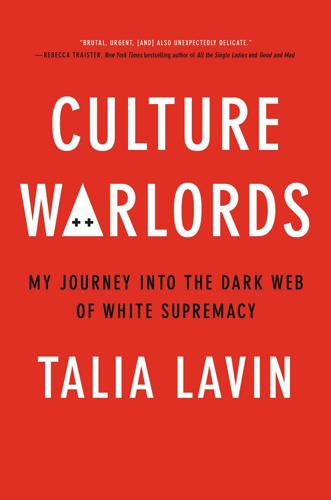
Culture Warlords: My Journey Into the Dark Web of White Supremacy
by
Talia Lavin
Published 14 Jul 2020
Chapter 2 The Jews In many ways, contemporary white supremacy is not a new ideology. Its means of dissemination may be technologically novel, as it throws tendrils out across social-media sites, chat apps, and blogs. But its central ideas are a mélange of influences plucked from predigital decades—a bigot’s pastiche that encompasses everything from nineteenth-century scientific racism to late-twentieth-century dystopian racist fiction. In 2019, many of the ideas put forth by the likes of Henry Ford, George Lincoln Rockwell, and William Luther Pierce have returned to a certain prominence. Copies of The International Jew are available online, both for free and for sale in dozens of separate iterations; at the time of this writing a handsomely bound paperback edition was for sale on Barnes & Noble’s website.

Uprooting: From the Caribbean to the Countryside - Finding Home in an English Country Garden
by
Marchelle Farrell
Published 2 Aug 2023
But to prevent the groups banding together in successful uprisings against their masters, a system of preferring the Europeans over the Africans was instituted by the plantation owners. This was initially based on faith, with Christian lives considered more worthy than non-Christians, who were seen as subhuman. Over time, and influenced by ideas such as the writing of Edward Long, a slaver who published the History of Jamaica, the classic text of pseudo-scientific racism, this faith-based hierarchy became a race-based one, with a shift in the privileged class from being called Christians to Whites. In my childhood I was a profound believer, thumbing the rosary in my pocket, Hail Marys never far from my tongue. I feared God and liked Jesus, who seemed a kind man with sensible teachings, but Mary was the one I truly worshipped, a slightly blasphemous bent to the primacy of her place in my affections.
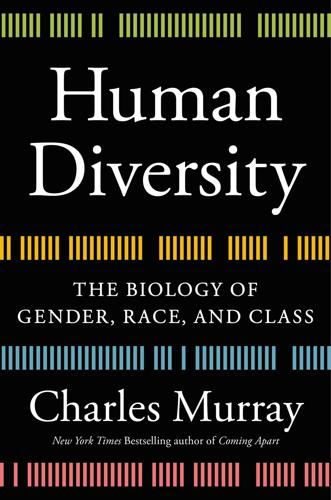
Human Diversity: The Biology of Gender, Race, and Class
by
Charles Murray
Published 28 Jan 2020
For the United States, founded on ideals of liberty and equality, that record was a fatal flaw that in my view ensured the eventual unraveling of the American project.[1] Among scholars, the opening of the twentieth century saw a scientific backlash not only against the idea of a racial hierarchy but against the idea of race itself. Its most prominent spokesman was Franz Boas, a pioneering anthropologist and a fierce opponent of what he labeled “scientific racism.”2 A British anthropologist who studied under Boas, Ashley Montagu, took his mentor’s position to new levels of passion (“Race is the witchcraft, the demonology of our time”) and set the rhetorical tone for today’s academic orthodoxy. The book from which that quote is taken, Man’s Most Dangerous Myth: The Fallacy of Race, was originally published in 1942 and remained in print throughout the rest of the century.3 In the 1970s and 1980s, the backlash against the concept of race got new ammunition with two propositions: The genetic differences among human populations are insignificant, and humans left Africa too recently for important differences to have evolved.
…
The reasons are legitimate, not political, and they are both historical and scientific. Historically, it is incontestably true that the word race has been freighted with cultural baggage that has nothing to do with biological differences. The word carries with it the legacy of nineteenth-century scientific racism combined with Europe’s colonialism and America’s history of slavery and its aftermath. Scientifically, it is an error to think of races as primordial. Part of the story I will tell describes the repeated cycles of mixing, isolation, and remixing that have gone on among the populations that left Africa.
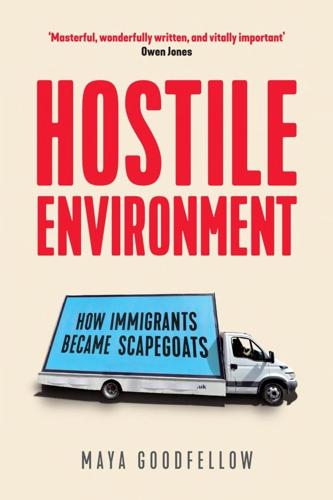
Hostile Environment: How Immigrants Became Scapegoats
by
Maya Goodfellow
Published 5 Nov 2019
Intended for a middle-class audience, one London weekly newspaper described ‘the Bethnal Green poor’ as ‘a caste apart, a race of whom we know nothing’.13 But over the late nineteenth and throughout the twentieth centuries, the racial hierarchy was solidified. Forming a justification for colonialism and slavery since the colonisation of the Americas in 1492, and then backed up by the scientific racism of eugenicist Frances Galton, as well as academics, politicians and thinkers – in other words, significant sections of the elite – it increasingly came to be believed that visible differences were a sign of much deeper ones. Humans have inherited a biological essence related to skin colour and bodily features, they said, and this biology decides our abilities.

Live Work Work Work Die: A Journey Into the Savage Heart of Silicon Valley
by
Corey Pein
Published 23 Apr 2018
Through coded language and symbols of affinity, this ideology turned personal frustration into camaraderie and a sense of purpose. Not all schemes of redemption and vengeance inspired by this online movement have been chimeras. Numerous American terrorists in recent years have been, by their own accounts, radicalized online and indoctrinated into extreme forms of misogyny, scientific racism, pro-Nazi historical revisionism, and other branches of “red pill” philosophy. Elliot Rodger, the misogynist mass shooter who killed six people near the University of California, Santa Barbara, in 2014, was a red-pilled “incel”—involuntary celibate—and a self-professed fascist, not to mention a YouTube vlogger who, after his crime, racked up millions of views.
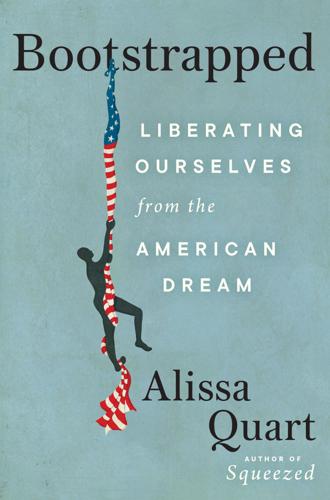
Bootstrapped: Liberating Ourselves From the American Dream
by
Alissa Quart
Published 14 Mar 2023
Darwin’s “pro-social” view of nature: Jason G. Goldman, “7 Questions with . . . Eric M. Johnson,” Scientific American, September 3, 2010, https://blogs.scientificamerican.com/thoughtful-animal/7-questions-with-8230-eric-m-johnson. community-minded version of Darwin: Of course, we mustn’t forget that critics find evidence of “scientific racism” in his work, citing examples like this sentence from The Descent of Man: that at “some time the civilized races of man will exterminate and replace throughout the world the savage races.” the late scholar and activist David Graeber wondered: David Graeber, “What’s the Point If We Can’t Have Fun?
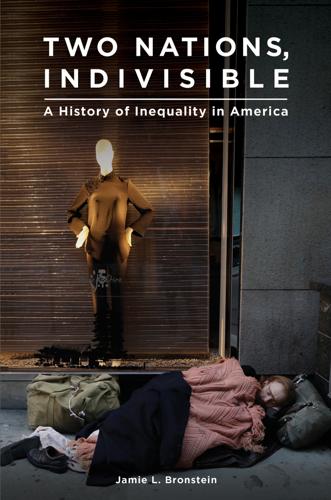
Two Nations, Indivisible: A History of Inequality in America: A History of Inequality in America
by
Jamie Bronstein
Published 29 Oct 2016
The end result of this was twofold: an emphasis on social uplift that came from within the black community, and exasperation with white Progressivism.89 Some Progressives, like Theodore Roosevelt, believed that the potential for democracy was, at least in part, racial—that Anglo-Americans possessed more of the genius for self-government than anyone else. “Scientific racism” proposed a hierarchy of the races, with the white Anglo-Saxon at the top and other, “less advanced” cultures lower in the hierarchy. Africans and Aboriginal peoples were considered to be at the bottom of the hierarchy, but other nonwhite people were also held to be inferior. The Progressive period thus saw limitations on immigration from places like China (the Exclusion Act of 1882) and Japan (the Gentlemen’s Agreement of 1908), and by the 1920s, successive Immigration Acts that drastically cut back permissible immigration from southern and eastern Europe.

Empire of Things: How We Became a World of Consumers, From the Fifteenth Century to the Twenty-First
by
Frank Trentmann
Published 1 Dec 2015
But the Niger and other inland regions proved more treacherous than explorers had reckoned. Above all, the free-labour colonies in West Africa turned out to be troubled experiments. This, together with the Indian rebellion of 1857, spread doubts about whether non-white subjects could be refashioned in their masters’ image. A harder, scientific racism began to colour the imperial mindset. This more aggressive stance was partly a reaction to the difficulties European traders and missionaries encountered on the ground. Commerce and consumption did in fact continue their forward march in the second half of the nineteenth century. In West Africa, many indigenous traders followed the evangelical script.
…
In a pioneering study, the literary scholar Thomas Richards argued that these imperial adverts showed the ‘homogenizing power of the commodity’.137 Ads for Bovril and Pear’s soap used African settings and placed indigenous people all over the world in the same subservient position: as grateful recipients of civilizing goods. The nineteenth century, Anne McClintock has argued in an influential study of race and gender, saw a shift from scientific racism to ‘commodity racism’. Exhibitions, advertisements and branded goods meant that ‘as domestic space became racialized, colonial space became domesticated.’138 The Pear’s Soap advert of a white boy scrubbing a black boy to white purity and progress is a classic example. Yet, looking through adverts and newspapers of the period, what is noteworthy is not that racial images appear but that they do so far less often than we might expect.
…
B. 305–6, 528 print culture 47 see also books Prittwitz, Moritz von 116 privacy 94, 223, 236, 245–6, 377, 398, 546; durables and the privacy of the home 253; private lifestyles and socialist regimes 333, 375–6, 377; for those suffering from mental illness 555 private consumption see consumption: private privatism 392, 399 privatization 329, 375–7, 391, 535, 596 production: and class/caste 381; colonialism and tropical production 78–9, 80, 90, 91, 162–3; and company leisure see company leisure activities; and company towns 524–8, 534; consumption as ‘sole end’ of 3, 54, 100, 151; consumption subordinated to 11, 41; corporate-led consumption see company services, and corporate-led consumption; empire writing out the colonial producer 173; environmental damage from 683 see also pollution; factory production 146 see also factories; leisure from high productivity 287; as a man’s role 11, 43; mass see mass production; monopolized by husbands 43; national products 297–300; outsourced 683; politics of productivity 294; separation from consumption 246; standardized see standardization; united with consumption in the home 269, 270; war production 529 ‘progressive individualism’ 237–8 propaganda 69, 126, 277–8, 293, 616, 644 property prices 423, 428 prosperity gospel 610–11, 615 Protestant American teenagers 613 Protestant revival in China 607 Providence, water consumption 187, 188 Provident Clothing and Supply Company 412 Provident Loan Society 412 prudence 109, 116, 236, 593 see also thrift Prudential 500 Prussia 205, 264, 415 Pu Zhongqian 47 Public Citizen 555 public consumption 331, 335, 373, 537, 538, 540, 541, 542–4, 548 see also public services; social spending; welfare; cities as providers of 183; public support for cultural consumption 546–7 public housing 243, 553–5, 681 public services 1–2, 278, 331, 548–61 see also electricity; gas; water, running; American 450; and consumer politics 391; ‘consumerization’ of 548; fairness in 549, 561; and Ombudsmen 557–8; protection of ‘service to the citizens’ 389; utility networks 175–6, 180, 181, 183, 188–9, 220, 248, 670, 681 public space see space public spending see social spending Puddletown, Dorset 511 Puget Sound golf association 529–30 Pugh, Sarah 156 Pullman Palace Car Company 524 puppets 105; puppet theatres 105, 472 purchasing power see spending power purgatory 405 Purimix 328 Puritanism 75, 99, 218; Puritan values 118; Puritan work ethic 450, 455 Pythagoras 105 Qing dynasty 48, 49, 52, 110 Quakers 128, 237 Que Choisir 276 Queensland 166 queueism 277 Quito 64, 208 Quran 619, 620; Challenge Board Game 618; instructors 620 race: American racism 136; commodity racism 171; and credit 423–4; ethnic food and racial prejudice 600–601; exotic goods and racism 168–9; hardening of racial thinking 121, 129; hierarchies destabilized by Second World War 305; racial asymmetry 121; scientific racism 129, 171; segregation 305, 577; tourism and the racial state 291 radio 259, 263, 264–6, 267–9, 284, 311, 346, 464, 471, 681; clubs 264; collective listening 265; French law on French content of broadcasts 353; hobbyists 264; in India 366, 388; legislation for listener protection 265; and morse code 264; and printed circuits 657; programmes exhorting self-denial 306; Roosevelt’s radio chats 287; sets/receivers 4, 14, 223, 247, 263, 264–5, 270, 279, 280, 290, 293, 294, 295, 333, 366; ‘social authoritarianism’ of 266; Volksempfänger 290 radioactive waste 684 Radiofiduciaire 411 Radiola 264, 265 rag-and-bone men 628, 633, 635 rag pickers 626, 628, 629, 630, 633–4 rag trade 628–9 railways 609 Rajput 362 Ramadan 618 Ramanandis 142 Ramey, Valerie 445 Ramsay, Allan 101 rare-earth elements 684 Rathje, William 650, 651 ‘rational recreation’ 216, 456, 545–6 rationing 276–7, 328 Rauschenberg, Robert 637 Rawls, John 95 Reader’s Digest 306, 310 reading 217, 307, 320, 354, 456, 457, 459, 460–61, 467, 475, 507; clubs 351; by the elderly 506; in national time-use surveys 454, 458–9; shared reading aloud 462 Reagan, Ronald 553; Tax Reform Bill (1986) 427 Reagan administration 544, 553 rebranding 4, 167, 256, 299–300, 419, 566 recession 287, 403, 405, 420, 426, 428, 521, 668, 683 record industry 263, 268, 685 see also music: recordings and broadcasting recreation see also dance; games; play; sports: as collective endeavour 528–9; companies subsidizing commercial recreation 532; companyfacilitated 525, 526–31, 535–6; and Congo women 472; defining generations 506; and delinquency 217; demands 305; as developmental 219; for the elderly 503–6, 509, 511–12, 516; family activities 340; family spending on 148, 339; investment in public 219; in Japan 359, 473; leisure as primarily recreational 469; moral defence of 261; and national parks 281; ‘rational’ 216, 456, 545–6; recreational crafts 261; recreational shopping 100, 480–82; regulation 215; retirement given meaning by 503; Sunday 476–7, 479; US armed forces centres for 543; as a waste of money 342 recreational crafts 261–2 recycling of waste 628–9, 631, 632, 635, 638–47, 648, 651–2, 662–4, 675; bottle banks 639; European regions of 644, 645; European Union 640, 652, 653; Freecycle network 654, 682; legislation and regulation 639; and thrift 629, 642–3; used electronics 662–4 Redeemed Christian Church of God (RCCG) 614, 615 Reformation 1 refrigeration 208, 244, 588, 650 refrigerators see fridges Refurbished Information Technology Equipment Association (RITEA) 660 religion see also spiritual life: American teenagers following parents’ religion 613; beliefs about God 613; Buddhist see Buddhism; Christian see Christian religion and Church; commercial culture used by 607–13; Confucian philosophy/religion see Confucianism; consumer culture, affluence and 606–21; and the Englightement 606; Hindu see Hinduism; impact of urbanization 196; materialism as the new religion 606; as moral balancing rod 387; Mormons 608, 609–10; Muslim see Islam/Muslims; religious attendance 306, 475, 477, 479, 606, 607, 608; rituals 79, 616; and the shift to modernity 606; Shinto 585, 615–16; syncretism 613 remittances, marriage 592 remittances, migrant worker 334, 383, 589–96; in form of consumer goods 596; and household access to ICT in African countries 594; household use in African countries 592; outside the family 596 Renaissance 22, 28–38, 96; courtesy literature 108 rent 103, 114, 116, 242–3, 331, 408, 425, 655; in America 239, 242, 244; control 242, 243, 278; in England 243–4, 555; Krupp workers 523; maximized 249; in the Raj 145; rebates 601; strikes 243; and water rates 184 repairing 659–60, 682; repair cafés 682; tax exemption on repair services 682 reputation 94 Resident Welfare Associations 392 RESO (Folkrörelsernas Reseorganisation) 534 restaurants 107, 353, 531; in China 190, 357; and elderly people 508; and the elite 605; ethnic restaurants and migrant food cultures 597, 600–601, 603, 604; in Germany 597–8, 601, 603, 604; in Paris 181; serving ‘local’ food 580, 582–3; slow-food 470; travel in France to 685 restraint 37, 41, 114, 141, 390, 527 see also self-control; self-denial; thrift; bourgeois 117, 118, 311; clash with desire 38; collapse of self-restraint 8, 343, 405, 406, 439; moral restraints 143; sexual 365; thrown by easy credit 405 retail therapy 485 retail trade see also customer service: department stores see department stores; market halls 207–8, 209; ‘sales’ 194; shopkeepers see shopkeepers; shopping see shopping; shops see shops; supermarkets see supermarkets; turnover 194 retirement 450, 498–519 see also elderly people; communities 498–9, 514, 519; homes 504, 505, 506, 508, 510, 511 revolution 111–12, 113, 147, 190 Reynolds, Frances 108, 109 Ricardo, David 151 Ricci, Matteo 43–4 rice 27, 44, 45, 46, 128, 358, 359, 383, 585, 599, 602, 604, 635, 645; fields 666 Riesman, David 302, 436, 450 riots: food 278; youth 310, 496 rituals see also routines: coffee drinking 87; eating 14; impact of empire on taste and 78–93; and imperial identity 144; maté 80–81; religious 79, 616 Riú, Luis 512 Robbins, Lionel 152 Robertson, James 536 Robertson, Pat, ‘700 Club’ 611 Robinson, Harold 264 Robinson, John 444 Rochdale Pioneers 206 Roche, Daniel 42 Roche (pharmaceutical company) 532 rock’n’roll 311, 314, 327, 329, 351, 467; Christian rock albums 611; ‘Jailhouse rock’ 313; state-sponsored rock bands 333 Rökk, Marika 313 Rolling Stones 352 Romania 327, 645 romanticism 290, 496 Rome 156 Rooiyard, Johannesburg 252 Roosevelt, Edith 227 Roosevelt, Franklin Delano 285–6, 287 Roosevelt, Theodore 9 Röpke, Wilhelm 306 Roppongi-zoku 378 Roscher, Wilhelm 3, 116 Rosenberg, Ethel 307 Rosenberg, Julius 307 Rosenfeld, Art 671 Rouen 124 Round about a Pound a Week 149 Rousseau, Jean-Jacques 95, 100–101, 117, 230, 234, 279, 435, 677 routines 14, 87, 688 see also habits; rituals Rowntree, Seebohm 306, 313 Royal British Legion 512 Royal Society 97 Royal Tailors 201 Royer Law (1973), France 349 rubber 225 rum 166 running water 221 Russell, Bertrand 234 Russia 122–3, 203, 276–7, 292–6, 328, 480, 535 see also Soviet Union; 1917 revolution 276; Bolsheviks 276–7; company services 535–6; consumer politics 276–7, 294–5; tea-drinking 80, 163 Russian empire 80 Ryukyu 25 safety 226 SAGA 512 Sagan, Françoise 311 Sainsbury, Alan 350 Saint-Geours, Jean 325–6 Saint-Pierre, Bernadin de 79 St Petersburg 225, 512, 558 salesmanship 69 ‘Salon of Taste’, Turin 470 salt 141 salt merchants 49, 52 Salter, James 86 Salut des copains 312 Salviati family chapel 33 San Francisco 671 Sánchez, Fernando 588–9 Sandys, George 78 Sankey, Ira 608–9, 612 Santander 77 Sant’Elia, Antonia 636 Santiago, Jalisco 591 São Paulo 176, 204, 208 Sartre, Jean-Paul 307 Saßnitz 331 satin 21, 31, 51, 60, 64, 140 Saudi Arabia 590, 618 Savanarola, Girolamo 36 Save Money and Reduce Trash (SMART) 648 savings 342, 363; in America 305, 342, 418, 420, 421, 422; in Asia 11, 362–4, 372, 417, 418, 420, 421, 426, 438, 679, 681; banks 243, 362, 417, 418, 419; bonds see bonds (savings/financial); in Britain 418–19, 420, 421, 430; campaigns as trojan horse for world of goods 419; in Canada 540; channelled by banks into sub-prime mortgages 426; compulsory 371, 418; credit, spending and 417–28; in Finland 364, 418, 419, 420, 421, 679; in Germany 414–15, 422, 426, 430, 438, 679–80; global decline in 1980s and 1990s 422–3; household savings rates 362–3, 372, 417, 420, 421; lifecycle model 420–21, 422; motivations for 420–22; and nationalism 364, 415; permanent-income model 420, 421–2; and public assistance 681; save and spend model of consumption 362–4; stamps 417; ‘target’ saving 364, 419; and tax exemptions 414–15; Volkswagen saving scheme 290–91; and war 417–18, 419 Saxony 81, 88, 148 Say, Jean-Baptiste 153, 157 Scandinavia 40–41, 225, 320, 339, 426–7, 438–9, 449, 460, 531–2, 537, 541, 547, 551, 557, 679 see also individual countries; elderly people 507, 508, 510, 557; household waste 1980–2005 643 scarcity 41, 98, 185, 284; affluence and ‘increasing scarcity of time’ 460; bolstering state power 277; and consumer activists 393; economy 332; protection against 278; shaping world view 290–91, 393 scavenging 216, 382, 651 Schaffendes Volk exhibition 291–2 Schama, Simon 57, 324 Schäuble, Wolfgang 479 Schelling, Friedrich 233 Schlink, Fred 287 Schloesser, Robert 276 Schmidt-Bleek, Friedrich 665 schnapps 166 Scholes, Abner 94 School Xhosa 347–8 schools 305, 312; American in-school advertising and branded give-aways 485; in Beijing 494; clothes 497; consumer clubs in Indian schools 390; free water in 177; hygiene in 177–8, 189; Indian 391; meals 543–4; shaping tastes and leisure 543–4; and waste 648 Schor, Juliet 443–4 Schorndorf 575 Schulze, Oskar 503 Schumpeter, Joseph 119, 141 Schütte-Lihotzky, Grete 249–50 Schweppes 639 Schwitters, Kurt 636–7 science 96, 609; home science 256 Scotland 104, 186, 475, 478, 513; Scottish Enlightenment 102 Scrivener, Christiane 552 Scuttler gangs 498 second-hand goods market 71, 145, 375, 629, 632–3, 656–7, 658–9, 660 Second World War 272, 279, 312, 504, 573; destabilizing hierarchies of class, gender and race 305; and the mutation of company services 529; and mutual dependence 573; post-war consumer boom 10, 12; post-war cultural reconstruction 351–2; production 529; and US savings bonds 418 secularism 306, 606, 607 see also materialism security 238, 272, 307, 341, 392, 579, 614, 661; guards 313; and savings 420–22 see also savings; social see welfare; and the veil 619 Seeber, Guido, Wanderkino 212 Seibu 384 Seikosha 359 Seiyu (department store) 534 self see also identity: authentic 96, 100, 235; and body see body; cult of the self 284, 285; as a fiction (Hume) 101–2; material see material self; a pure self 101; restless 231; role of things in development of 231–5; separated from things 95–7, 230–31, 235–6; socialist 294 self-control 35, 36, 419 see also restraint self-denial 117, 287, 306 see also restraint self-expression 314–15, 387, 439; and finding of identity through consumption, goods and possessions 6, 104–5, 231–5, 314–15, 320, 344, 375, 484, 677, 681, 686 self-fashioning 30, 63, 94, 108, 281, 323, 498, 681 self-fulfilment/improvement 229–30, 316, 348, 411; Asian ideas of 387, 472, 473 self-help 555, 556; manuals 107–8; and Pentecostalism 614 self-identity see identity self-realization/actualization 94, 316, 323 self-reliance 261, 680 self-respect 135, 177 self-restraint see restraint self-service 69, 348, 349, 350–51; shops 328, 329, 330, 349 see also supermarkets selfishness 105, 156, 297, 568, 613; and consumption 102, 156, 397, 403; and neo-liberalism 567; self-centred hedonism 5 see also hedonism; selfish culture of instant gratification 607 see also instant gratification; selfish individualism 549 see also individualism/individualization; selfish materialism 224, 273 Selfridge, Gordon 199, 201 Selfridges 193, 194, 199, 201 Seligman, E.

Mindf*ck: Cambridge Analytica and the Plot to Break America
by
Christopher Wylie
Published 8 Oct 2019
Race realists believe, for example, that black Americans score lower on standardized tests not because the tests are skewed, or because of the long history of oppression and prejudice that blacks must overcome, but because they’re inherently less intelligent than white Americans. It’s a pseudoscientific notion, embraced by white supremacists, with roots in the centuries-old “scientific racism” that underlies, among other disasters of human history, slavery, apartheid, and the Holocaust. The alt-right, led by Bannon and Breitbart, adopted race realism as a cornerstone philosophy. If Bannon were to succeed in his quest for liberation of his “free thinkers,” he needed a way of inoculating people from political correctness.
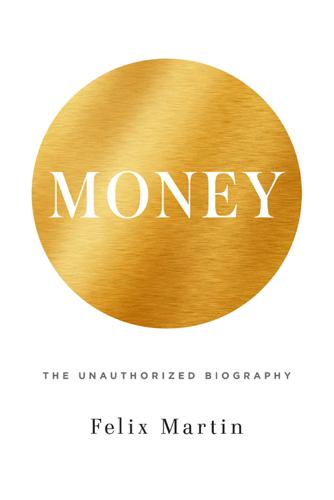
Money: The Unauthorized Biography
by
Felix Martin
Published 5 Jun 2013
It sounds bizarre to us today that anyone could believe that you could tell an anarchist by his ears, or a thief by the shape of his nose. But the point is that the people who believed all this had no vested interest in locking up people with unusual faces—they simply believed in the naturalistic explanation of criminality as a product of physiological factors. Likewise, ‘scientific racism’ was widely accepted as the truth in nineteenth-century America. The inferiority of non-white peoples could be ‘proved,’ it was believed, by physical differences. And again, it was the hallmark of a liberal outlook—not a reactionary one—to believe this kind of thing. The point is that naturalistic reasoning in the social sciences—claiming to explain social phenomena as objective truths of nature—is self-reinforcing.

Risk: A User's Guide
by
Stanley McChrystal
and
Anna Butrico
Published 4 Oct 2021
Cartwright, a well-known physician in the 1850s, promulgated a false theory that African Americans were biologically inferior to whites, claiming that they had smaller blood vessels and brains, and a “tendency towards indolence and barbarism,” and therefore had to be kept in an enslaved state for their own well-being. Scientific racism—a concept that went unnamed then but is clear to us now—gave southerners reasons, albeit untrue, to justify their biases against their enslaved workers. Now, it’s important to note that the majority of southern families were not slaveholders. But the fabric of the South’s economy and lifestyle rested upon a superiority over African Americans held first in bondage and then at a segregated disadvantage.
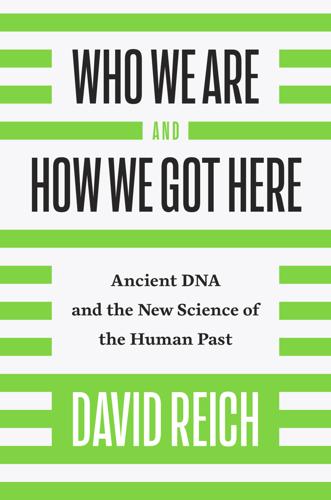
Who We Are and How We Got Here: Ancient DNA and the New Science of the Human Past
by
David Reich
Published 22 Mar 2018
Rasmussen et al., “The Ancestry and Affiliations of Kennewick Man,” Nature 523 (2015): 455–58. 20. Ibid. 21. J. Lindo et al., “Ancient Individuals from the North American Northwest Coast Reveal 10,000 Years of Regional Genetic Continuity,” Proceedings of the National Academy of Sciences of the U.S.A. 114 (2017): 4093–98. 22. Samuel J. Redman, Bone Rooms: From Scientific Racism to Human Prehistory in Museums (Cambridge, MA, and London: Harvard University Press, 2016). 23. M. Rasmussen et al., “An Aboriginal Australian Genome Reveals Separate Human Dispersals into Asia,” Science 334 (2011): 94–98. 24. Rasmussen et al., “Genome of a Late Pleistocene Human.” 25. Rasmussen et al., “Ancestry and Affiliations of Kennewick Man.” 26.

Age of Anger: A History of the Present
by
Pankaj Mishra
Published 26 Jan 2017
‘Totalitarianism’ with its tens of millions of victims was identified as a malevolent reaction to a benevolent Enlightenment tradition of rationalism, humanism, universalism and liberal democracy – a tradition seen as an unproblematic norm. It was clearly too disconcerting to acknowledge that totalitarian politics crystallized the ideological currents (scientific racism, jingoistic nationalism, imperialism, technicism, aestheticized politics, utopianism, social engineering and the violent struggle for existence) flowing through all of Europe in the late nineteenth century. * * * This bizarre indifference to a multifaceted past, the Cold War fixation with totalitarianism, and more West-versus-the-Rest thinking since 9/11 explains why our age of anger has provoked some absurdly extreme fear and bewilderment, summed up by the anonymous contributor to The New York Review of Books, who is convinced that the West cannot ‘ever develop sufficient knowledge, rigor, imagination, and humility to grasp the phenomenon of ISIS’.
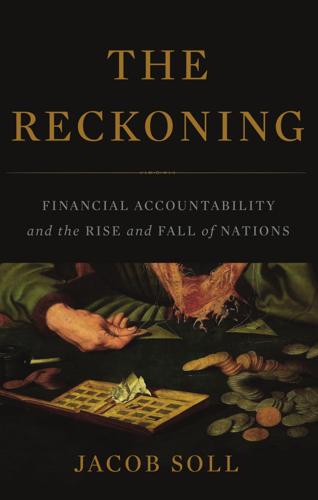
The Reckoning: Financial Accountability and the Rise and Fall of Nations
by
Jacob Soll
Published 28 Apr 2014
It was a notable moment in the history of evolution: Darwin the son had balanced his faculties with those of his father.10 It should come as no surprise that Galton was a pioneer of eugenics and the even more sinister anthropometric studies that sought to improve the perceived quality of superior, literally “well-born” groups of human population through genetic and social selection. It was the basis of the nightmarish modern oxymoron of scientific racism, which would have catastrophic effects in the twentieth century. One of Galton’s most pointed questions revealed the origins of Darwin’s own method. In the line “Special Talents?” Darwin answered, “None, except for business as evinced by keeping accounts, replies to correspondence, and investing money very well.
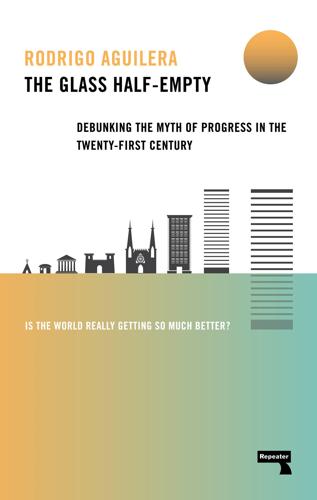
The Glass Half-Empty: Debunking the Myth of Progress in the Twenty-First Century
by
Rodrigo Aguilera
Published 10 Mar 2020
To refuse to acknowledge the carnage at the Somme and Stalingrad, or the gas chambers of Auschwitz, or the subjugation of entire continents for the sake of enlarging colonial empires as intrinsic to enlightened modernity rather than an anomaly is also to deny that we could be capable of repeating the experience. British philosopher John Gray, another “progressophobe” that Pinker despises, summarizes this problem as follows: You would never know, from reading Pinker, that Nazi “scientific racism” was based in theories whose intellectual pedigree goes back to Enlightenment thinkers such as the prominent Victorian psychologist and eugenicist Francis Galton. Such links between Enlightenment thinking and 20th-century barbarism are, for Pinker, merely aberrations, distortions of a pristine teaching that is innocent of any crime: the atrocities that have been carried out in its name come from misinterpreting the true gospel, or its corruption by alien influences.

The Frayed Atlantic Edge: A Historian’s Journey From Shetland to the Channel
by
David Gange
Published 10 Jul 2019
Feminist historians such as Joan Kelly-Gadol, for instance, showed the ‘Renaissance’ to be a narrative that fits the experience of a cadre of wealthy upwardly mobile men, but not their contemporaries whose opportunities narrowed and wealth decreased.2 To sum up an era with the term Renaissance is thus to engage in an identity politics that values the rich alone. The case of the Enlightenment is little different. Social distinctions of race, class, gender and sexuality were not undermined but consolidated: this was the era of scientific racism or ‘the century of the colour line’ as it was labelled by the philosopher W. E. B. Du Bois. Yet the case against the label ‘Enlightenment’ is also a geographic one: to deploy it is to be dazzled by cities and blind to rural sea coasts. As scholarship informed by environmental challenges increasingly encourages focus on place and geographical distinctiveness, the Enlightenment must surely fail as an explanatory narrative.
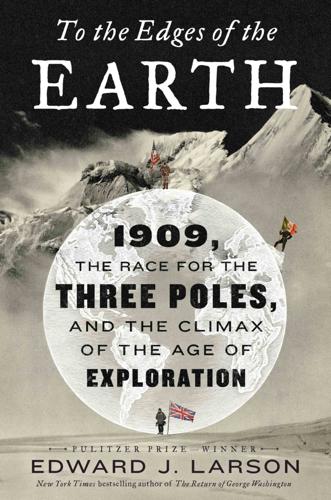
To the Edges of the Earth: 1909, the Race for the Three Poles, and the Climax of the Age of Exploration
by
Edward J. Larson
Published 13 Mar 2018
“Everyone will agree with me,” he wrote on the eve of his 1898 expedition, “that there are no human beings on the face of the globe better adapted to form the rank and file of an Arctic party than that little tribe, the most northerly people of the world, whose fathers and grandfathers lived in that very region.” Yet note the stress on “rank and file.” In line with the so-called scientific racism of the day, which envisioned a progressive evolution of peoples and cultures with Western Europeans on top, Peary depicted Inuits as “children” and their ways as “primitive.” They lived near the coasts, he noted, fearing the interior and the sea ice. But due to his regular visits, Peary believed, they had come to trust him like a generous father and would follow him across the sea ice to the pole.
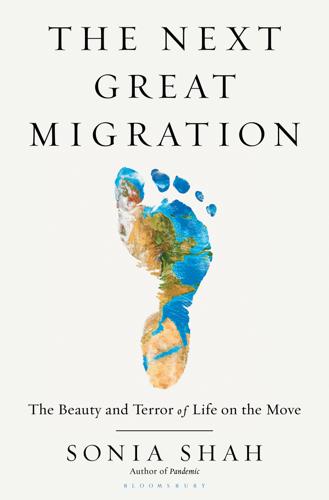
The Next Great Migration: The Beauty and Terror of Life on the Move
by
Sonia Shah
“I don’t believe in this doctrine of racial equality” Liam Stack, “Holocaust Denier Is Likely GOP Nominee in Illinois,” New York Times, February 8, 2018. They implied that mixing biologically distinct peoples Gavin Evans, “The Unwelcome Revival of ‘Race Science,’ ” Guardian, March 2, 2018; Nicole Hemmer, “ ‘Scientific Racism’ Is on the Rise on the Right. But It’s Been Lurking There for Years,” Vox, March 28, 2017; D’Antonio, “Trump’s Move.” allegedly claimed that “if we can get rid of enough people …” Alexander C. Kaufman, “El Paso Terrorism Suspect’s Alleged Manifesto Highlights Eco-Fascism’s Revival,” HuffPost, August 4, 2019.

The Costs of Connection: How Data Is Colonizing Human Life and Appropriating It for Capitalism
by
Nick Couldry
and
Ulises A. Mejias
Published 19 Aug 2019
Subsequently, a branch of anthropology became invested in the elaboration of “racial types,” whereby certain physical attributes were linked to certain mental and behavioral characteristics—for instance, skull size and other arbitrary measures were used in an attempt to establish the superiority of white men over people of color and also over white women. This “scientific” racism and sexism would become essential in colonial governance. Well-meaning white people believed (and continue to believe) that Western science and technology were the only means of improving the condition of the destitute “savages” in the colonized territories. Other less well-meaning individuals saw the absence of “advanced” knowledge in the colonized as a good reason for their annihilation.

Your Face Belongs to Us: A Secretive Startup's Quest to End Privacy as We Know It
by
Kashmir Hill
Published 19 Sep 2023
GO TO NOTE REFERENCE IN TEXT Though it was generally regarded: A nonexhaustive list: Kate Crawford, Atlas of AI: Power, Politics, and the Planetary Costs of Artificial Intelligence (New Haven: Yale University Press, 2021); Sahil Chinoy, “The Racist History Behind Facial Recognition,” New York Times, July 10, 2019; “Eugenics and Scientific Racism,” National Human Genome Research Institute. GO TO NOTE REFERENCE IN TEXT “I’ll bring my guitar”: Email thread between Hoan Ton-That and Charles Johnson, July 13, 2016. On file with author. GO TO NOTE REFERENCE IN TEXT the philosopher-lawyer: Thiel’s biography comes primarily from Max Chafkin, The Contrarian: Peter Thiel and Silicon Valley’s Pursuit of Power (New York: Penguin Press, 2021).
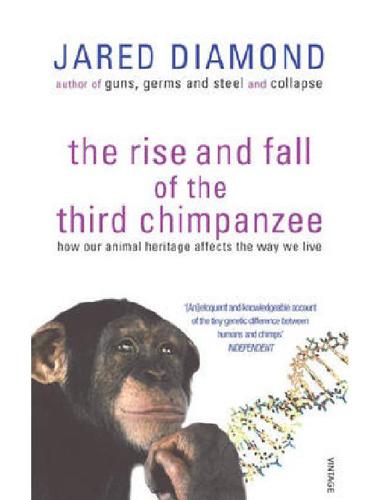
The Rise and Fall of the Third Chimpanzee
by
Jared Diamond
Published 2 Jan 1991
Today, environmentalists view people who exterminate species and destroy habitats as morally bad. Industrial societies have jumped at any excuse to denigrate pre-industrial peoples, in order to justify killing them and appropriating their land. Are the purported new finds about moas and Chaco Canyon vegetation just pseudo-scientific racism that in effect is saying, Maoris and Indians dp not deserve fair treatment because they were bad? What has to be remembered is that it has always been hard for humans to know the rate at which they can safely harvest biological resources indefinitely, without depleting them. A significant decline in resources may not be easy to distinguish from a normal year-to-year fluctuation.
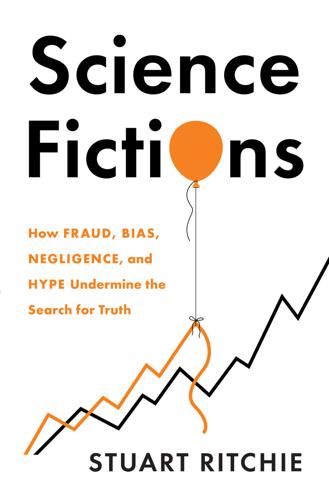
Science Fictions: How Fraud, Bias, Negligence, and Hype Undermine the Search for Truth
by
Stuart Ritchie
Published 20 Jul 2020
Huxley, ‘The Darwin Memorial’ (1885) Samuel Morton, the noted American physician and scientist, published a series of lavishly illustrated books in the 1830s and 1840s that described his measurements of hundreds of human skulls from all over the world.1 His method involved filling up the skull cavities with mustard seeds (and later, lead shot), then inferring how large the brain inside the skull must have been from the number of seeds or pellets he could cram inside.2 He concluded from his collection that the skulls of Europeans were more capacious than those of Asian, Native American and African people and argued that these differences showed the varying ‘mental and moral faculties’ of the different groups.3 Morton’s books, in which he also discussed his far-fetched theories about the entirely separate origins of different human races, were an international sensation and played a key role in the rise of scientific racism, the movement that attempted to split humans into a hierarchy of superior and inferior groups and helped fuel some of the worst horrors of the nineteenth and twentieth centuries. Along with the average differences by group, Morton provided copious data on his measurements of most of the skulls.
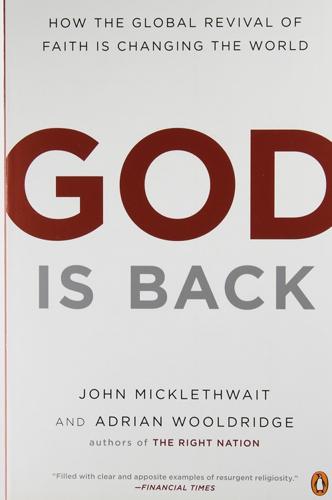
God Is Back: How the Global Revival of Faith Is Changing the World
by
John Micklethwait
and
Adrian Wooldridge
Published 31 Mar 2009
Communism didn’t just draw on Marx’s ideas. It also drew on Russian nationalism (“socialism in one country”) and on the cults of science and culture. Stalin was keen on using science to solve man’s problems and on exploiting culture to burnish Russian nationalism. Likewise, Nazism didn’t just draw on “scientific” racism. It also drew on German nationalism and German cultural chauvinism, worshipping German gods such as Thor and German artists such as Goethe and (particularly) Richard Wagner. Both Hitler and Stalin owed a debt to Hegel’s idea that freedom lies in the “realm of necessity”—submerging the individual’s will into the will of the collective—and that history’s purposes justify the crushing of individual rights.

Doppelganger: A Trip Into the Mirror World
by
Naomi Klein
Published 11 Sep 2023
It began in the lead-up to the Inquisition, with the burnings, torture, and then expulsion of Muslims and Jews; continued with the bloody conquest of the Americas and the ransacking of Africa for riches and human fuel to power the new colonies; wreaked colonial havoc in Asia; and then returned to Europe for Hitler to distill all of the methods forged in these earlier chapters—scientific racism, concentration camps, frontier genocide—into his Final Solution. But the story didn’t end there. Because the Allies, who finally saw fit to stop Hitler, decided that they did not want to open their borders to his surviving victims, and instead offloaded their Jewish problem, along with their collective shame and guilt about the Holocaust, onto the Arab world and said: “You take it.”
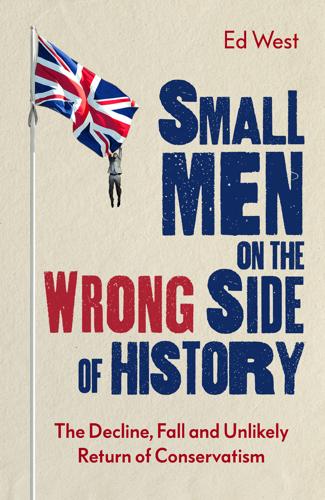
Small Men on the Wrong Side of History: The Decline, Fall and Unlikely Return of Conservatism
by
Ed West
Published 19 Mar 2020
Academic dominance by the Left, and the inevitable intolerance that accelerated in the twenty-first century, was already a reality. Britain’s great conservative philosopher Roger Scruton recalled going to speak at Glasgow University in the mid-1980s where he discovered on his arrival that the philosophy department had staged an official boycott on the charges of ‘scientific racism’. Forced to wander aimlessly around campus until the organisers could find a room for him to use, he watched a ‘desultory procession of apparatchiks’ conferring an honorary degree on Zimbabwean leader Robert Mugabe, already at this stage responsible for mass murder, although he hadn’t quite become the wild-eyed geriatric madman of later years.1 Scruton’s crime was to have founded the Salisbury Review, a tiny conservative magazine that caused huge controversy in 1984 by publishing a Bradford headmaster called Ray Honeyford, who argued that multicultural policies were causing segregation to worsen.
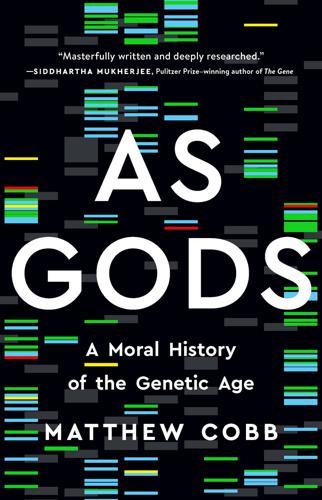
As Gods: A Moral History of the Genetic Age
by
Matthew Cobb
Published 15 Nov 2022
As Benjamin Hurlbut has put it: ‘Far from “going rogue” and rejecting the norms and expectations of his professional community, JK [He] was guided by them.’5 In a series of discussions with Hurlbut after the scandal broke, He Jiankui – then under house arrest – explained that he had the impression that US colleagues saw Chinese science as second class. He said he felt ‘disgust’ in 2015 when US scientists criticised Huang’s report of the first gene editing of human embryos and it was rejected by leading journals; this then turned to a feeling that there was ‘scientific racism against the Chinese’ when in 2017 Mitalipov’s experiment was not only published in Nature but was widely praised.6 What occurred in 2018 was almost inevitable. In 2015 the New York Times reported the words of Dr Yi Raoi of Beijing University regarding the lack of ethical oversight in China: ‘The more technology we have, the more dangerous we are to ourselves and entire humankind.… Right now, human gene editing is the main thing’ Mr Yi said.

The Quiet Coup: Neoliberalism and the Looting of America
by
Mehrsa Baradaran
Published 7 May 2024
The Nazi Party had given Germans a unifying national myth “that claimed to explain whole trends of history” and that took root in disorienting and unpredictable times. The hubris of social Darwinism ended with the efficient and scientific mass murder of Jews and other undesirables by the “superior race.” So much savagery disguised as progress. After the Allied victory, pseudo-scientific racism and state-supported eugenics programs, which were British and American innovations, were abandoned without fanfare. The steady self-assured rise of Western Europe gave way to destruction and vertigo. How had the “rational” and “civilized” men of Locke’s imagination turned away so dramatically from Enlightenment ideals toward totalitarianism?

Ghosts of Empire: Britain's Legacies in the Modern World
by
Kwasi Kwarteng
Published 14 Aug 2011
So young officers who came ‘fresh to the province’ saw what their seniors were doing and were ‘apt to fall into the same habits’.11 The threat of no promotion was actually carried out by Charles Bernard, who passed over three senior district superintendents for the job of inspector general of police, one of them – a Major Litchfield – because had ‘formed and maintained immoral connections with a native of the country’. The British tended to be pragmatic about such things, however. There is no hint, in the official papers at least, of any of the ‘scientific racism’ or fears of ‘miscegenation’ which were common elsewhere in the later part of the nineteenth century. Sir Charles Crosthwaite, the arch-Conservative, who thought that Lloyd George and Churchill were cads and loathed the 1909 ‘People’s Budget’, was typically practical on the issue. Writing at the end of 1888 to Herbert Thirkell White, Crosthwaite was frank: ‘There is no doubt that many men in Burma keep Burman women.’

Unfinished Empire: The Global Expansion of Britain
by
John Darwin
Published 12 Feb 2013
Law, language, institutions and beliefs, not physical attributes, were what held peoples back or encouraged them forward. The most influential Social Darwinist of the 1890s and after, Benjamin Kidd (1858–1916), rejected biological arguments for the ‘social efficiency’ that explained European primacy.13 ‘Scientific racism’ was a convenient addition, not the nub of the argument. As a result, social evolution left room for quite different responses to the British encounter with non-Western peoples. Disillusionment with the results of ending black slavery, the great Indian rebellion and the tepid if not hostile response to British missionary efforts persuaded many observers that order and progress in non-Western societies required the forceful assertion of British authority.
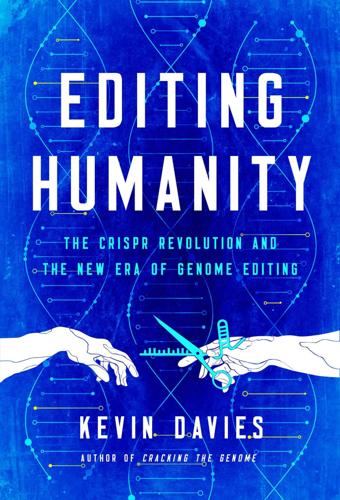
Editing Humanity: The CRISPR Revolution and the New Era of Genome Editing
by
Kevin Davies
Published 5 Oct 2020
Two years earlier, American scientists had rushed to condemn China’s initial exploration of human embryo editing, which had used nonviable embryos, but here they were basking in the media spotlight with an article in Nature, no less, using viable embryos, without anything like the same criticism. JK charged this was a double standard, nothing less than “scientific racism against the Chinese.”27 Feeling a sense of patriotic duty, JK was emboldened to push on. * * * In mid-2017, JK started talking to Lombardi about the idea of launching a gene-editing company. He wanted to hire a CEO for Direct Genomics so he could free up time to focus on the science of gene editing.
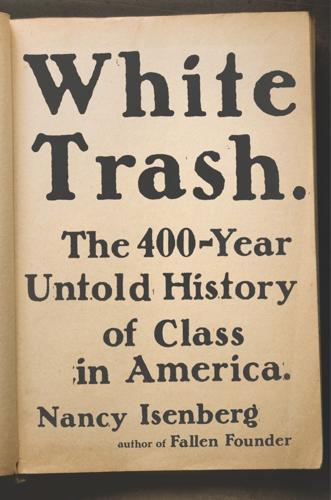
White Trash: The 400-Year Untold History of Class in America
by
Nancy Isenberg
Published 20 Jun 2016
Nott, “The Mulatto a Hybrid—Probable Extermination of the Two Races If the Whites and Blacks Are Allowed to Intermarry,” Boston Medical and Surgical Journal, August 16, 1843; also see Reginald Horsman, Josiah Nott of Mobile: Southerner, Physician, and Racial Theorist (Baton Rouge: Louisiana State University Press, 1987). 12. See “Literary Notices,” Northern Light, September 2, 1844; Horsman, “Scientific Racism and the American Indian at Mid-Century,” American Quarterly 27, no. 2 (May 1975): 152–68. 13. “Inaugural Address 1836,” in First Congress—First Session. An Accurate and Authentic Report of the Proceedings of the House of Representatives. From the 3d of October to the 23d of December, by M.
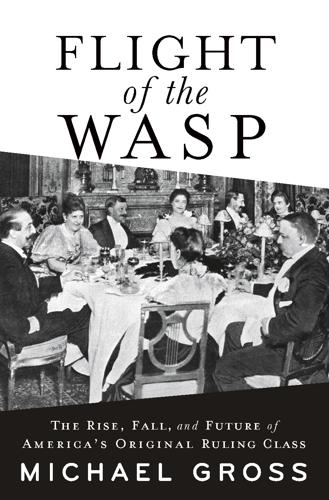
Flight of the WASP
by
Michael Gross
Less than a decade earlier, Georges Vacher de Lapouge, a French anthropologist, had hailed the northerners he credited with European and American enterprise and love of liberty.71 Osborn felt that “what we call the lowest races” also had positive traits worth encouraging, but the imprimatur of his sponsorship made Grant’s “scientific racism” respectable when The Passing of the Great Race was published a year after Scribner’s had released Osborn’s latest book.j Grant fed the worst in Osborn’s character at the very moment his focus turned from dinosaur bones to those of humans. Both men worried that the WASP might go the way of the American bison.
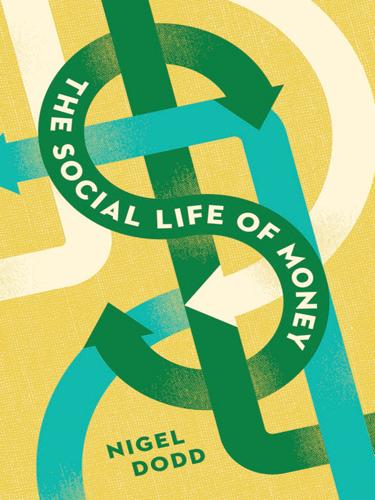
The Social Life of Money
by
Nigel Dodd
Published 14 May 2014
He distinguished between Nutzgeld, or useful objects used in exchange, and Zeichengeld, or objects of conventional form, practically useless, mere tokens of value (Thilenius 1921; Quiggin 1949: 3). Quiggin notes further relevant distinctions, such as those drawn by Albert Terrien de Lacouperie (1845–1894) between Naturgeld, Handelsgeld, und Industriegeld, and by George Montandon (1879–1944)—an advocate, incidentally, of scientific racism—between natural money and money of civilization (or “cultural money”). Tellingly in light of our discussion of origin myths in Chapter 1, each distinction seems to be grappling with the idea that some forms of money are closer to nature, or to what is essentially useful, whereas others tend to be closer to civilization, and are abstract.
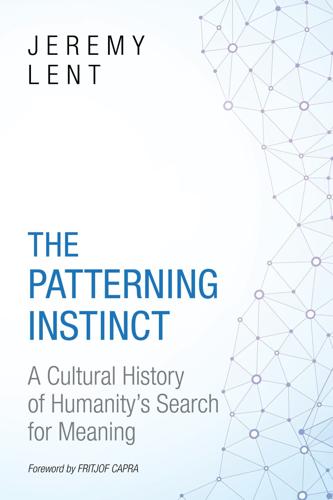
The Patterning Instinct: A Cultural History of Humanity's Search for Meaning
by
Jeremy Lent
Published 22 May 2017
With science replacing Christianity as a framework for making sense of the world, leading European thinkers showed great dexterity in appropriating the new way of thinking as further justification for world domination. The early-nineteenth-century French naturalist George Leopold Cuvier contributed to a newly emerging field of scientific racism by declaring that “the Caucasian race has given rise to the most civilized nations, to those which have generally held the rest in subjection.”59 Early affirmations of Caucasian racial superiority were given a more robust platform with the publication in 1859 of Darwin's theory of evolution.
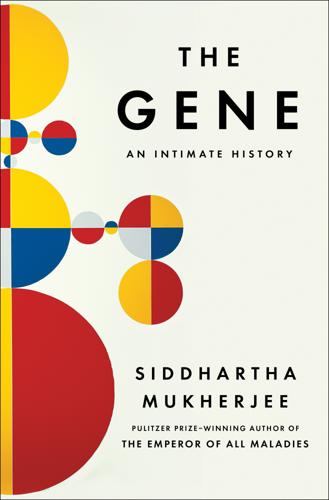
The Gene: An Intimate History
by
Siddhartha Mukherjee
Published 16 May 2016
There has therefore been too little time for the accumulation of substantial divergence.” That extraordinary last statement was written to address the past: it is a measured scientific retort to Agassiz and Galton, to the American eugenicists of the nineteenth century, and to the Nazi geneticists of the twentieth. Genetics unleashed the specter of scientific racism in the nineteenth century. Genomics, thankfully, has stuffed it back into its bottle. Or, as Aibee, the African-American maid, tells Mae Mobley plainly in The Help, “So, we’s the same. Just a different color.” In 1994, the very year that Luigi Cavalli-Sforza published his comprehensive review of race and genetics, Americans were convulsing with anxiety around a very different kind of book about race and genes.
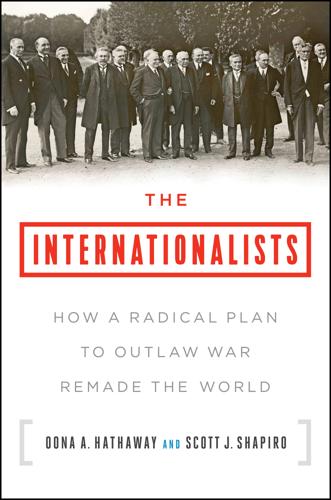
The Internationalists: How a Radical Plan to Outlaw War Remade the World
by
Oona A. Hathaway
and
Scott J. Shapiro
Published 11 Sep 2017
On his demented worldview, the German people were entitled to Eastern lands because they were superior to Slavs. Just as humans used animals for their own purposes, Aryans have conquered inferior races to achieve their cultural greatness. Though clearly an anti-Semite, Schmitt did not subscribe to the Nazi version of “scientific racism.” He did not think that Jews belong to a lower life form that must be enslaved, exiled, or eradicated. When Hitler began to execute his plan—annexing Austria and conquering Czechoslovakia—Schmitt scrambled to justify, or at least describe, Hitler’s new aggressive foreign policy in his own terms.
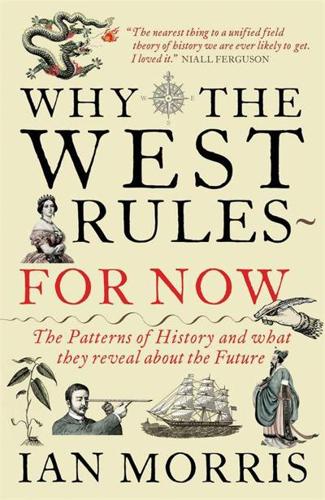
Why the West Rules--For Now: The Patterns of History, and What They Reveal About the Future
by
Ian Morris
Published 11 Oct 2010
The bottom line is sex. If modern humans replaced Neanderthals in the Western Old World and Homo erectus in the Eastern regions without interbreeding, racist theories tracing contemporary Western rule back to prehistoric biological differences must be wrong. But was that what happened? In the heyday of so-called scientific racism in the 1930s, some physical anthropologists insisted that modern Chinese people were more primitive than Europeans because their skulls had similarities (small ridges on top, relatively flat upper faces, nonprotruding jaws, shovel-shaped incisors) to those of Peking Man. So, too, these anthropologists pointed out, the skulls of Australia’s indigenous peoples had similarities—ridges around the back for attaching neck muscles, shelflike brows, receding foreheads, large teeth—with those of Indonesian Homo erectus a million years ago.

The Empire Project: The Rise and Fall of the British World-System, 1830–1970
by
John Darwin
Published 23 Sep 2009
But they were wholly committed to the moral obsessions of Victorian society, and its strictures on gender, the place of the family and the treatment of women.132 Few mid-Victorians would have resisted the claim – however romantic their views – that ‘commercial’ societies like their own were richer and stronger because their institutions and mores favoured the advancement of knowledge and technology. The common ingredient of most of these attitudes was a vulgar conception of ‘race’ – not a scientific racism but a catch-all presumption that variations in skin-shade, religion and climate were an accurate predictor of civilisational capacity. Some Victorians discovered by personal experience the limitations of this theory, but not very many. These trends in British society were part of the story.

The Pursuit of Power: Europe, 1815-1914
by
Richard J. Evans
Published 31 Aug 2016
Taken to fresh extremes by the composer Richard Wagner’s son-in-law, the Germanophile Englishman Houston Stewart Chamberlain (1855–1927), in his 1899 book The Foundations of the Nineteenth Century, these ideas became the vehicle for a racialized antisemitism, in which the Jew was portrayed as the eternal enemy of the pure-bred Aryan, and Jesus Christ was portrayed as an Aryan and not a Jew. Scientific racism arranged racial types on an evolutionary scale and implied that mixing them together would pull what were now increasingly known as the ‘higher races’ down to the level of the ‘lower’ ones. Contemplating the British Empire and its history, Pearson declared: History shows me one way, and one way only, in which a high state of civilization has been produced, namely, the struggle of race with race, and the survival of the physically and mentally fitter race.

The Rough Guide to Brazil
by
Rough Guides
Published 22 Sep 2018
Although over-long – judicious skipping is in order – it is very accessible to the general reader, interesting and often moving. RACE Thomas E. Skidmore Black into White: Race and Nationality in Brazilian Thought (Duke UP). First published in 1974, this revised edition has a preface that updates the book to the 1990s. A landmark in the intellectual history of Brazilian racial ideology, examining scientific racism and the Brazilian intellectual elite’s supposed belief in assimilation and the ideal of whitening. France W. Twine Racism in a Racial Democracy (Rutgers UP). Fascinating ethnography of racism in a small Brazilian town, by a black American sociologist interested in the differences between Brazilian and American racial politics.
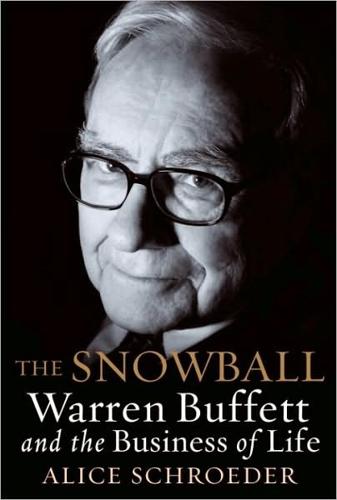
The Snowball: Warren Buffett and the Business of Life
by
Alice Schroeder
Published 1 Sep 2008
Nevertheless, some remnants of the eugenics movement remained alive, and by the millennial era, developments in genetic, genomic, and reproductive science had raised complicated questions about the idea. 52. The historic linkage between “population control,” the eugenics movement, and racism is detailed by Allan Chase in The Legacy of Malthus: The Social Costs of the New Scientific Racism (New York: Alfred A. Knopf, 1977). While a full treatment of these issues is beyond the scope of this book, what seems clear, from his change in terminology, steering of the Buffett Foundation, and gradual distancing from the Hardin camp, was Buffett’s disenchantment with the Malthusian views of Hardin because of their eugenics implications.